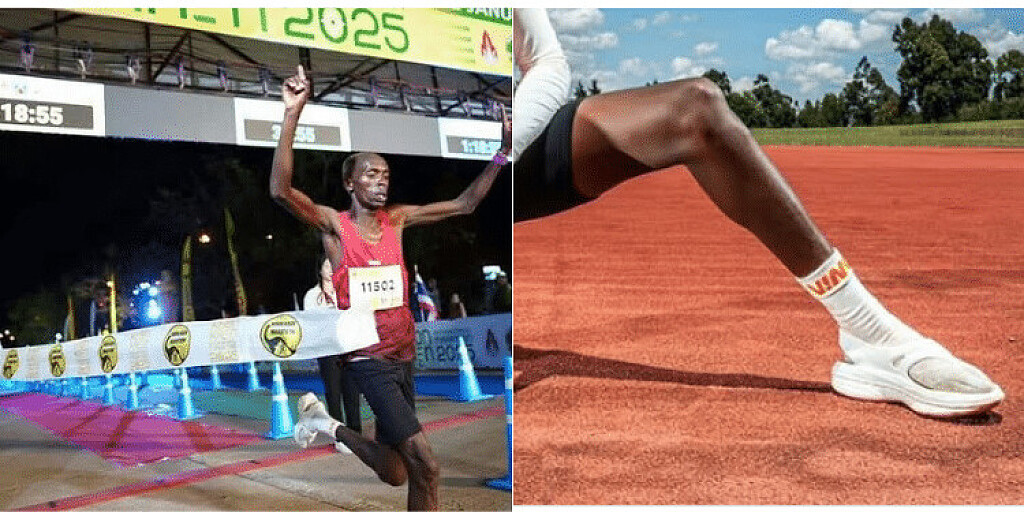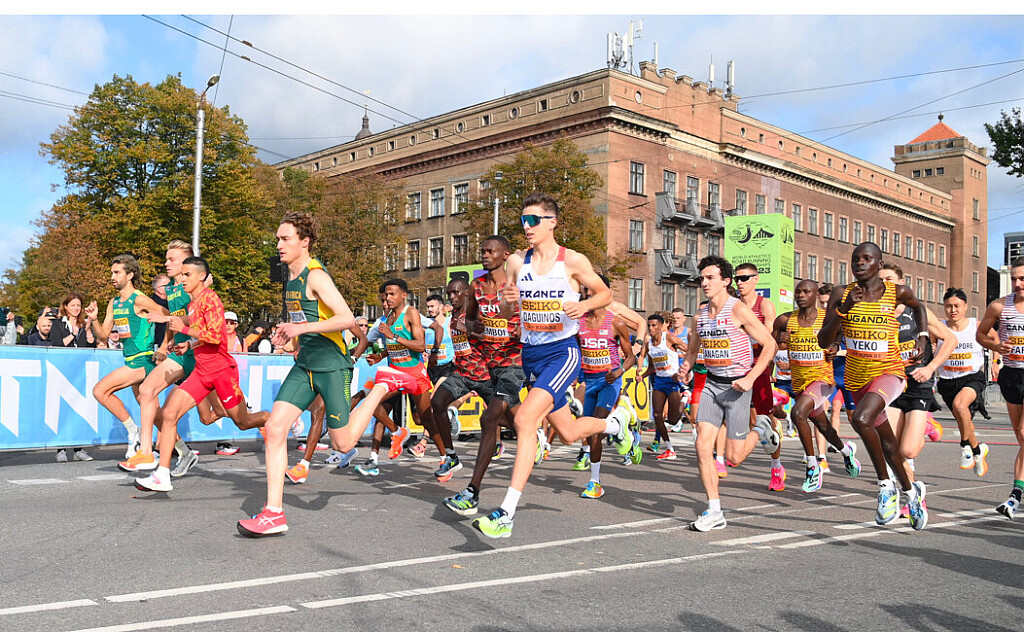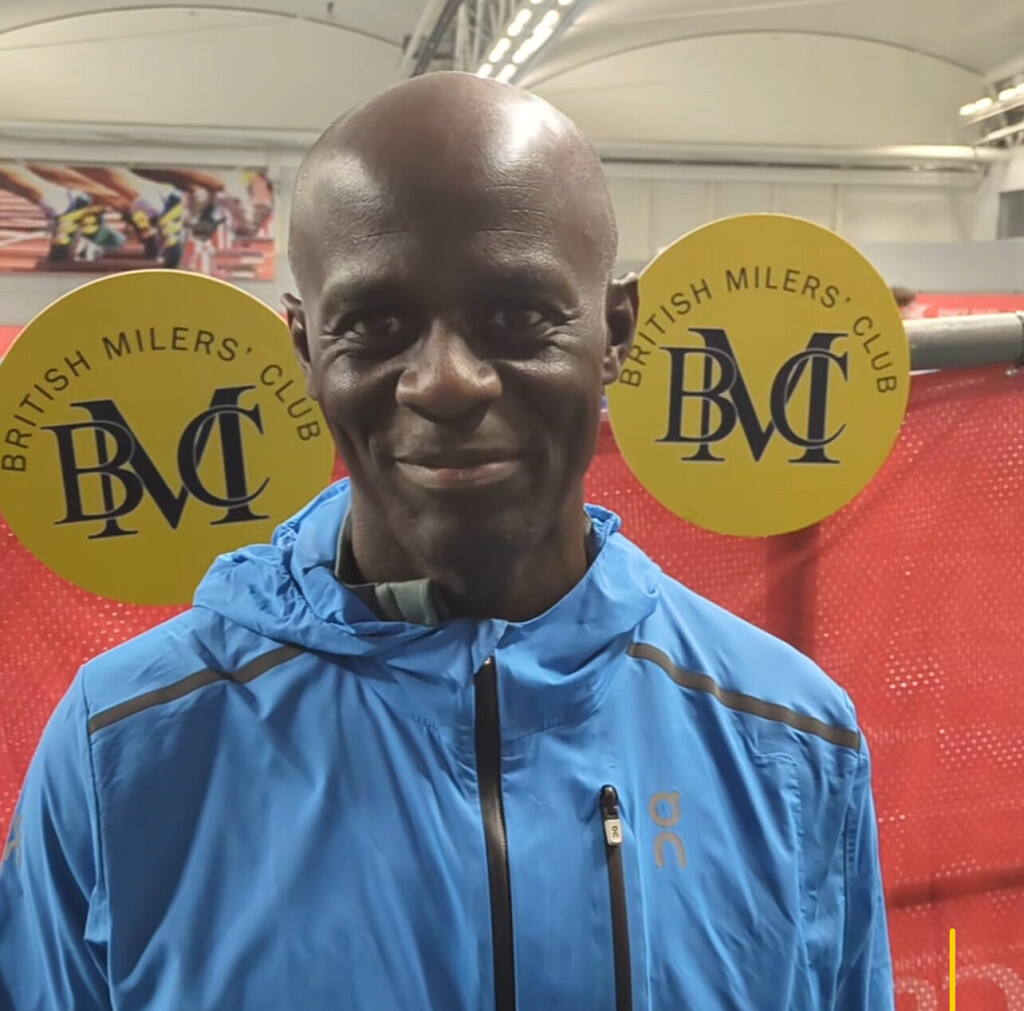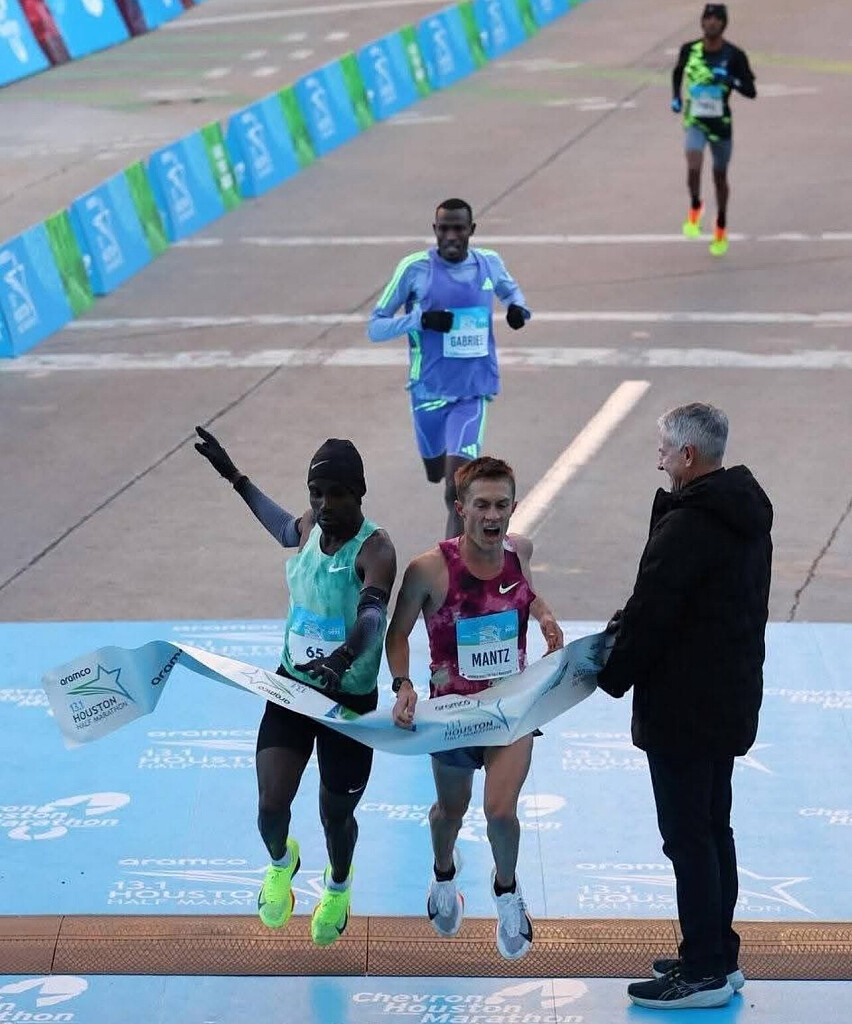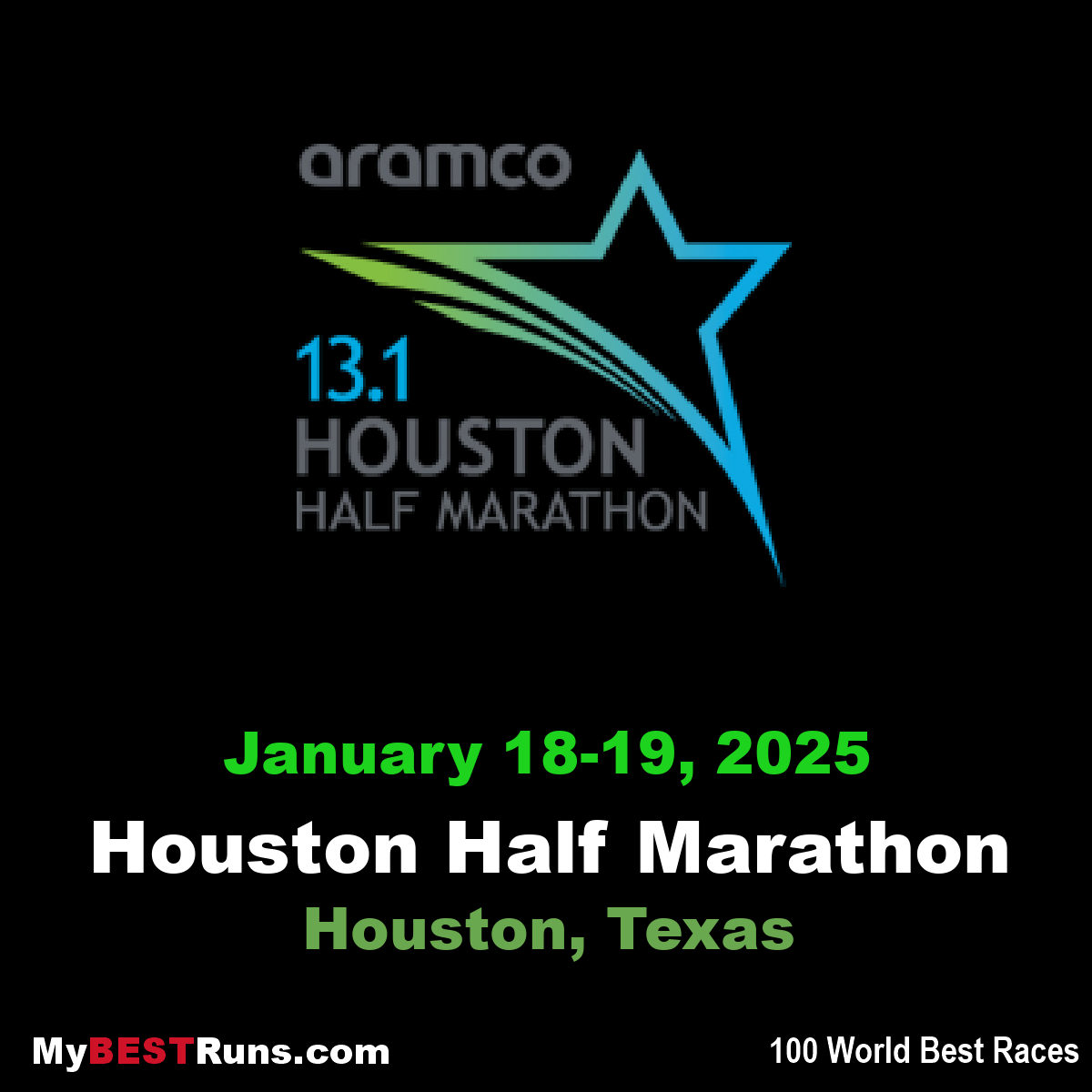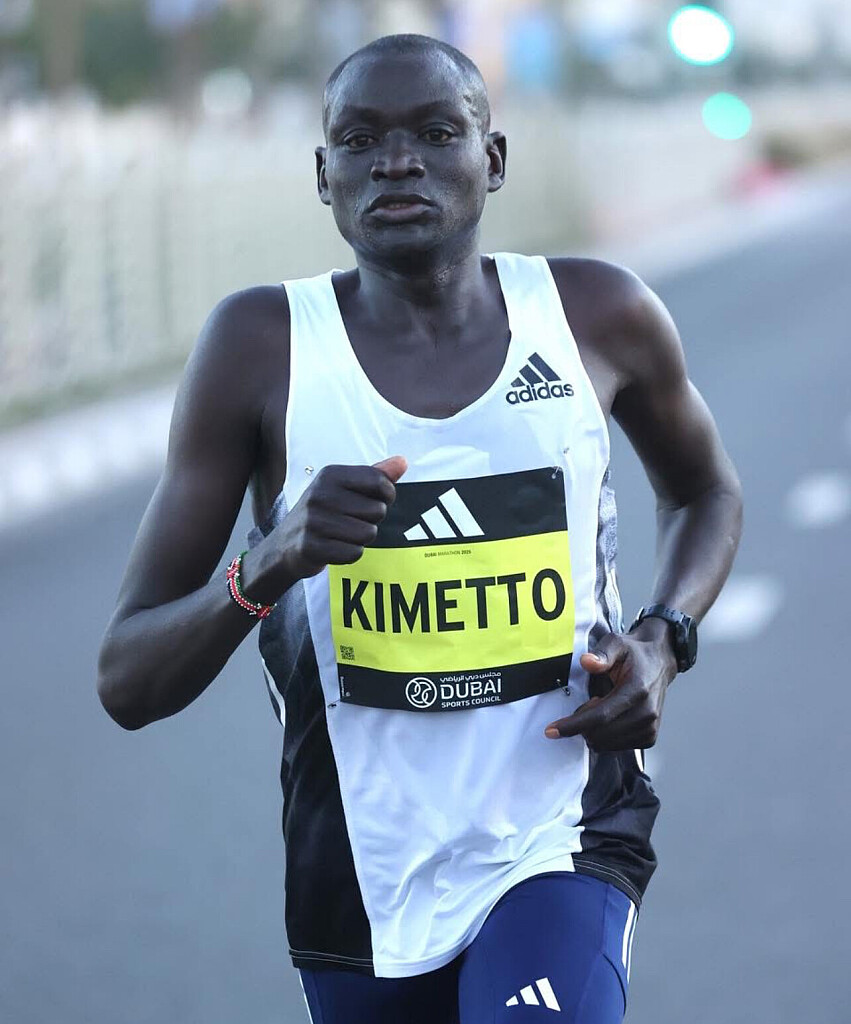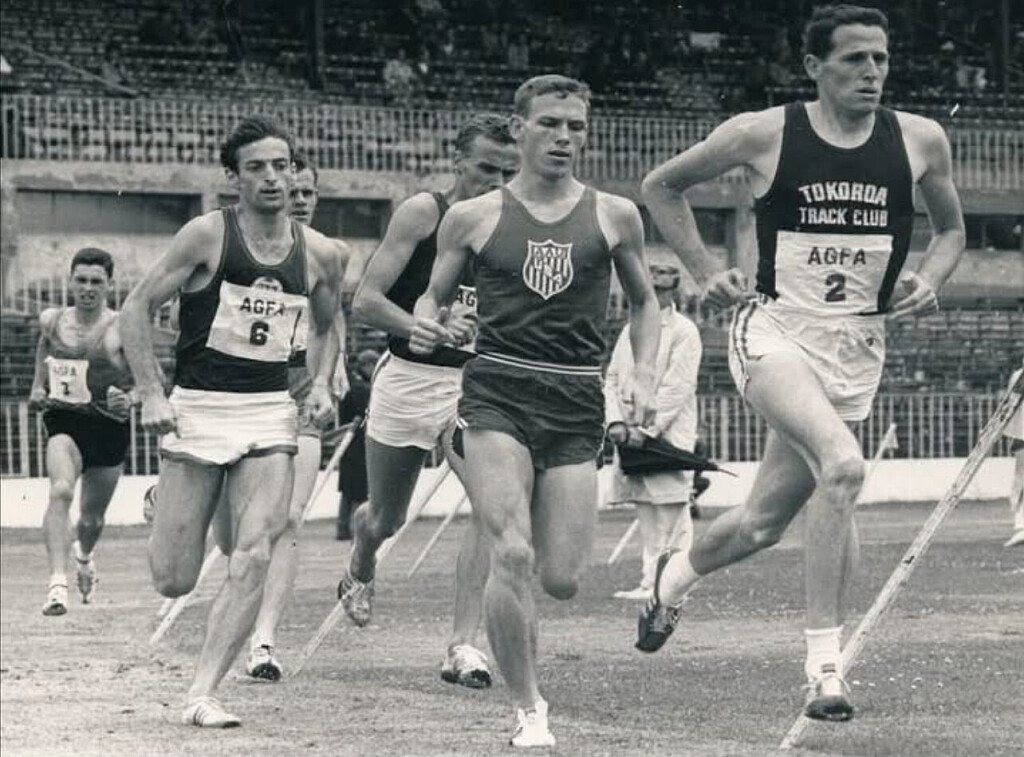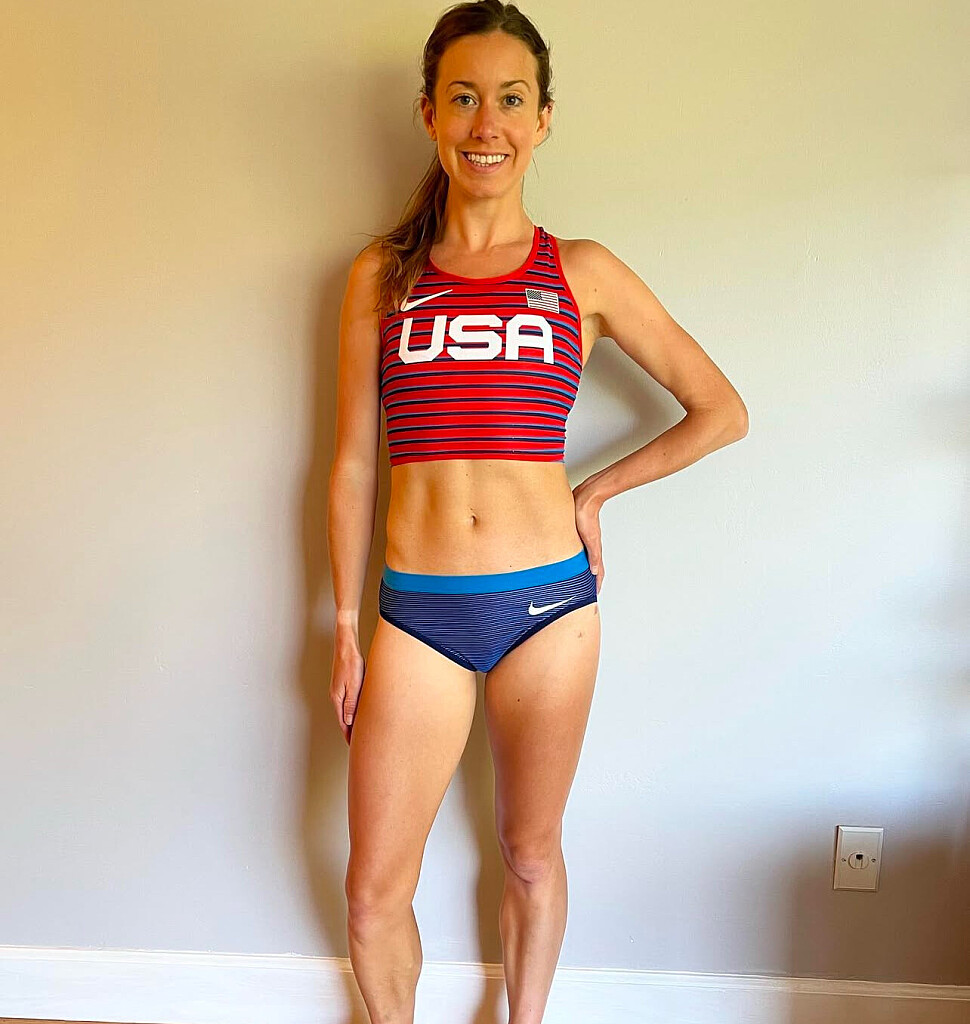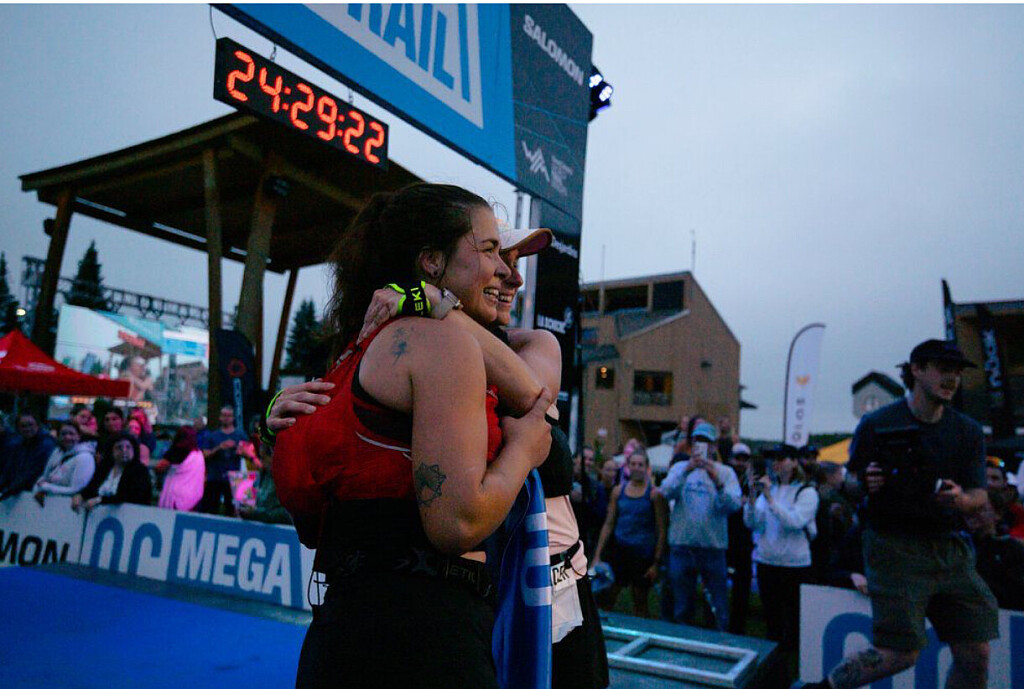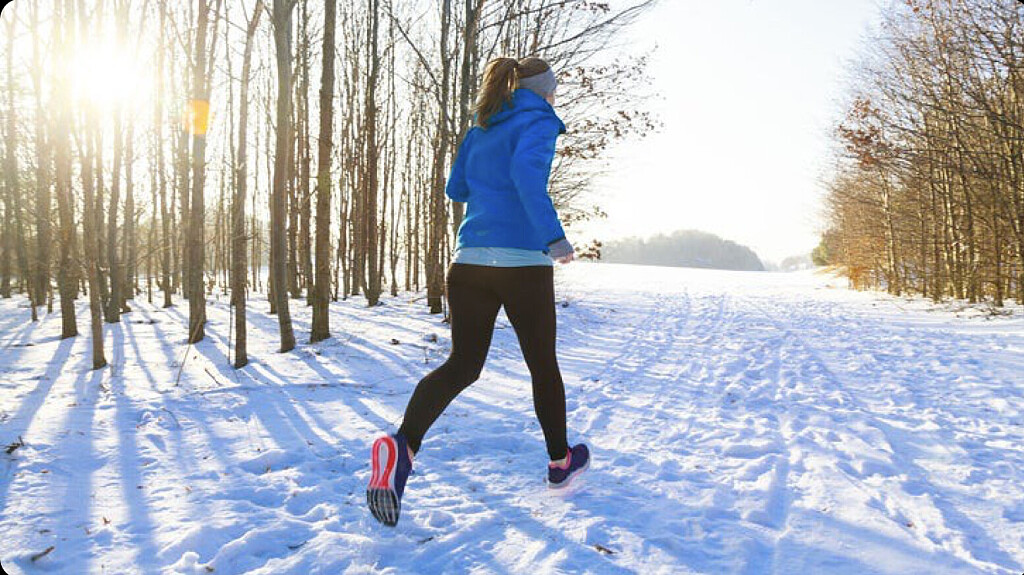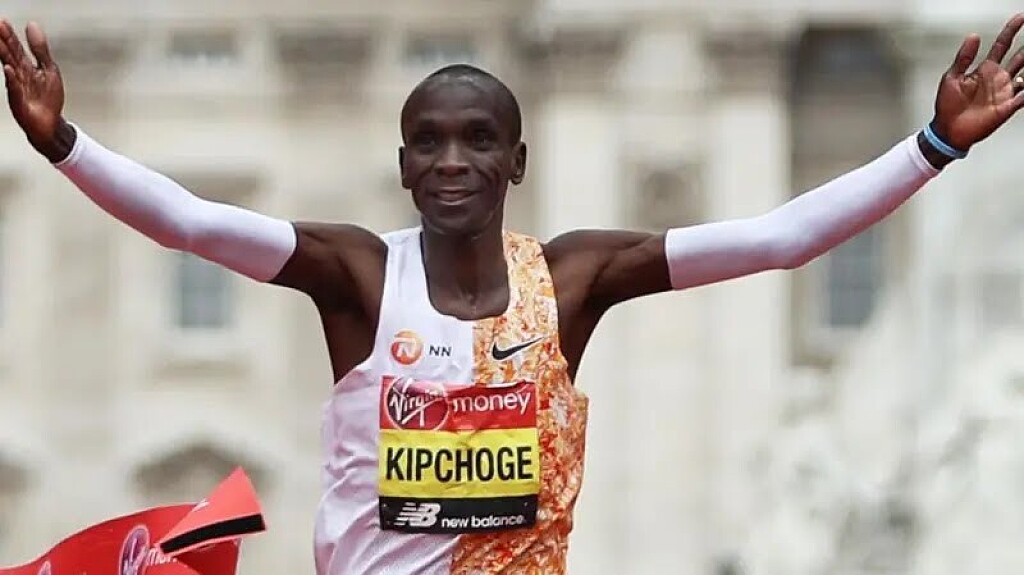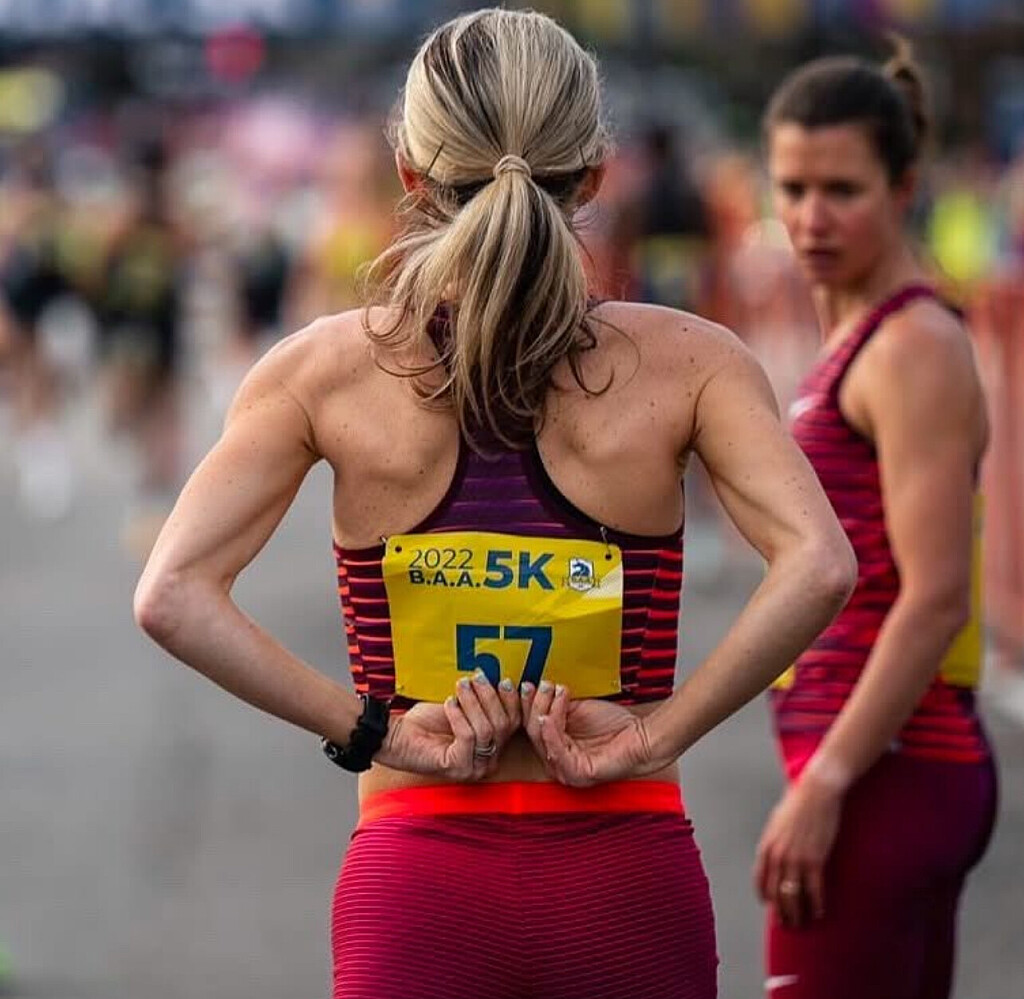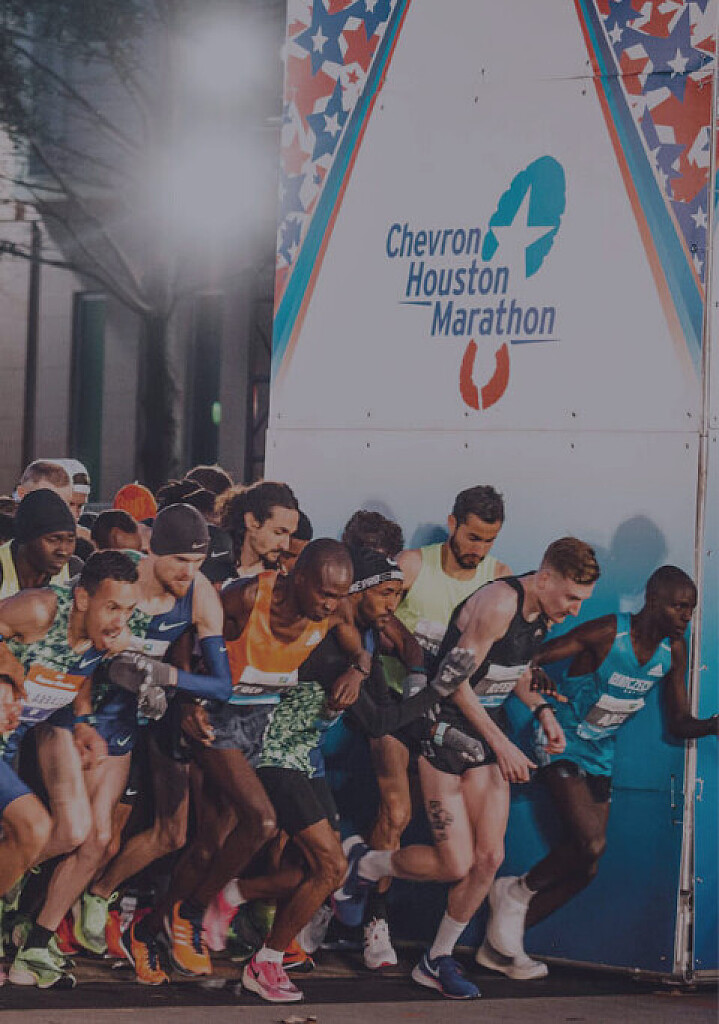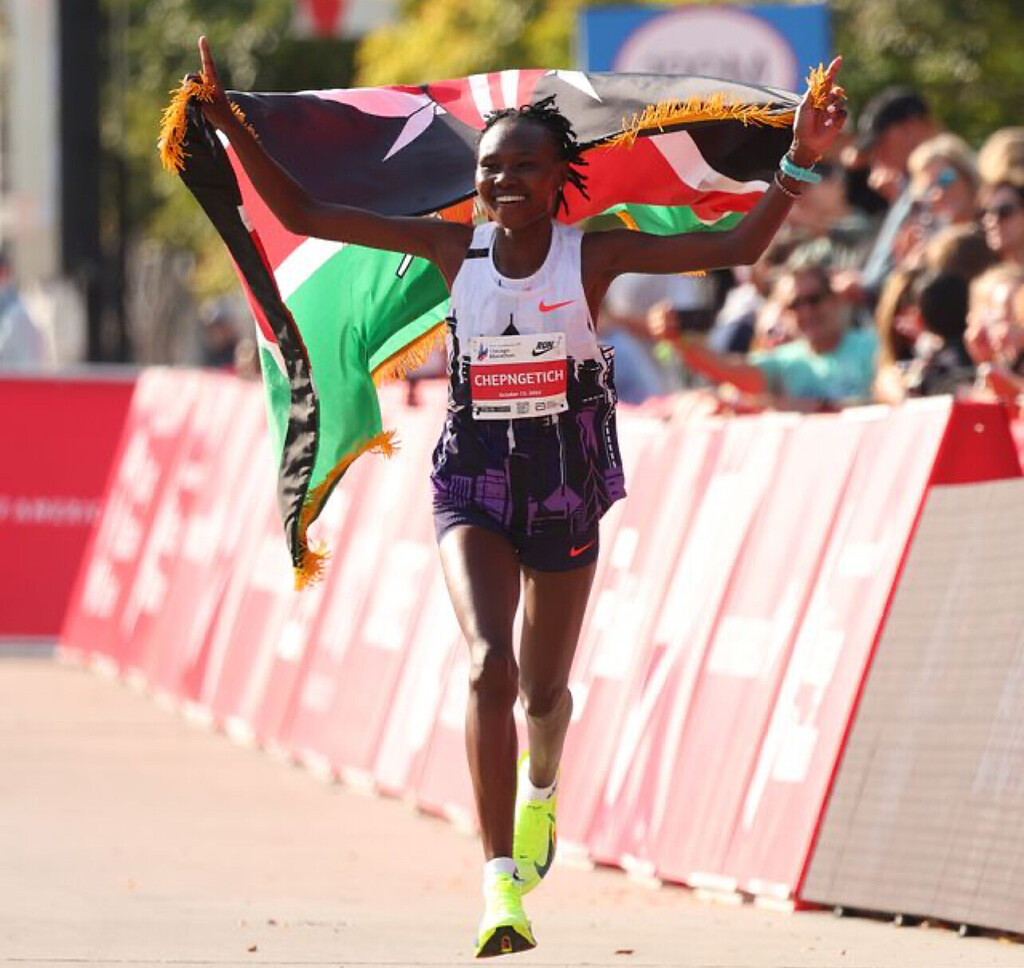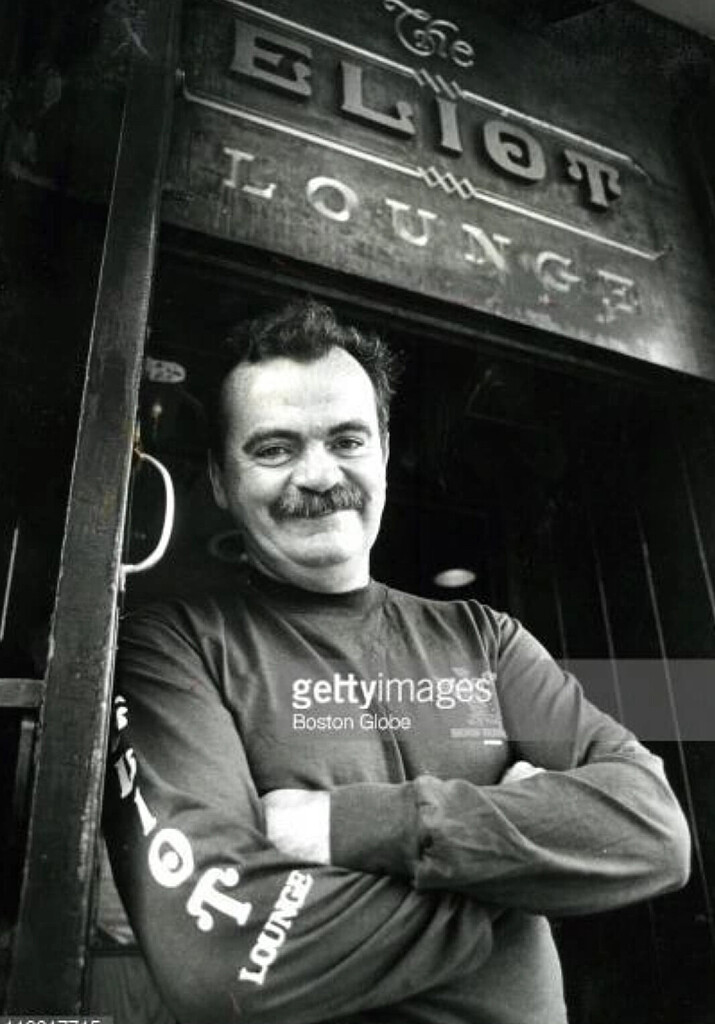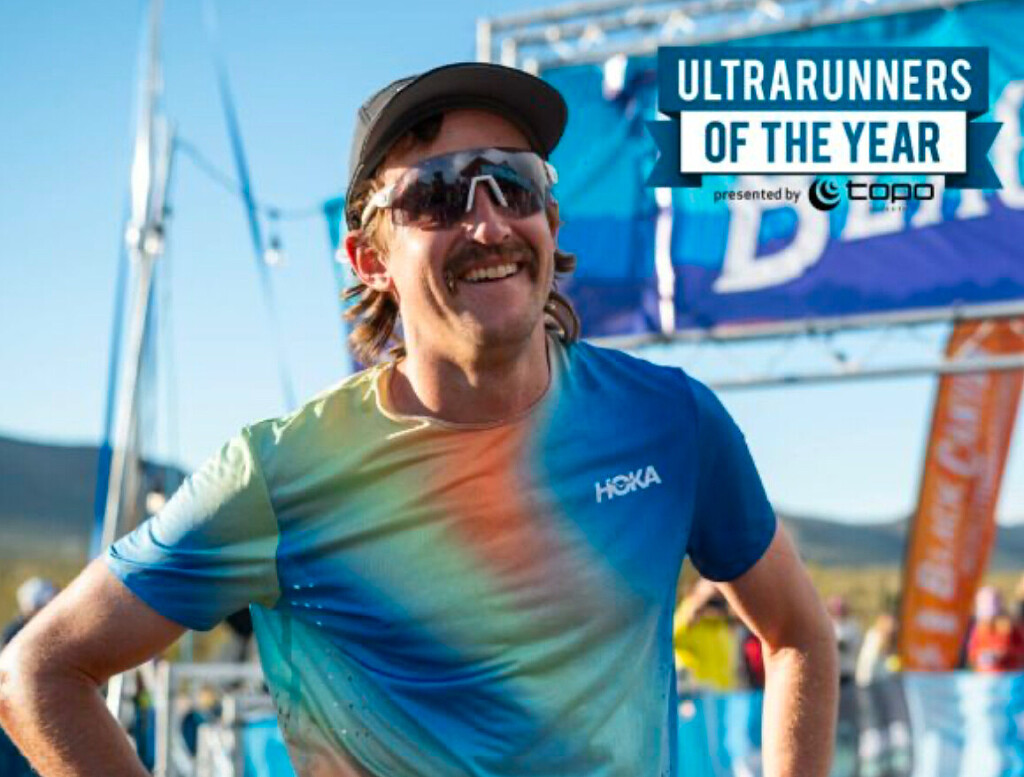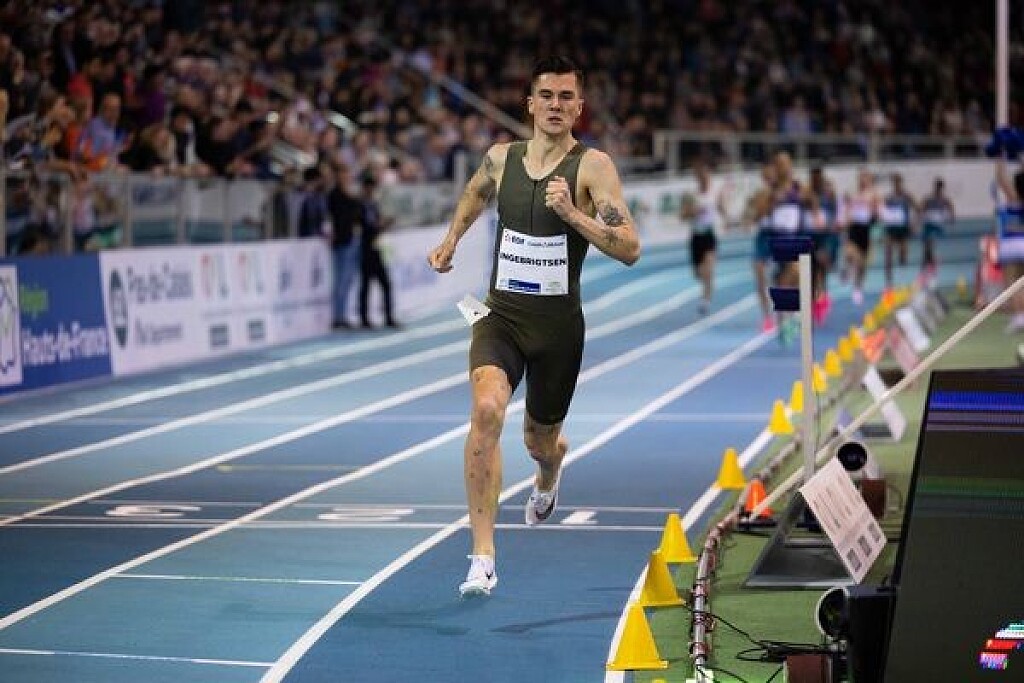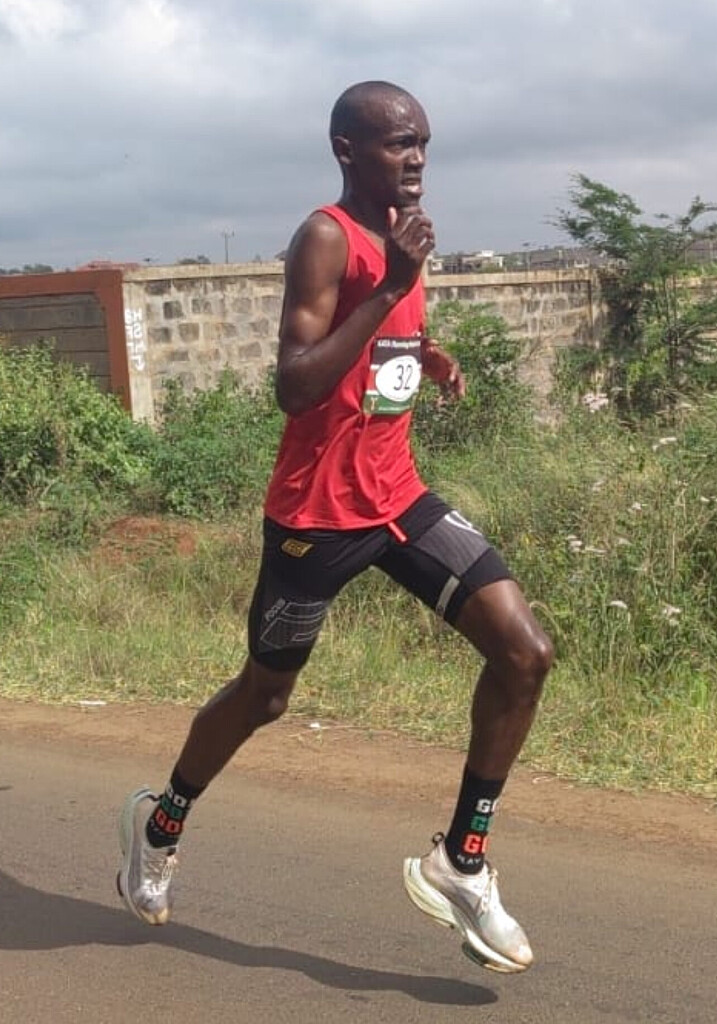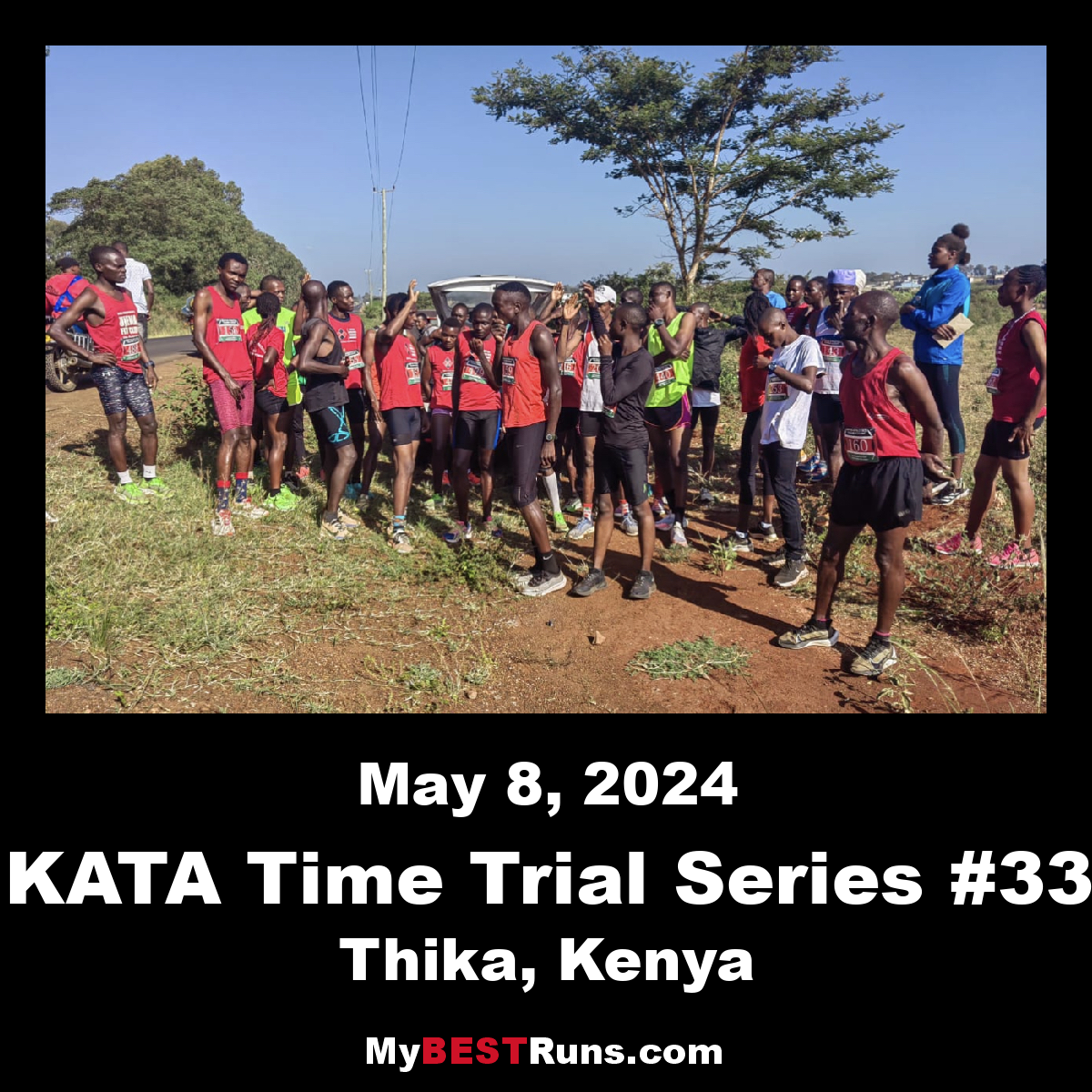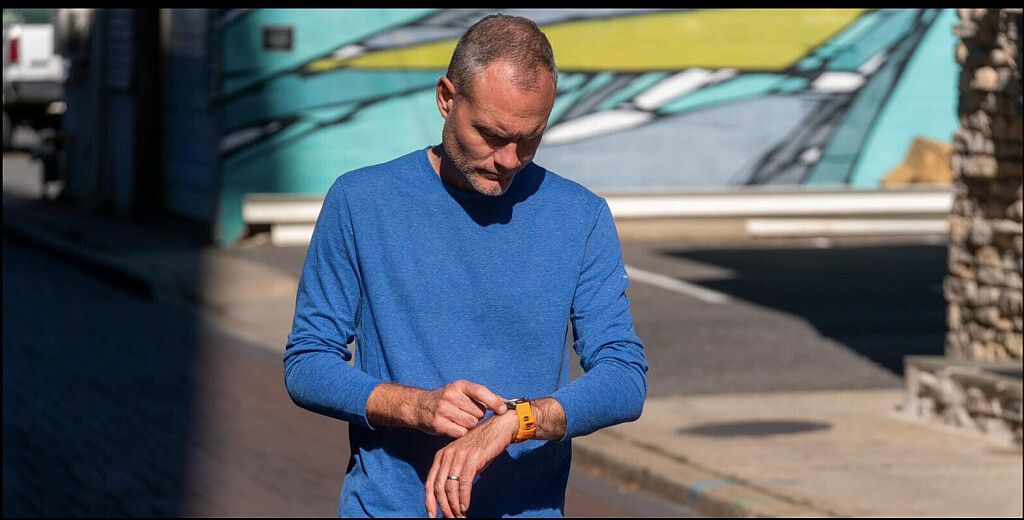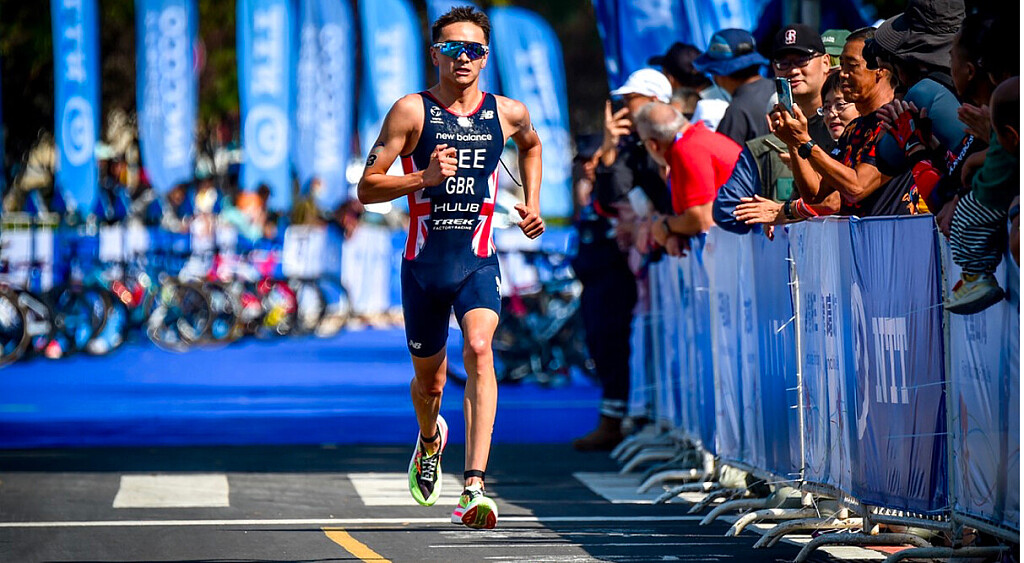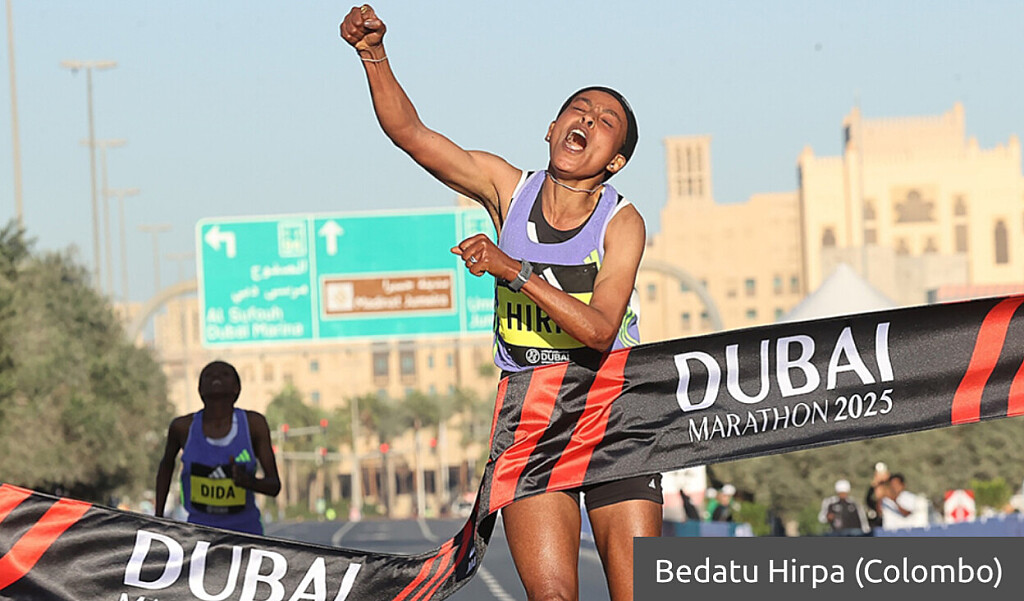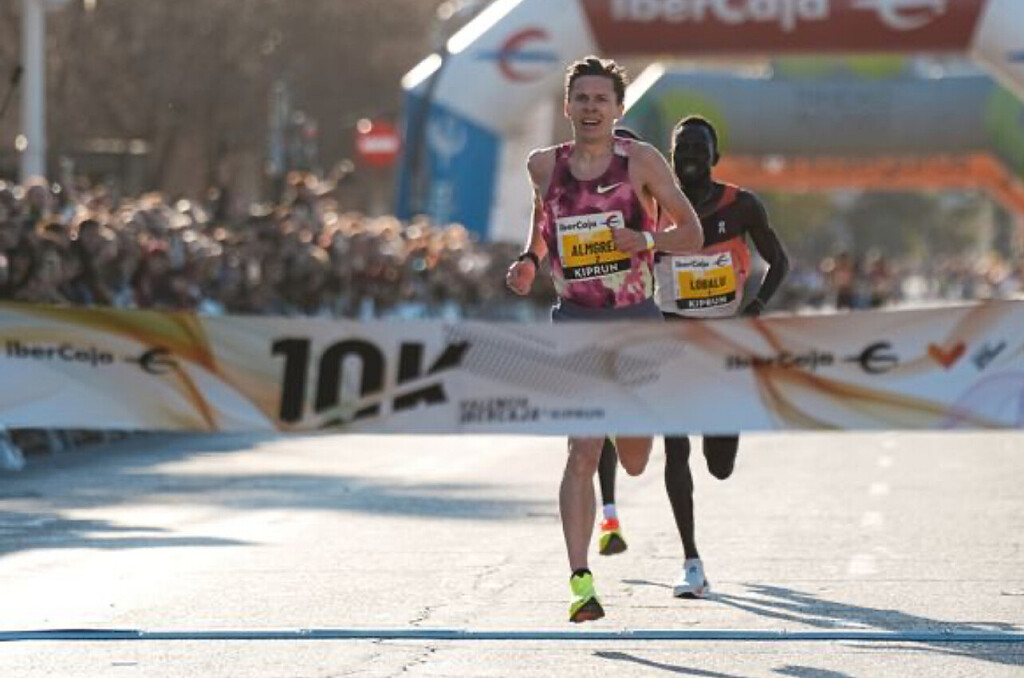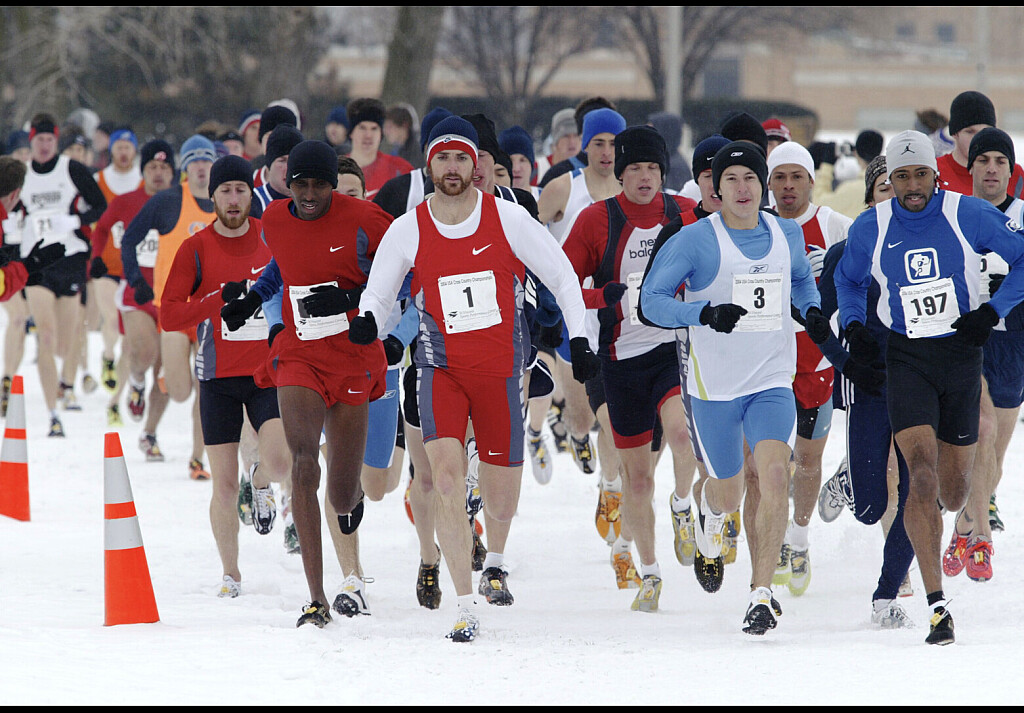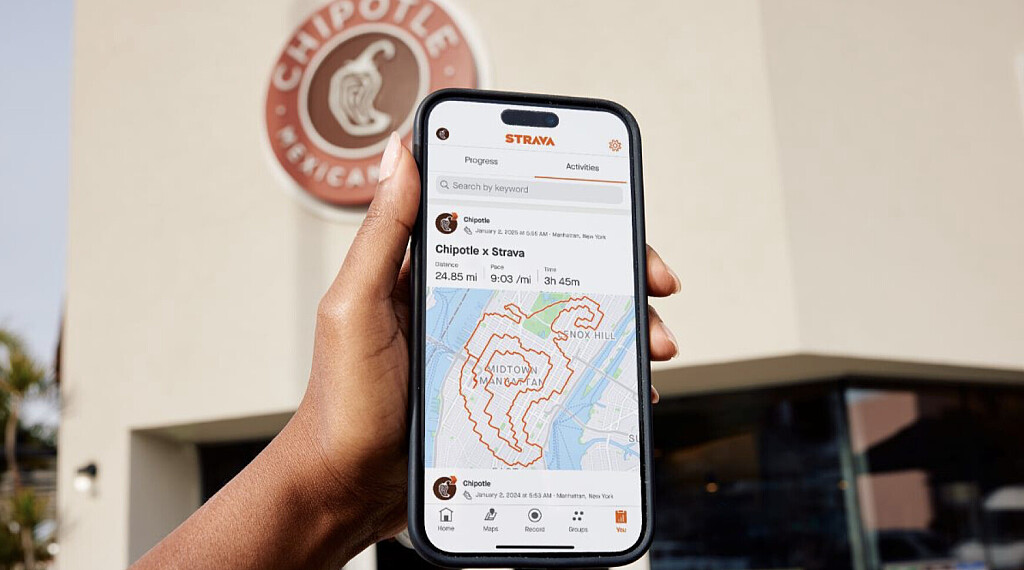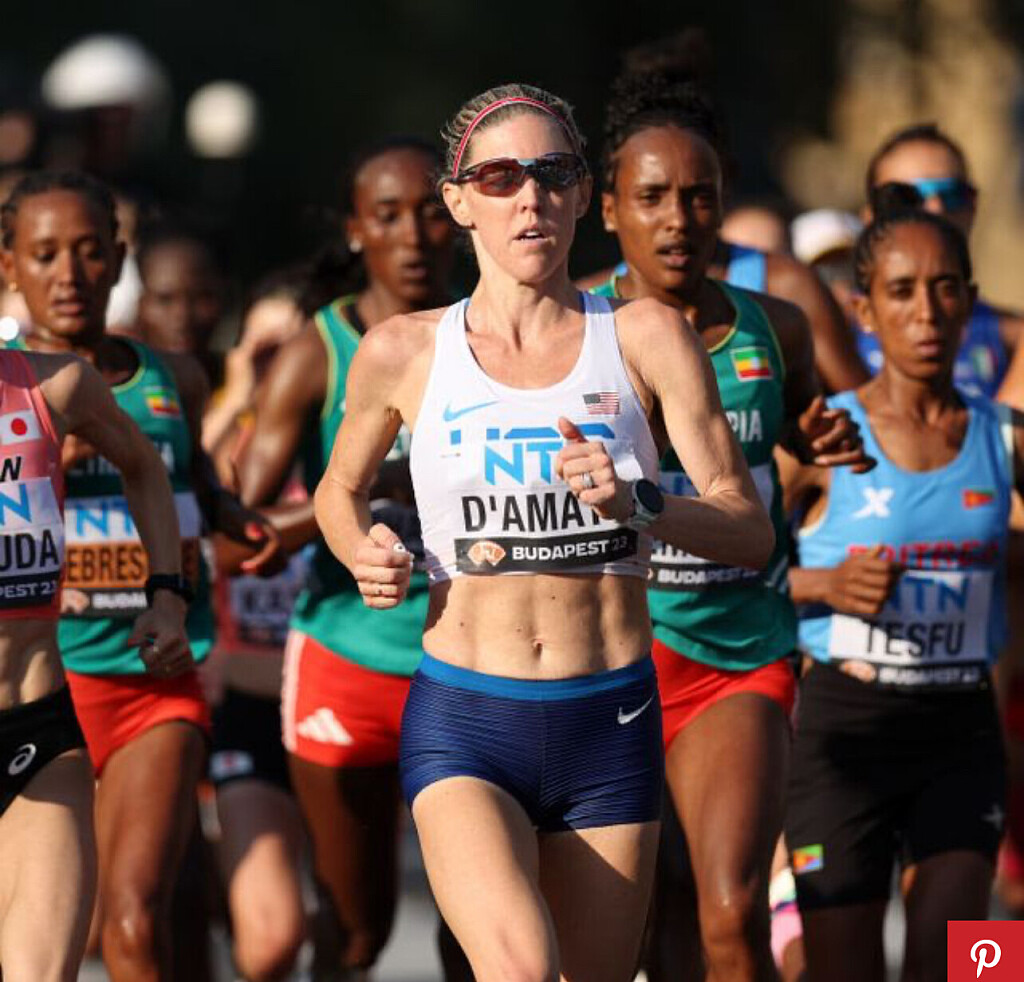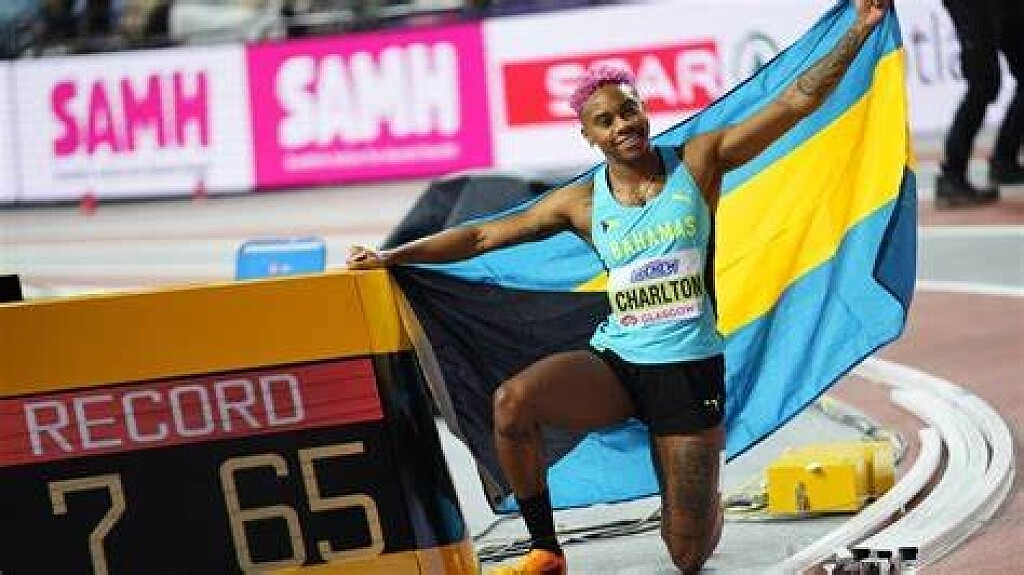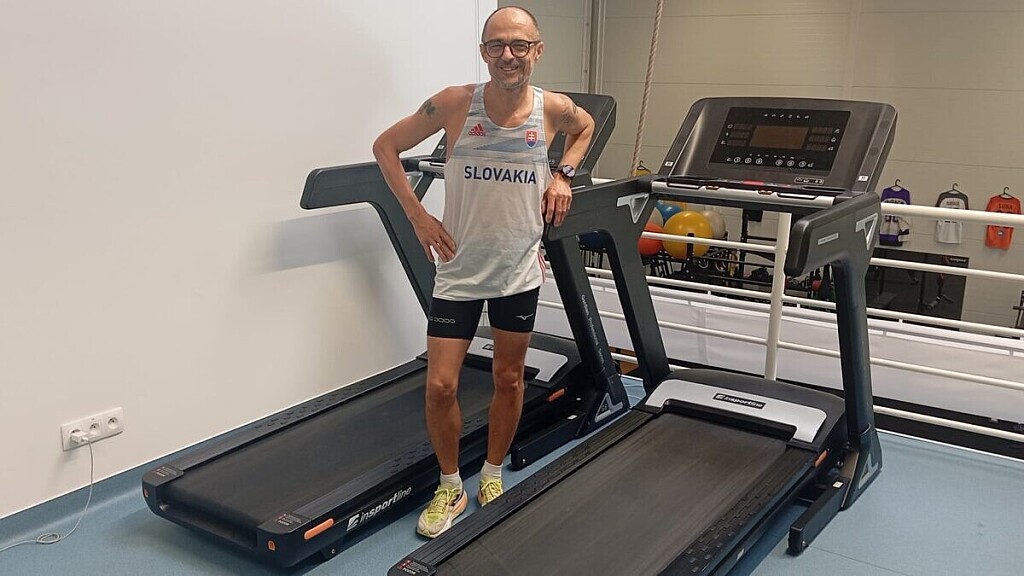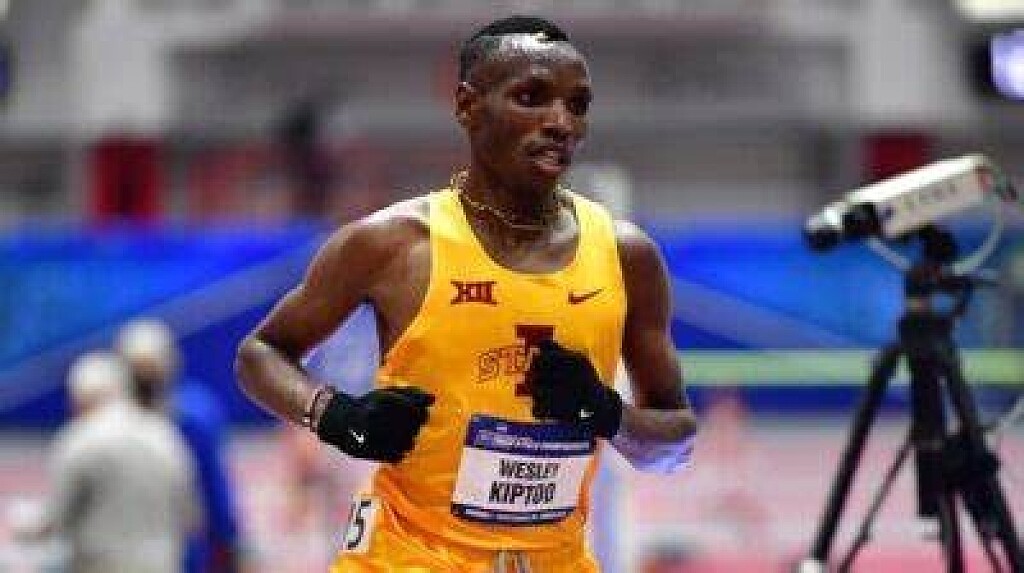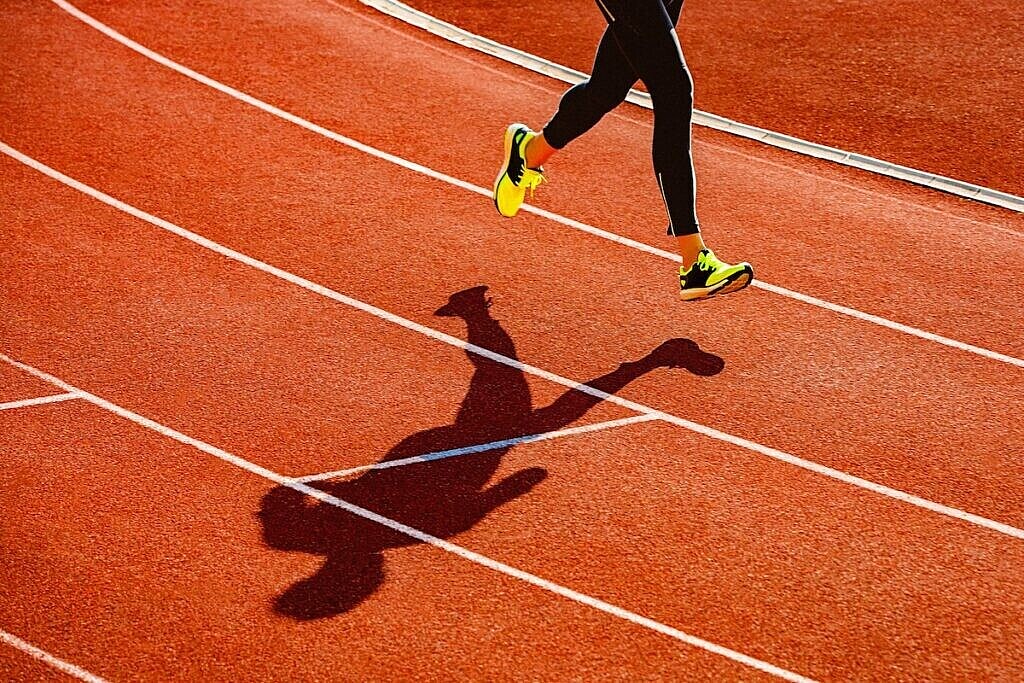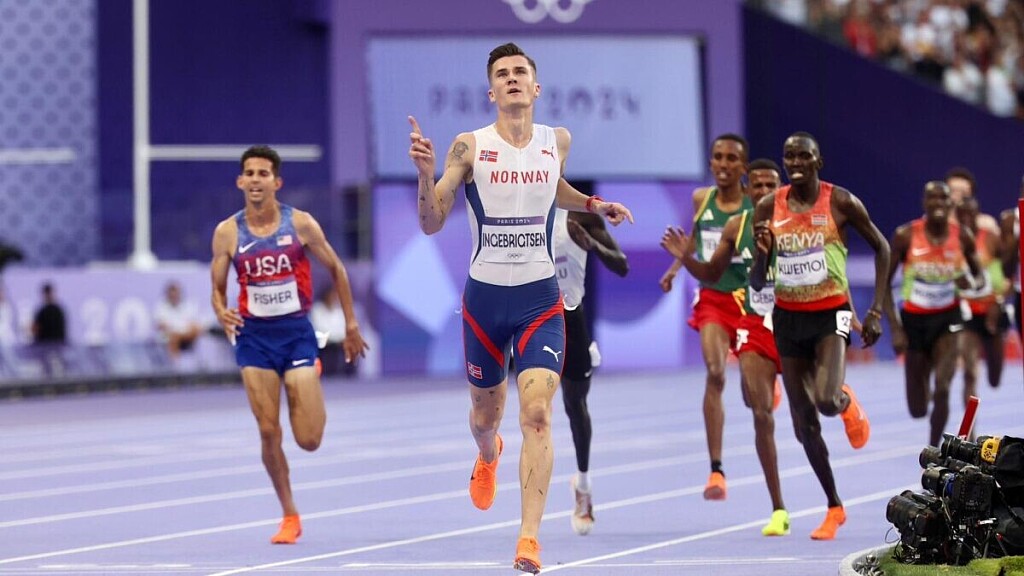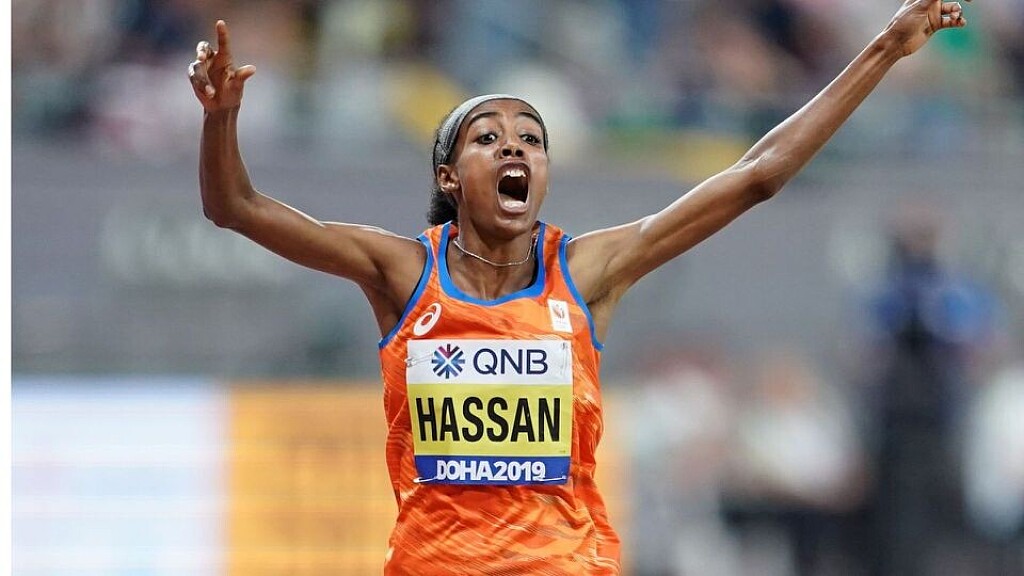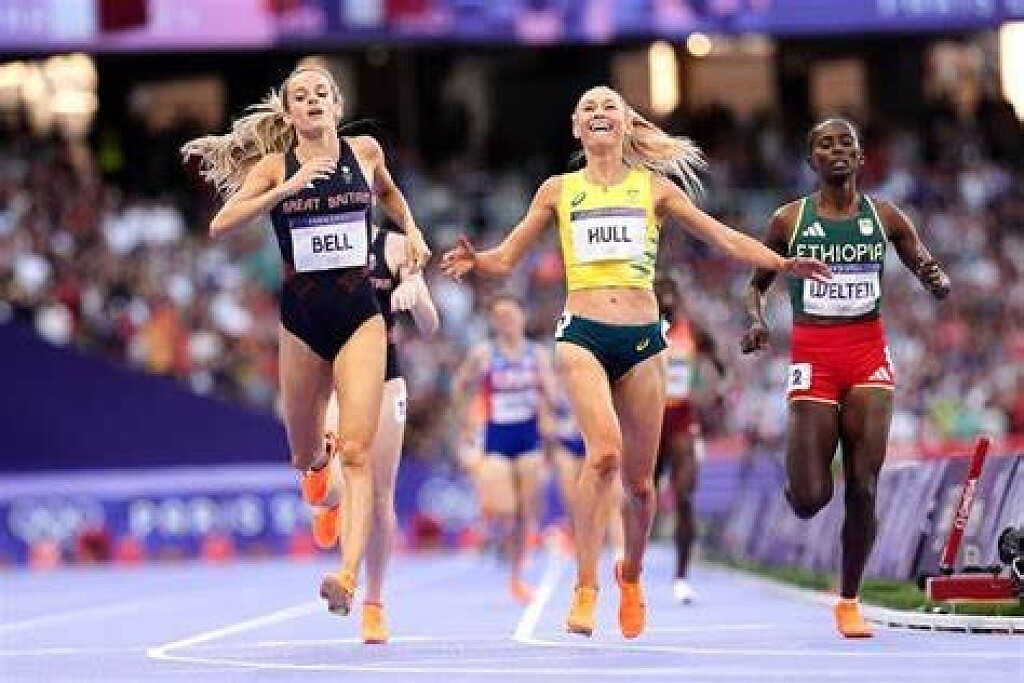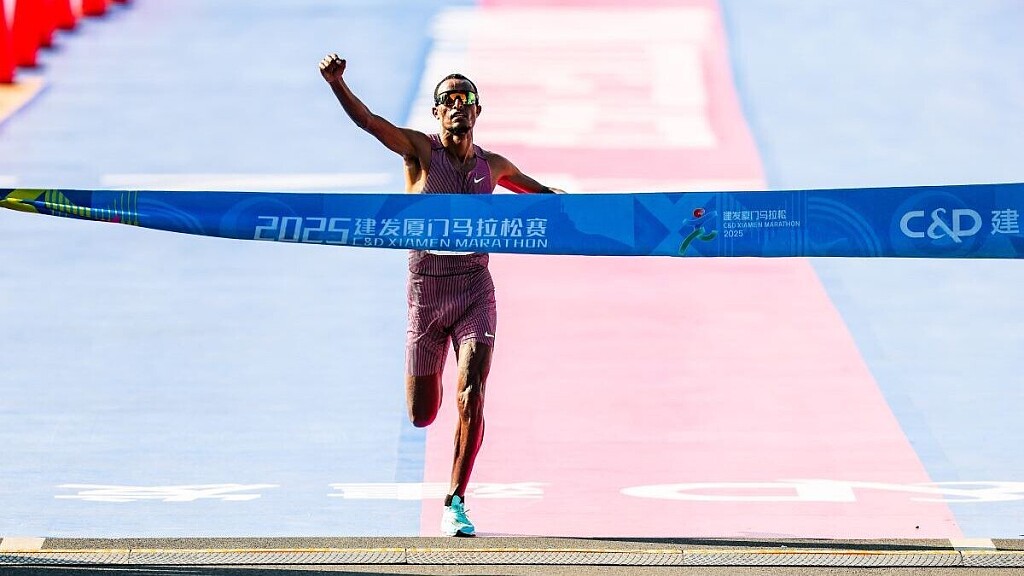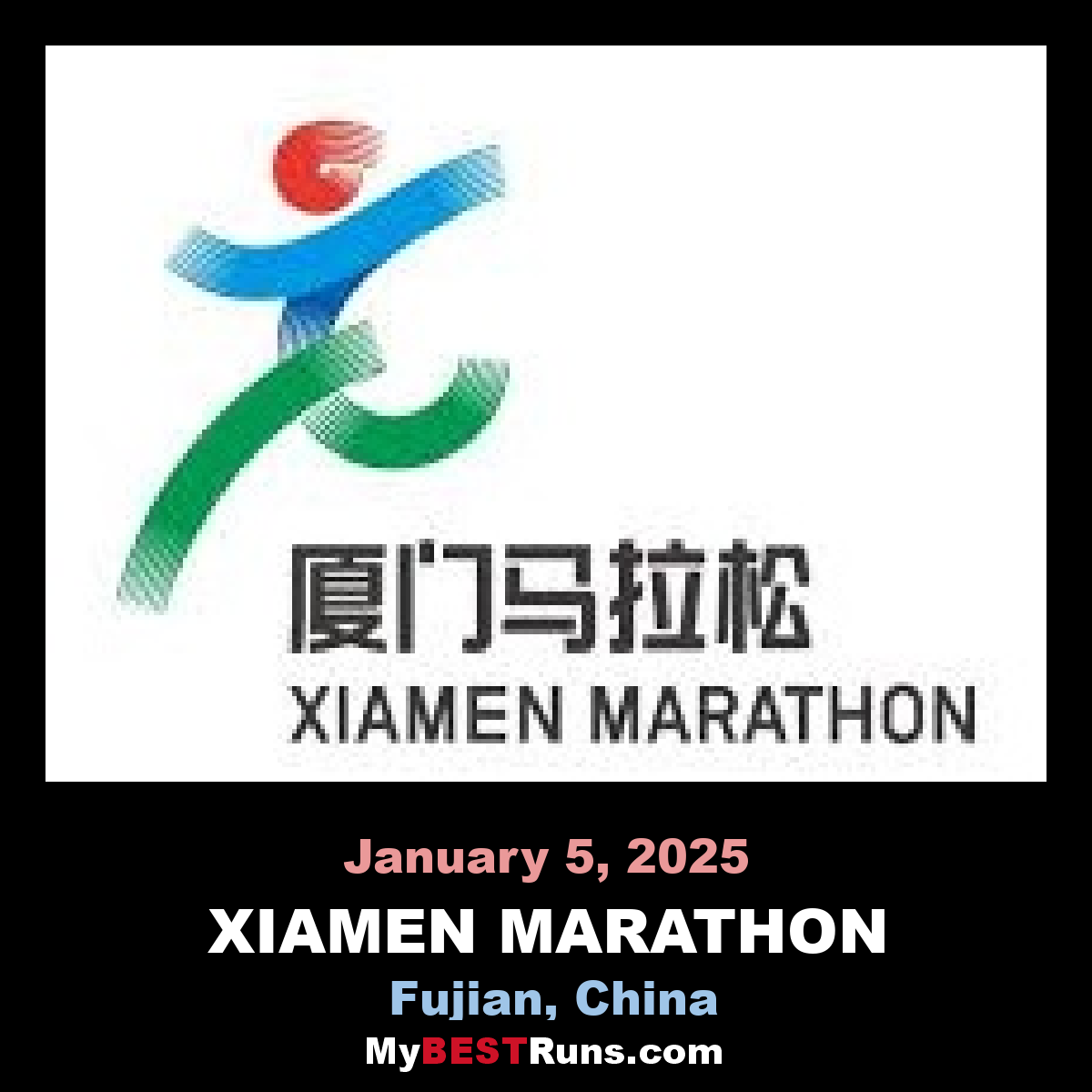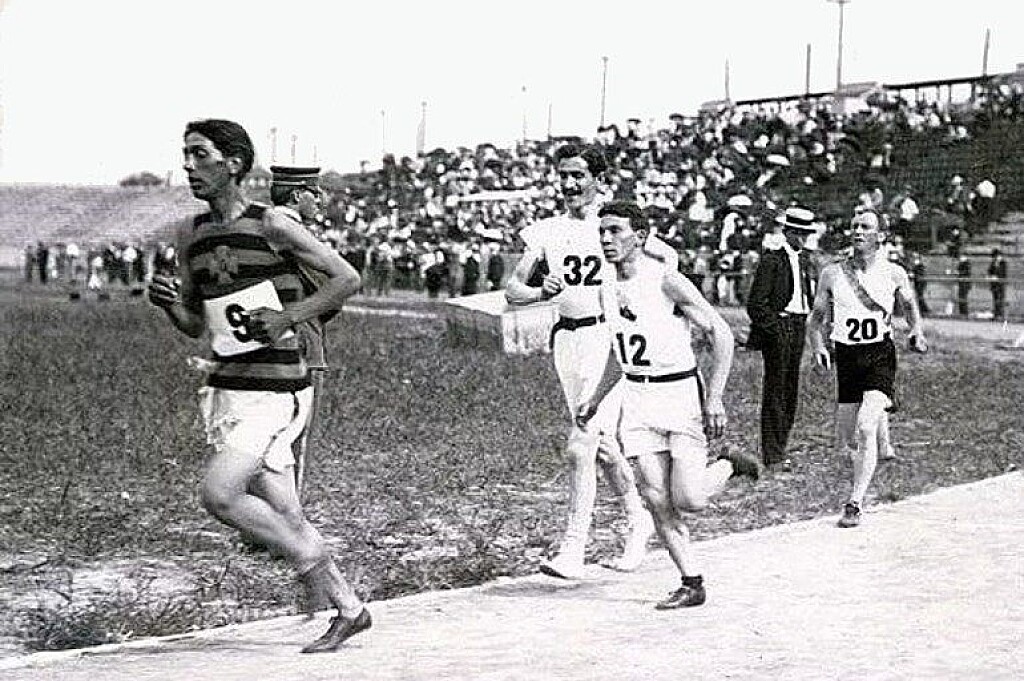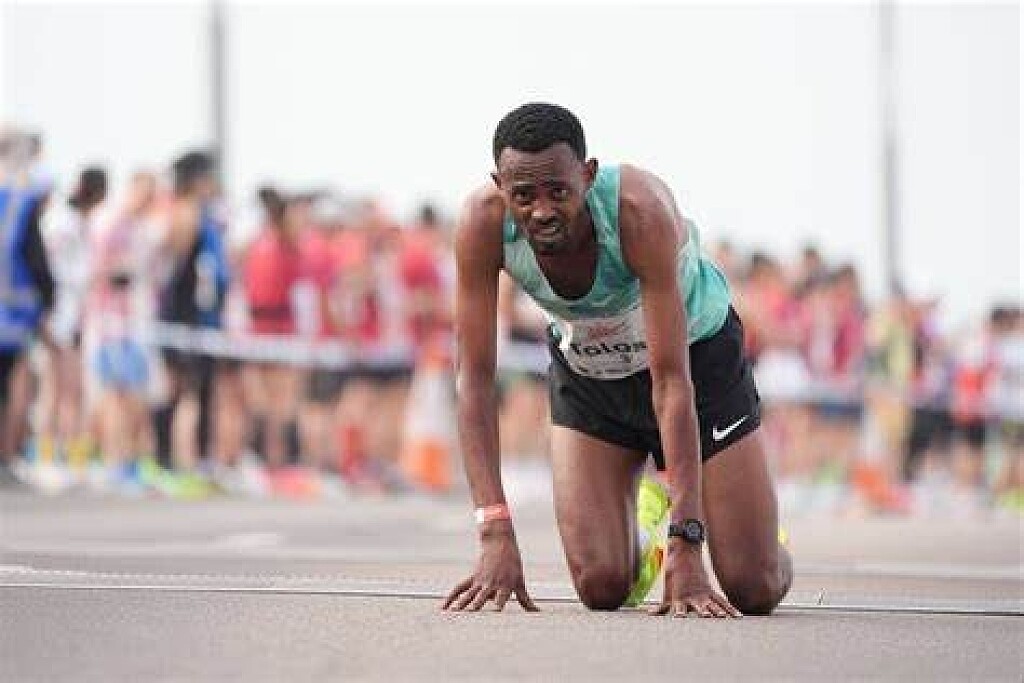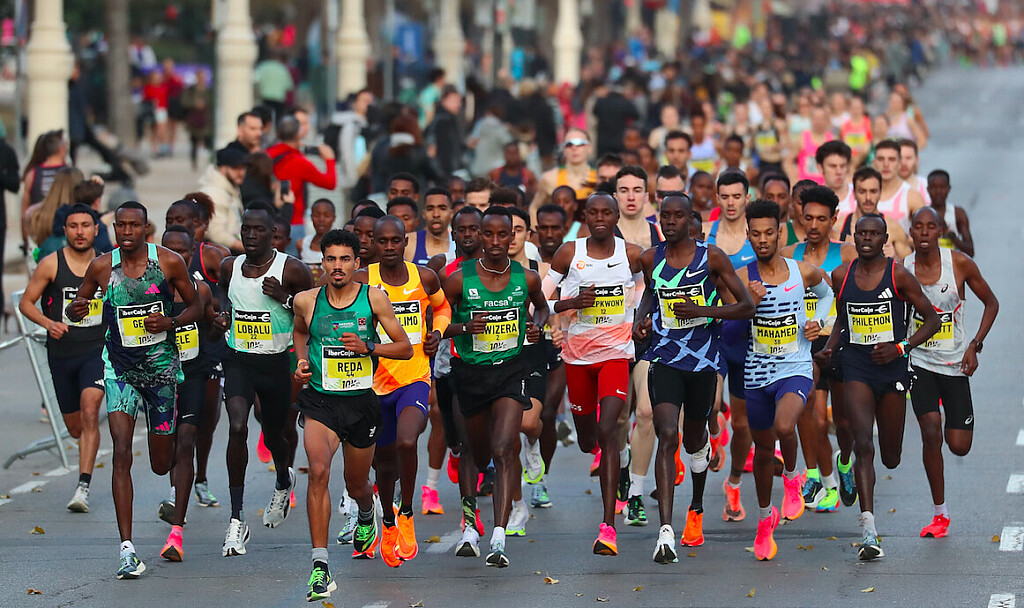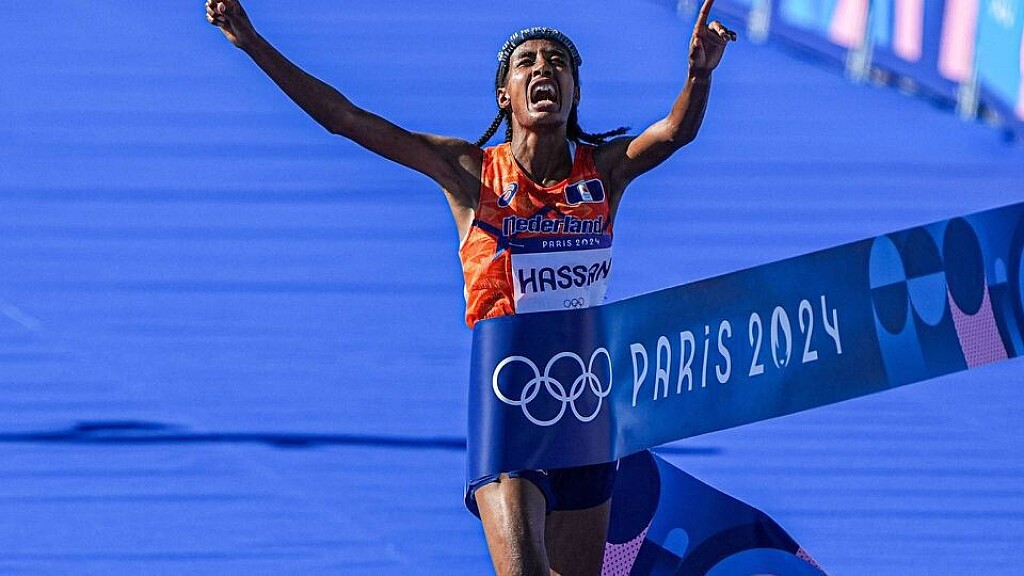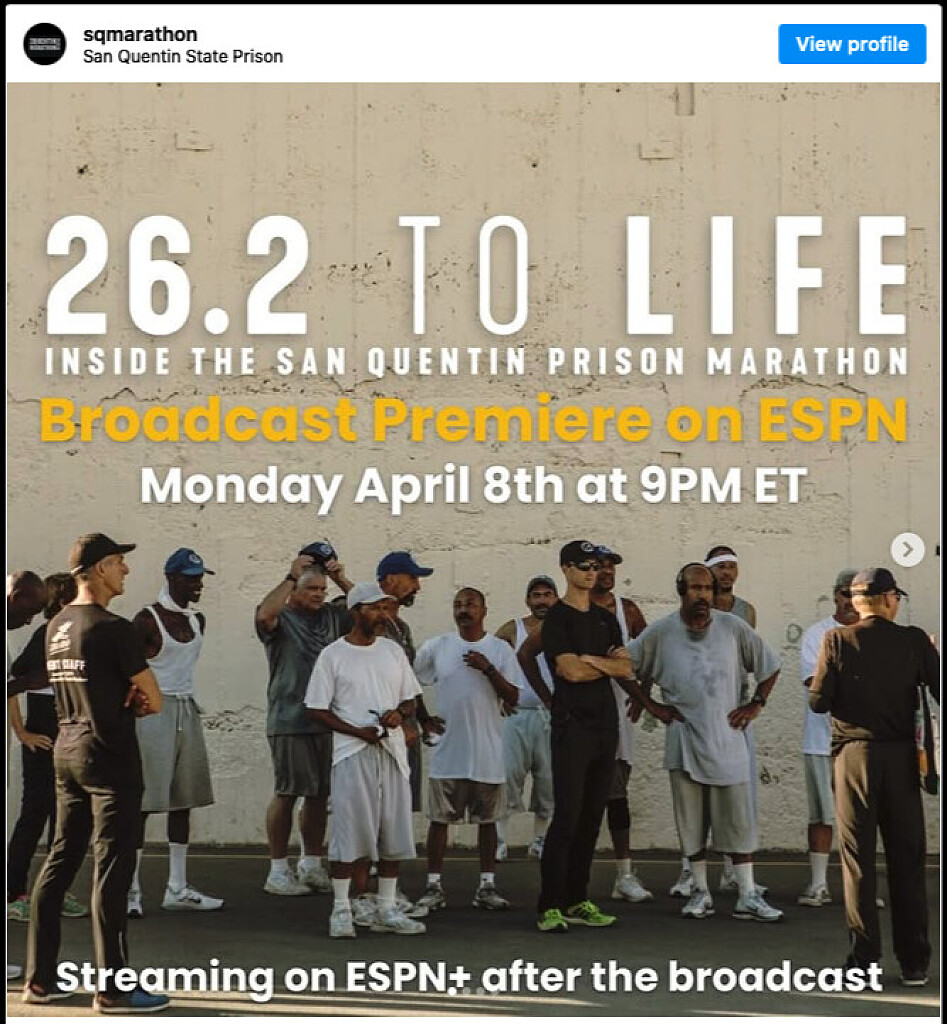Running News Daily
Running News Daily is edited by Bob Anderson. Send your news items to bob@mybestruns.com Advertising opportunities available. Train the Kenyan Way at KATA Kenya and Portugal owned and operated by Bob Anderson. Be sure to catch our movie A Long Run the movie KATA Running Camps and KATA Potato Farms - 31 now open in Kenya! https://kata.ke/
Index to Daily Posts · Sign Up For Updates · Run The World Feed
Kenyan Runner Barnabas Kiplimo Wins Khon Kaen Marathon in 2:18:55 Wearing Carbon-Plated Sandal
Kenyan athlete Barnabas Kiplimo achieved a remarkable victory at the Khon Kaen Marathon in Thailand, completing the race in 2:18:55 while wearing innovative carbon-plated sandals.
Kiplimo's choice of footwear was the Nirun sandal, developed by Thai running brand VING. This sandal features a full-length carbon plate embedded within a proprietary foam midsole, designed to enhance cadence and provide responsiveness. The upper and midsole are both made of foam, and the sandal incorporates a foam heel strap for added security, resembling a traditional thong-style flip-flop.
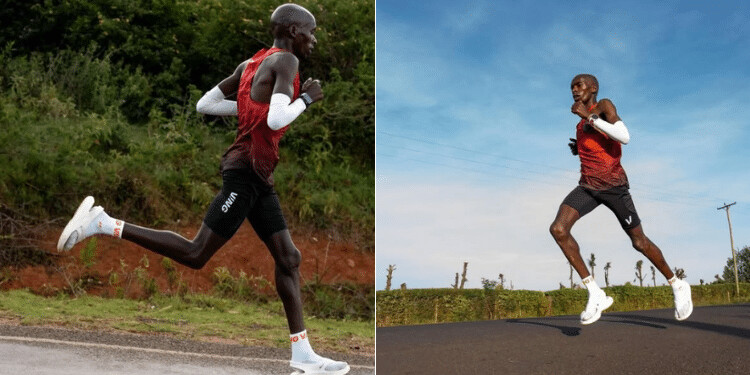
Performance and Potential
Despite initial skepticism, Kiplimo's performance in the Nirun sandals lends credibility to their design. At the Khon Kaen Marathon, he improved his previous marathon best by eight minutes, demonstrating the potential of these high-tech sandals in competitive racing.
Future Prospects
VING has initiated a product testing camp in Iten, Kenya, a renowned training hub for long-distance runners, to evaluate the durability and performance of the Nirun sandals under elite conditions. The brand plans to launch a Kickstarter project in February to bring an updated version of the sandals to market and aims to showcase the product at the 2025 Los Angeles Marathon in March.
Barnabas Kiplimo's victory in carbon-plated sandals not only highlights his personal achievement but also signals a potential shift in running footwear technology, challenging traditional perceptions and opening new avenues for innovation in the sport.
(01/21/2025) ⚡AMPby Boris Baron
More about Conner Mantz: From Utah Prodigy to American Record Holder
Conner Mantz's journey from a young running enthusiast in Utah to an American record holder is a testament to his unwavering dedication and exceptional talent. Born on December 8, 1996, in Logan, Utah, Mantz's early passion for running set the stage for a remarkable career in long-distance running.
Mantz's affinity for running became evident at a young age. At just 12, he completed his first half marathon, igniting a fervor for the sport. By 14, he impressively finished a half marathon in 1:11:24, maintaining an average pace of 5:26.8 minutes per mile. During his time at Sky View High School in Smithfield, Utah, Mantz distinguished himself as a three-time All-American at the Foot Locker Cross Country Championships. His prowess also earned him a spot on Team USA at the 2015 IAAF World Cross Country Championships in Guiyang, China, where he placed 29th in the junior race, leading the team to a commendable sixth-place finish.
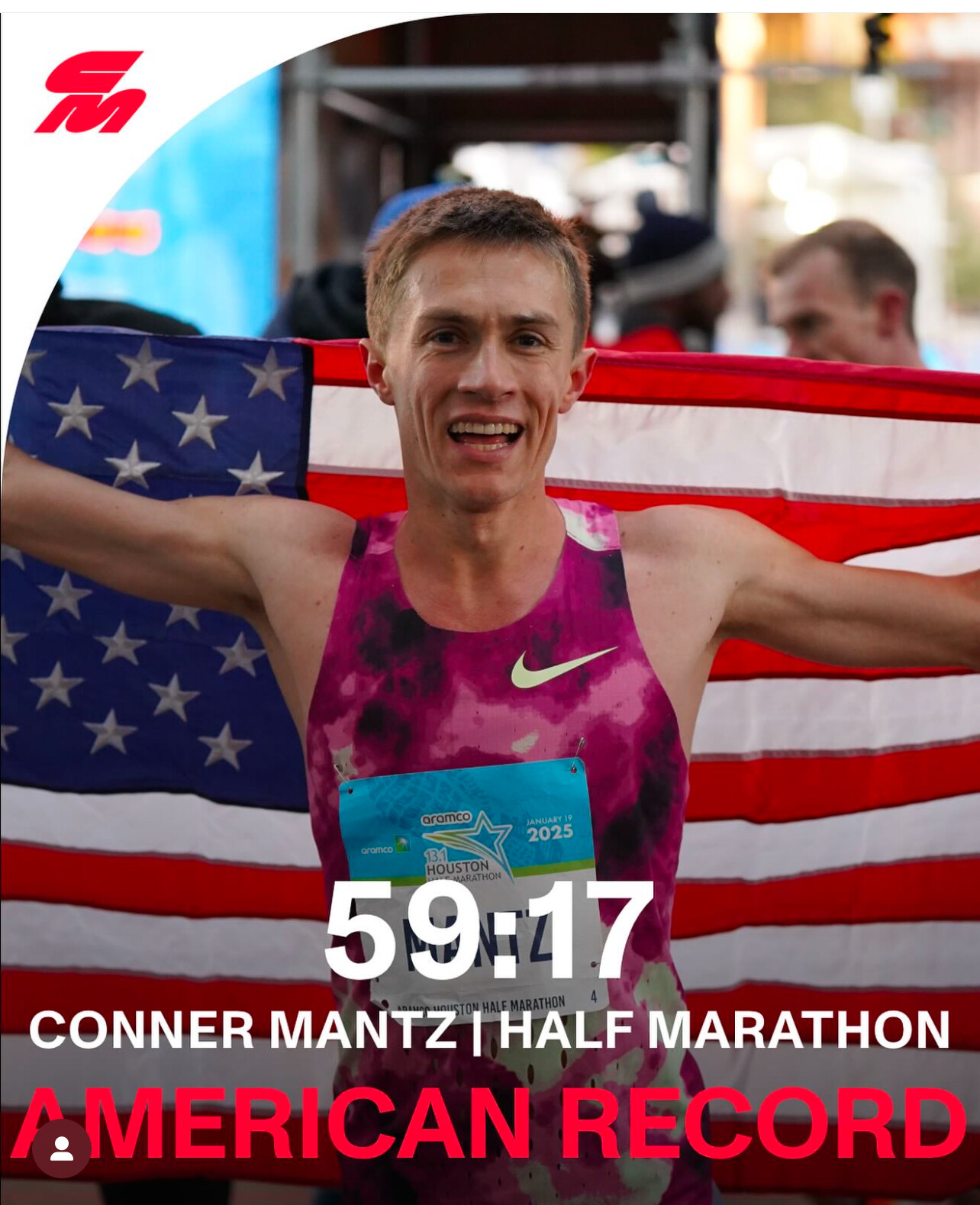
Choosing to further his running career and education, Mantz committed to Brigham Young University (BYU), turning down offers from institutions like Princeton and Furman. Before starting at BYU, he took a two-year hiatus to serve as a missionary for the Church of Jesus Christ of Latter-day Saints in Ghana. Upon his return in 2017, Mantz redshirted his first year, laying a solid foundation for his collegiate career. Under the guidance of coach Ed Eyestone, Mantz clinched back-to-back NCAA Division I Cross Country Championships titles in 2020 and 2021, solidifying his reputation as one of the nation's premier collegiate runners.
Transition to Professional Running
Turning professional in December 2021, Mantz signed with Nike and quickly made his mark. He won the USA Half Marathon Championships in Hardeeville, South Carolina, with a time of 1:00:55. The following year, he debuted in the marathon at the 2022 Chicago Marathon, finishing seventh with a time of 2:08:16. This performance was the second-fastest marathon debut by an American, just behind Leonard Korir's 2:07:56.
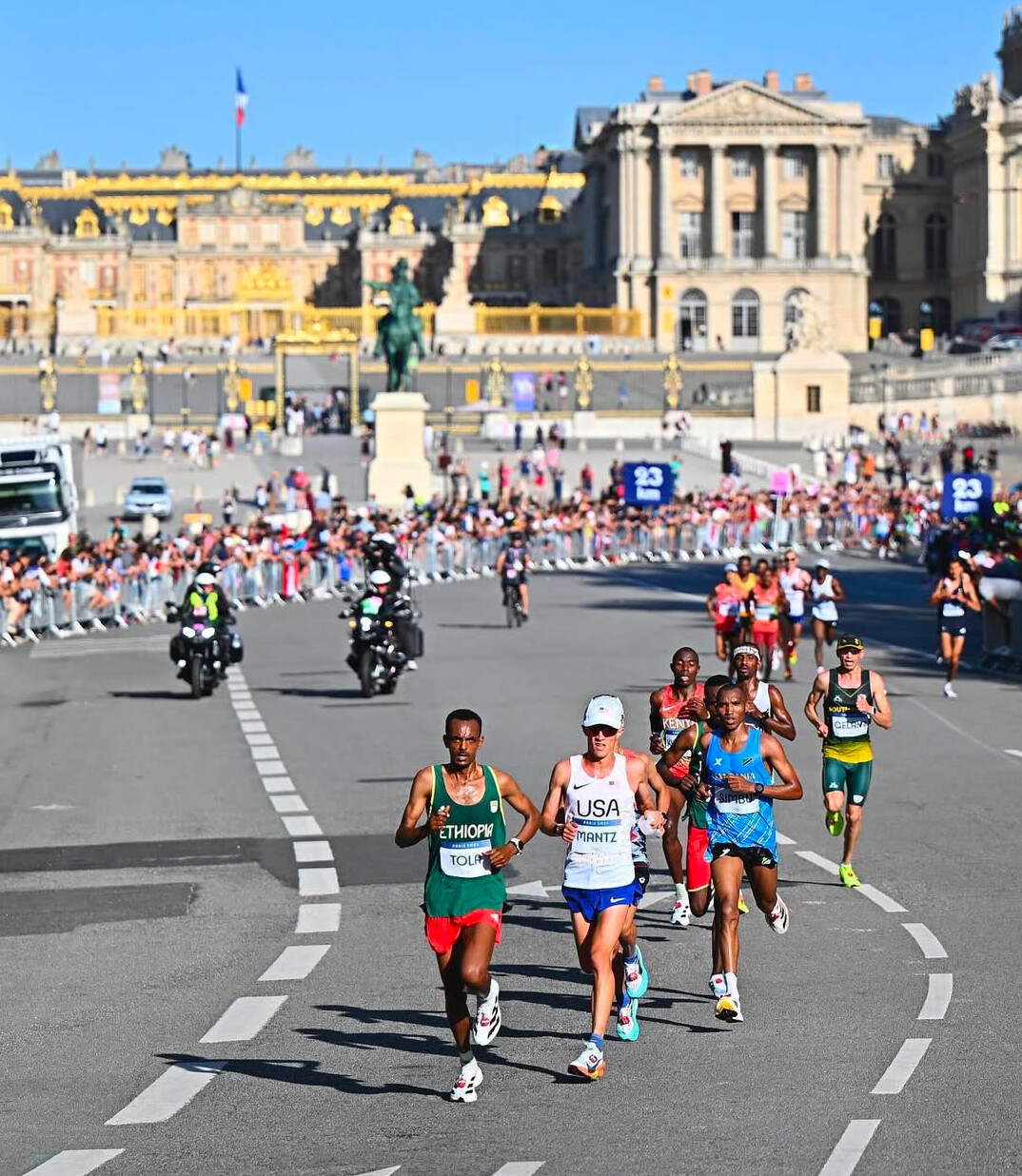
Olympic Pursuits and Notable Performances
In 2024, Mantz's career reached new heights. He won the U.S. Olympic Marathon Trials, securing his spot at the Paris 2024 Olympics. Despite facing a two-inch tear in his quad during preparations, Mantz showcased resilience, finishing eighth in the Olympic marathon. Post-Olympics, he continued to impress, placing sixth at the 2024 New York City Marathon.
Breaking the American Half Marathon Record
On January 19, 2025, at the Houston Half Marathon, Mantz etched his name into the record books. He completed the race in a staggering 59:17, breaking Ryan Hall's 18-year-old American record of 59:43 set in 2007. This achievement not only shattered the long-standing record but also made Mantz the first American in seven years to run a sub-60-minute half marathon.
Looking Ahead
Conner Mantz's trajectory in long-distance running is a blend of early passion, collegiate excellence, and professional triumphs. As he continues to push boundaries and set new standards, the running community eagerly anticipates his future endeavors, confident that Mantz will remain a formidable force on both national and international stages.
(01/21/2025) ⚡AMPby Boris Baron
San Diego to Host 2025 World Athletics Road Running Championships
San Diego is set to become the epicenter of the running world as it hosts the World Athletics Road Running Championships from September 26 to 28, 2025.
This prestigious event marks the first time the championships will be held on U.S. soil, bringing together elite athletes and running enthusiasts from around the globe.
Event Overview
The three-day festival will feature a series of races, including the one-mile, 5km, and half marathon events. Each race offers both elite competitions and mass participation opportunities, allowing runners of all levels to experience the thrill of competing alongside world-class athletes.
Race Schedule
Friday, September 26, 2025: One-Mile Race
The event kicks off with the electrifying one-mile race, inspired by New York City's iconic 5th Avenue Mile. Races will be held approximately every ten minutes, catering to various age groups and specialty divisions. The day culminates with the World Championship Women's and Men's Mile races, showcasing top middle-distance runners vying for the coveted title.
Saturday, September 27, 2025: 5km Race
Modeled after the renowned Carlsbad 5000, the 5km event features multiple races throughout the day, each tailored to specific age groups and categories. The format allows participants to compete against their peers, fostering a competitive yet inclusive atmosphere. The day's highlight is the World Championship 5km races for both women and men.
Sunday, September 28, 2025: Half Marathon
The grand finale is the half marathon, uniting 30,000 participants, including elite World Championship athletes and recreational runners. To ensure a smooth start, runners will be released in waves based on seed times, allowing for an enjoyable race experience for all.
Multi-Race Challenges
For those seeking an extra challenge, the championships offer multi-race options:
Triple Crown Challenge: Participate in the one-mile, 5km, and half marathon events over the weekend.
Middle Distance Challenge: Combine the one-mile and 5km races.
Long Distance Challenge: Take on the 5km and half marathon events.
Book End Challenge: Run the one-mile and half marathon races.
These challenges are designed to test endurance and versatility, with adequate rest periods scheduled between races.
Virtual Participation
Recognizing the global running community, organizers offer virtual race options for the one-mile, 5km, and half marathon distances. This initiative allows runners worldwide to participate remotely, fostering inclusivity and broad engagement.
Registration and Additional Information
Runners interested in joining the event can register through the official World Athletics Road Running Championships website. Early registrants may receive exclusive benefits, including discounted pricing and limited-edition training shirts. All participants will receive an official ASICS event t-shirt and a commemorative finisher's medal.
San Diego's Role as Host City
Selected by World Athletics in August 2023, San Diego is honored to host the 2025 championships, highlighting the city's status as a premier global destination for sports tourism. Mayor Todd Gloria expressed pride in showcasing San Diego's vibrant running community and welcoming athletes from nearly 200 countries.
The 2025 World Athletics Road Running Championships in San Diego promise an unforgettable celebration of athleticism and community, uniting runners from around the world in a shared passion for the sport.
(01/20/2025) ⚡AMPSifan Hassan Reflects on Olympic Glory and Sets Sights on Marathon History
In a recent episode of the CITIUS MAG Podcast, host Chris Chavez sat down with the illustrious Sifan Hassan to delve into her remarkable performances at the 2024 Paris Olympics and her future aspirations in marathon running.
Reflecting on the Paris Olympics:
Hassan achieved an extraordinary feat in Paris, securing bronze medals in both the 5,000m and 10,000m events before clinching gold in the marathon with a time of 2:22:55, setting a new Olympic record. She shared insights into the rigorous training and mental fortitude required to compete across these diverse events, emphasizing her relentless pursuit of excellence.
Aiming for Marathon Milestones:
Looking ahead to 2025 and beyond, Hassan expressed her ambition to push the boundaries of women’s marathon times. Inspired by Ruth Chepng’etich’s world record of 2:09:56, Hassan is contemplating the possibility of running a marathon under 2:10. She stated, “Maybe, it takes me longer to work hard to achieve it… We will now try and hit the thing.” This goal reflects her desire to explore the limits of female endurance and performance.
Upcoming Challenges:
Hassan is set to compete in the 2025 London Marathon, returning to the city where she made a victorious marathon debut in 2023. She acknowledged the increasing competitiveness of women’s marathon running, particularly in light of recent record-breaking performances, and is eager to test herself against a formidable field.
Mental Resilience and Training Philosophy:
Throughout the conversation, Hassan highlighted the importance of mental strength in her training regimen. She humorously remarked, “I think my brain is so scared of me,” underscoring the psychological challenges inherent in elite athletic performance. Her approach combines rigorous physical preparation with a focus on mental resilience, enabling her to tackle multiple demanding events successfully.
This insightful discussion offers a comprehensive look into Sifan Hassan’s past achievements and future goals, shedding light on her exceptional versatility and determination in the realm of distance running.
(01/19/2025) ⚡AMP
by Boris Baron
Kojo Kyereme Sets New V50 3000m age group World Record clocking 8:41
Veteran runner Kojo Kyereme has once again proven that age is just a number, smashing the V50 (age 50+) world record in the 3000 meters with an incredible time of 8:41. This remarkable feat cements his status as one of the most dominant masters athletes in the sport.
Kyereme’s record-breaking performance exemplifies his lifelong dedication to running and his ability to maintain elite fitness well into his 50s. The previous record stood as a benchmark for seasoned runners, but Kyereme’s blazing time has set a new standard that will inspire masters athletes worldwide.
Throughout his career, Kyereme has been a consistent force in distance running, transitioning seamlessly from competing with elite athletes in his younger years to becoming one of the most celebrated masters runners. His achievements include numerous titles and records, but this latest milestone highlights his ability to adapt and excel even as the competition changes.
The 8:41 Race
The historic 3000m race was a display of tactical brilliance and raw speed. Kyereme set a strong pace early, maintaining control through the middle laps before unleashing a powerful final kick to secure the record. His time of 8:41 not only broke the existing V50 record but also underscored his remarkable endurance and competitive spirit.
Inspiration for the Running Community
Kyereme’s accomplishment serves as an inspiration to runners of all ages. His ability to perform at such a high level decades into his running career is a testament to the power of consistent training, discipline, and passion for the sport.
Reflecting on his achievement, Kyereme said, “I’m thrilled to have set this record. It’s proof that with hard work and belief, there’s no limit to what we can achieve, no matter our age.”
What’s Next for Kyereme?
With this record under his belt, Kyereme shows no signs of slowing down. He’s already looking ahead to future races and challenges, aiming to continue pushing boundaries and inspiring the masters running community.
Kyereme’s new V50 3000m world record of 8:41 is not just a milestone—it’s a statement that greatness is timeless.
(01/19/2025) ⚡AMP
Thrilling Finish at the 2025 Chevron Houston Half Marathon: Conner Mantz Ties Event Record, Sets New American Standard
The 2025 Chevron Houston Half Marathon delivered an unforgettable race, featuring one of the closest finishes in the event’s history. In a jaw-dropping sprint to the finish line, Addisu Gobena of Ethiopia and Conner Mantz of the United States both crossed the tape at 59:17, sharing the event record in an electric photo finish.
For Mantz, this historic performance was doubly significant. The Utah native not only tied the event record but also shattered Ryan Hall’s longstanding American record of 59:43, set in 2007. Mantz’s 59:17 establishes a new national standard, cementing his place as one of the greatest American half-marathoners.
The men’s field showcased extraordinary depth, with four runners breaking the elusive 1-hour mark and an additional eight runners finishing under 61 minutes. The sheer quality of performances underscores Houston’s reputation as one of the premier half-marathon events in the world.
Men’s Results Overview
1. Addisu Gobena (Ethiopia) – 59:17
2. Conner Mantz (USA) – 59:17 (New American Record)
3. Gabriel Geay (Tanzania) – 59:18
4. Jemal Yimer (Ethiopia) – 59:20
5. Patrick Dever (Great Britain) – 1:00:11
Mantz’s record-breaking run wasn’t the only highlight for American fans. Hillary Bor, Wesley Kiptoo, Andrew Colley, and Alex Maier all posted sub-61-minute finishes, demonstrating the growing strength of U.S. distance running.
A Photo Finish for the Ages
The showdown between Gobena and Mantz captivated spectators. Both runners surged in the final meters, with Gobena just barely edging ahead in the official results. While Gobena claimed the win, Mantz’s breakthrough made headlines, showing that American distance running continues to rise to global prominence.
Conner Mantz’s Perspective
“This was a dream race for me,” Mantz said after the event. “I’ve always admired Ryan Hall’s record, and to not only break it but to do so in such a competitive field is incredibly special. Sharing the event record with Addisu Gobena makes it even more memorable.”
A Record-Setting Day
The 2025 Chevron Houston Half Marathon proved to be one for the history books. With its flat, fast course and deep international field, the event continues to attract world-class talent. Gobena and Mantz’s shared record and Mantz’s new American milestone will stand as highlights of this year’s race, reminding fans why Houston is synonymous with excellence in distance running.
Women’s Half Marathon:
Weini Kelati lowered her own American women’s half marathon record by completing the race in 1:06:09, a 16-second improvement from her previous record of 1:06:25 set at the same event last year. Kelati secured second place in the women’s field, finishing just four seconds behind Ethiopia’s Senayet Getachew, who won with a time of 1:06:05.
The favorable weather conditions in Houston contributed to these record-breaking performances, making the 2025 Houston Half Marathon a memorable event for American distance running.
(01/19/2025) ⚡AMP
by Boris Baron
Aramco Houston Half Marathon
The Chevron Houston Marathon provides runners with a one-of-a-kind experience in the vibrant and dynamic setting of America's fourth-largest city. Renowned for its fast, flat, and scenic single-loop course, the race has earned accolades as the "fastest winter marathon" and the "second fastest marathon overall," according to the Ultimate Guide to Marathons. It’s a perfect opportunity for both elite athletes...
more...Denis Kimetto still racing strong as a master
Denis Kimetto etched his name into the history books in 2014 when he became the first man to run a marathon under 2:03, shattering the world record with a blistering 2:02:57 at the Berlin Marathon. Fast forward over a decade, and Kimetto is still proving his mettle on the marathon stage. Just ten days shy of his 41st birthday, Kimetto delivered a remarkable performance at the 2025 Dubai Marathon, clocking 2:14:53—a testament to his enduring talent and dedication to the sport.
A Legacy of Speed
In 2014, Kimetto’s world record run in Berlin redefined what was possible in the marathon. His groundbreaking performance not only showcased his speed and efficiency but also set a new benchmark for the sport, inspiring a new generation of elite runners to chase the seemingly impossible.
While the world record has since been lowered, Kimetto’s achievement remains one of the pivotal moments in marathon history, a milestone that marked the beginning of a new era in long-distance running.
A Masterful Comeback
At 40, many elite marathoners transition away from competitive racing or focus on shorter distances. Yet Kimetto’s performance in Dubai shows he still has plenty left in the tank. Crossing the finish line in 2:14:53, he defied expectations for his age, proving that his passion and commitment to the sport are as strong as ever.
This performance highlights not just his fitness but also his ability to adapt and compete against a younger field in a sport that demands both physical and mental resilience. For a runner who once held the world record, such a time might seem modest, but in the context of his age and the challenges of staying competitive over the years, it’s nothing short of extraordinary.
Looking Ahead
As Kimetto approaches his 41st birthday, his impressive showing in Dubai serves as a reminder of his incredible career and his lasting influence on the sport. While his days of chasing world records may be behind him, Kimetto continues to inspire with his perseverance, reminding us that age is just a number when it comes to passion and determination.
From his world record in Berlin to his master-class effort in Dubai, Denis Kimetto’s legacy is one of speed, endurance, and an unyielding love for running. As he enters this next chapter of his career, fans around the world will undoubtedly continue to cheer him on as he adds to his already legendary story.
(01/18/2025) ⚡AMP
by Boris Baron
Celebrating Tom Farrell: An American Middle-Distance Icon Turns 81
Yesterday marked the 81st birthday of Tom Farrell, one of America’s most celebrated middle-distance runners and a bronze medalist in the 800 meters at the 1968 Olympics in Mexico City. Farrell’s performance in that final was nothing short of remarkable, as he clocked a lifetime best of 1:45.4 to secure his place on the podium in one of the most competitive eras in the sport.
Farrell’s legacy in middle-distance running extends beyond his Olympic medal. Four years earlier, at the Tokyo 1964 Olympics, Farrell finished fifth in the 800-meter final, establishing himself as a rising star on the global stage. Between Tokyo and Mexico City, he cemented his status as one of the world’s elite middle-distance runners.
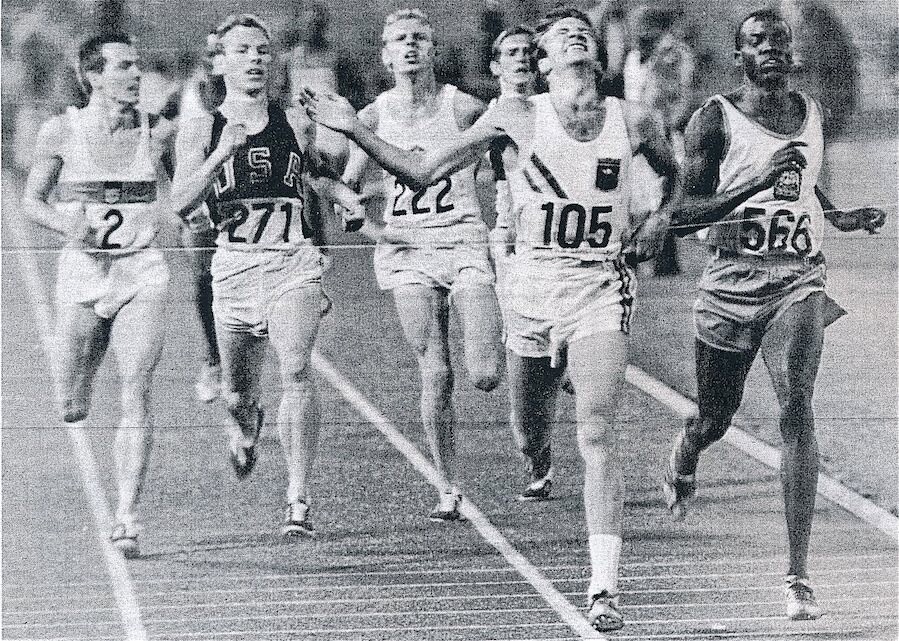
One of his most notable achievements came indoors, when Farrell broke the 800-meter indoor world record with a time of 1:49.0, previously held by the legendary Peter Snell. The record-breaking performance occurred during a race where Farrell defeated another formidable rival, Ted Crothers, further showcasing his dominance.
Despite his incredible talent and potential, Farrell’s athletic career came to an early end. After his success at the 1968 Olympics, at just 24 years old, he retired from competitive running to focus on his professional life outside of athletics. His decision highlights the challenges many athletes of that era faced, balancing the demands of sport with the need to secure a stable livelihood.
Farrell’s contributions to American middle-distance running remain a source of inspiration. His achievements during a golden era of track and field, characterized by intense rivalries and historic performances, continue to be celebrated by the running community.
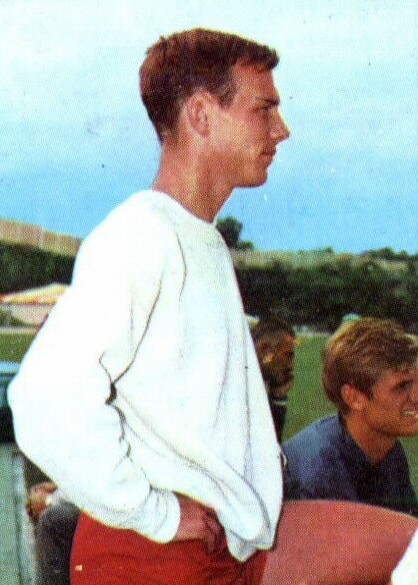
As we honor Tom Farrell on his 81st birthday, we remember not only his accomplishments on the track but also his enduring influence on the sport. Here’s to a remarkable athlete, a trailblazer in middle-distance running, and a legacy that still inspires athletes worldwide. Happy Birthday, Tom Farrell!
(01/18/2025) ⚡AMPby Eric Giacoletto and Boris Baron
Emily Infeld: Olympian, Streak-Holder, and Inspiration for Runners Everywhere
Olympian Emily Infeld recently shared a heartwarming post on Facebook about two significant running streaks in her household—her husband’s incredible 21-year run streak and her own 21-year streak of running sub-5-minute miles. While both accomplishments reflect remarkable consistency and dedication, Emily’s streak is a unique marker of her speed and longevity as an elite runner.
Emily’s sub-5-mile streak began in 2005 during her freshman year of high school when she first broke the coveted barrier. Now, 21 years later, she continues to hit this milestone each year, either in a race or during training sessions. Her most recent achievement came just this week, when she clocked her first sub-5-minute mile of 2025 during a workout.
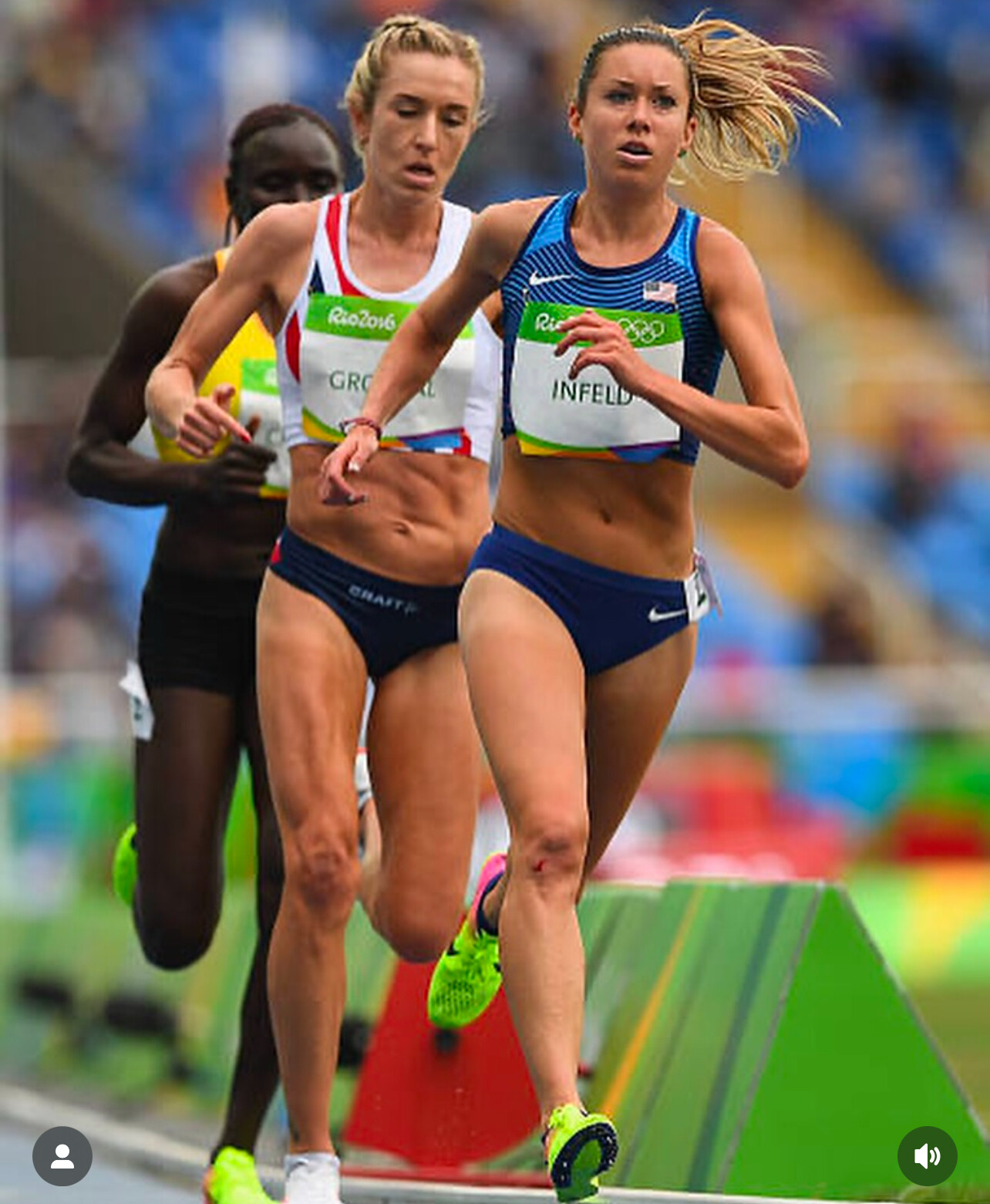
“Thinking back, I realized that I’ve broken 5 minutes in the mile every year since [2005],” Infeld wrote. “All of that is to say this lil streak made me feel proud, and now that it’s 21 years strong, I want to see how much longer I can continue it!”

Infeld, a 2016 Olympian and world-class distance runner, has a storied career that includes a bronze medal at the 2015 World Championships in the 10,000 meters. Known for her resilience and positive attitude, she’s a celebrated figure in the running community and an inspiration to athletes of all levels.
She also took a moment to celebrate her husband’s run streak, which has lasted an astonishing 21 years. (Third photo is her husband out front of their new home.) While her own streak involves hitting sub-5-minute miles annually, her husband’s dedication to daily runs highlights another side of the running spectrum: the mental and physical discipline to show up every day, no matter the circumstances.
“Cheers to anyone doing a run streak, even if you don’t realize it yet,” Emily added in her post, offering encouragement to runners pursuing their own goals.
Emily’s story reminds us that streaks, whether built on speed or consistency, are deeply personal and worth celebrating. Her combination of elite-level achievement and her genuine passion for running exemplify what makes the sport so special: there’s room for everyone to find meaning, motivation, and pride in their journey.
As Emily continues her streak of sub-5-minute miles into its 22nd year, she inspires us all to reflect on the milestones—big or small—that keep us moving forward. Whether you’re chasing personal records, daily runs, or simply a love for the sport, Emily’s story proves that every streak starts with a single step.
(01/18/2025) ⚡AMPby Boris Baron
Running and Air Quality: How to Stay Safe Amid Pollution and Wildfires
Air pollution and wildfires pose significant challenges for runners, making it essential to assess air quality before heading outdoors. From wildfire smoke to urban pollution, understanding the risks and taking precautions can help protect your health while staying active.
The Risks in the Air

When you run, your lungs take in more air—and with it, harmful pollutants. According to Dr. Michael Koehle, head of the Environmental Physiology Lab at the University of British Columbia, air pollution is a mix of gases like carbon monoxide and particles such as dust and pollen. Pollutants like diesel exhaust and ozone can impact your respiratory and cardiovascular systems, diminishing your ability to perform at your best.

Wildfire smoke compounds these risks with fine particulate matter and toxic chemicals. Dr. Colleen Reid, assistant professor at the University of Colorado, notes that poor air quality can exacerbate asthma, increase emergency room visits, and even trigger heart-related issues.
Moreover, pollution may reduce the mental and physical benefits of exercise. Research suggests that exercising in polluted air can hinder brain health improvements typically associated with aerobic activity.
Practical Tips to Stay Safe
1. Check the Air Quality Index (AQI):
Use resources like AirNow, Smoke Sense, or AirVisual to monitor local AQI levels. If the AQI exceeds 150—or 100 for those with respiratory issues—consider indoor workouts. Use tools like Gaia GPS for real-time air and wildfire maps to plan safer routes.
2. Time Your Runs Wisely:
Avoid running during peak pollution hours, such as rush hour or midday when ground-level ozone is highest. Early morning or evening runs typically offer better air quality.
3. Choose Cleaner Routes:
Stay at least 200 yards away from busy roads to reduce exposure to vehicle emissions. Opt for parks, rural areas, or trails with ample tree coverage, which can help filter pollutants.
4. Support Your Health:
Antioxidant-rich foods, such as leafy greens, berries, and nuts, can help your body combat toxins. Staying hydrated also aids in flushing pollutants from your system.
Running Smart in the Age of Pollution
While it’s impossible to eliminate exposure to air pollution completely, these steps can minimize risks and help you make informed decisions about your outdoor activities. When in doubt, prioritize your health and opt for indoor workouts on high-risk days.
(01/18/2025) ⚡AMP
by Boris Baron
Trail Adventures for All: The Short Series Brings Big Excitement to Shorter Distances
Not every trail runner dreams of tackling 100K or more, and the Short Series is here to celebrate that, offering a meaningful and exciting alternative for those who prefer shorter distances or are new to the sport. With its carefully designed races, the series ensures that runners experience all the thrill and challenge of trail running, without the ultra-distance commitment.
According to the WTM website, these races boast “logical and interesting routes that give each race the character and DNA of the location, of the organisation, of its sporting culture.” Each event highlights the unique landscapes, culture, and community spirit of its setting, making the Short Series as much about the journey as the finish line.
Though these races don’t hit ultra-distance benchmarks, they are far from easy. Participants need effort, preparation, and determination to conquer the terrain. For many, the Short Series offers the perfect introduction to the world of trail running—an approachable challenge for newcomers and a rewarding experience for seasoned runners who prefer shorter distances.
Whether you’re looking to build confidence, test your limits, or simply enjoy the camaraderie and beauty of trail racing, the Short Series provides a stepping stone to adventure. It’s an ideal option for runners eager to embrace the outdoors without committing to the grueling demands of ultra-distance training. For those ready to dive into the trail running scene, the Short Series proves that every distance has its own rewards.
(01/18/2025) ⚡AMPby Boris Baron
5 Reasons to run outside all winter—and get stronger, tougher, faster, healthier and happier
In the winter of 1939, when the military posted Swedish miler Gundar Hagg to the far north of that nordic country, he devised a unique training program of running on trails through knee- or hip-deep snow. Most days he would do 2500 meters in snow for strength, followed by 2500 meters on a cleared road for turn-over. But during those times when he couldn’t find cleared roads—sometimes for weeks—he’d run up to the full 5-kilometers in snow. The next summer he set huge PRs, coming within one second of the mile world record.
Hagg continued his routine in subsequent winters, devising a hilly 5K loop in a different locale that trudged through snowy forest for 3000 meters then ended with a 2000 meter stretch of road where he could run at full speed. He kept improving, and the summer of 1942 he set 10 world records between the 1500 and 5,000 meters.
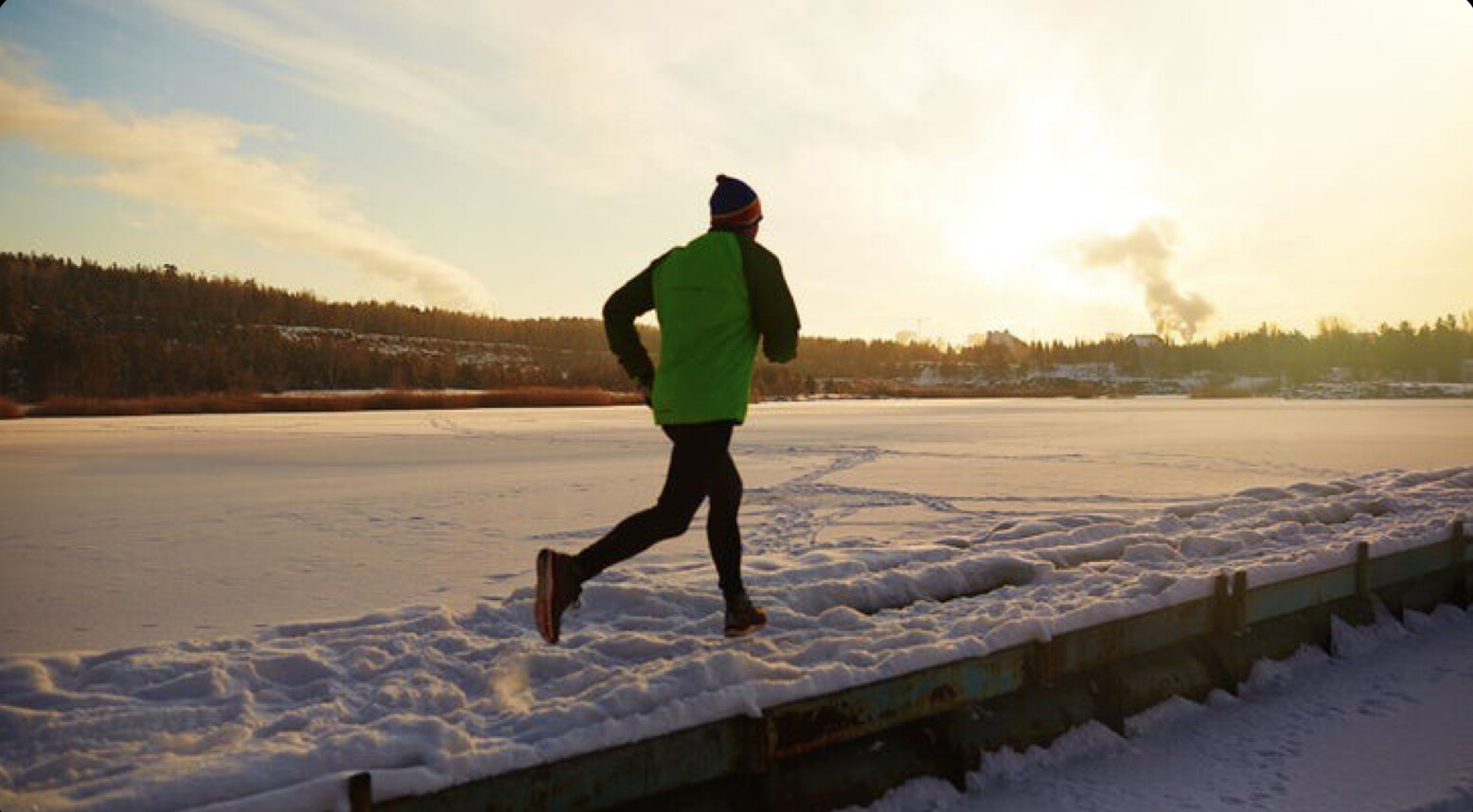
While Hagg’s routine was created out of necessity, he obviously valued the snowy training. When he moved to a city with a milder climate, he wrote in a training journal, “It will be harder running than any previous year. Probably there won’t be much snow.” And every winter he scheduled trips north to train on the familiar, tough, snowy trails.
Hagg isn’t the only runner who has found winter training valuable. Roger Robinson, who raced internationally for England and New Zealand in the 1960s before setting masters road records in the ‘80s, recalls his training for the deep-winter English cross country championships of the 1950’s and 60s. “We ran, often at race pace, over snow, mud, puddles, deep leaves, ploughed fields, scratchy stubble, stumpy grass, sticky clay, sheep-poo, whatever, uphill and down,” Robinson says. “And thus, without going near a gym or a machine, we developed strength, spring, flexibility, and stride versatility that also paid off later on the road or track; I made one of my biggest track breakthroughs after a winter spent running long intervals on a terrain of steep hills and soft shifting sand.”
Robinson, now 85, with two artificial knees, still runs in the cold and slop. “Running is still in great part about feeling the surfaces and shape of the earth under my feet,” he says.
Hagg and Robinson are of a different generation than those of us with web-connected treadmills that can let us run any course on earth from the comfort of our basement, but they’re on to something we might still benefit from: winter can be an effective training tool. Here are five reasons you’ll want to bundle up and head out regardless of the conditions, indeed, why you can delight when it is particularly nasty out.
1) Winter Running Makes You Strong
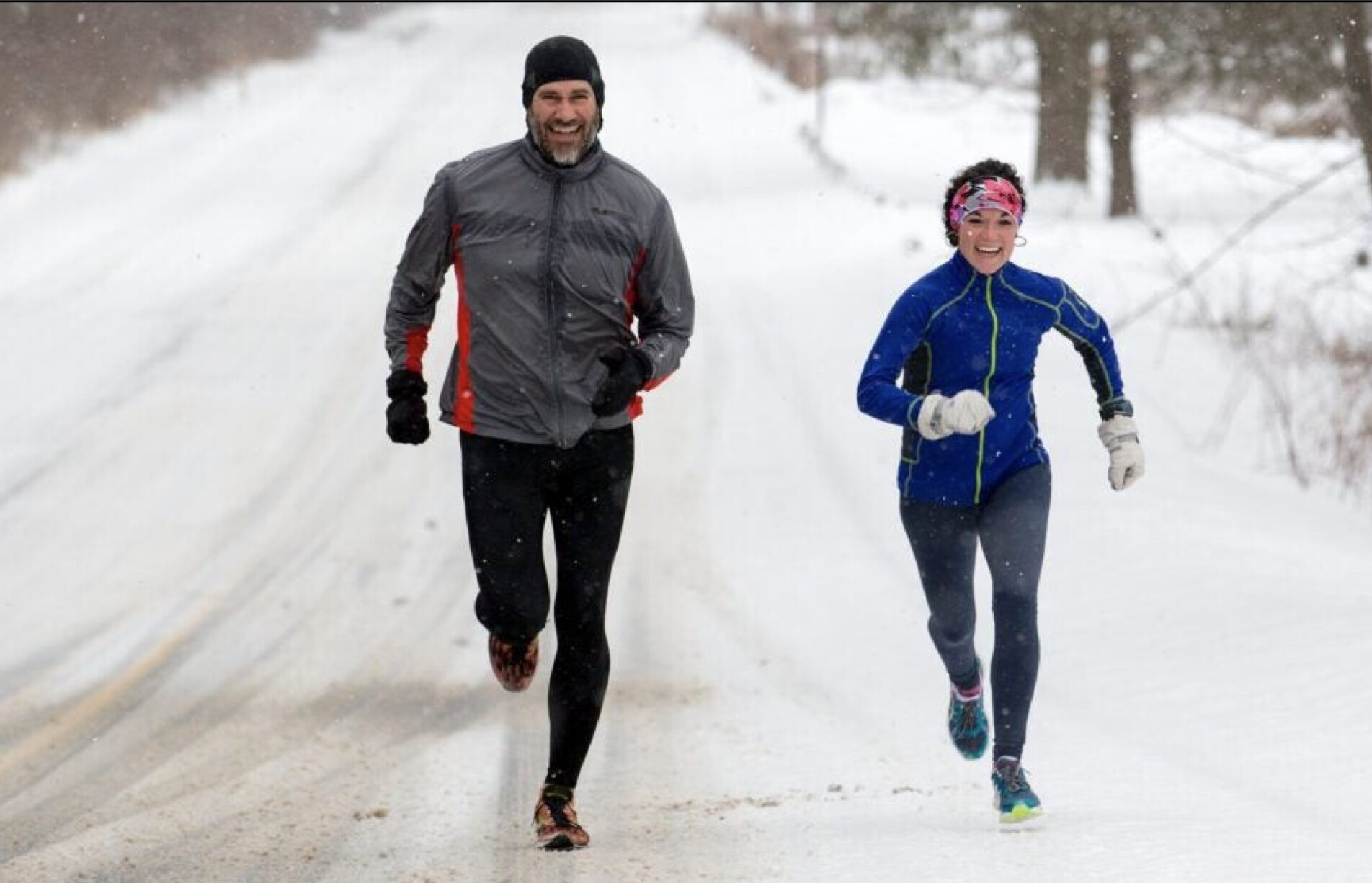
As Hagg demonstrated and Robinson points out, winter conditions work muscles and tendons you’d never recruit on the smooth, dry path. A deep-winter run often ends up being as diverse as a set of form and flexibility drills: high knees, bounds, skips, side-lunges, one-leg balancing.
Bill Aris, coach of the perennially-successful Fayetteville-Manlius high school programs, believes that tough winter conditions are ideal for off-season training that has the goal of building aerobic and muscular strength. He sends the kids out every day during the upstate New York winter, and says they come back, “sweating, exhausted and smiling, feeling like they have completely worked every system in their bodies.”
2) Winter Running Makes You Tough
No matter how much you know it is good for you and that you’ll be glad when you’re done, it takes gumption to bundle up, get out the door and face the wintry blast day after day. But besides getting physically stronger, you’re also building mental steel. When you’ve battled snow and slop, darkness and biting winds all winter, the challenges of distance, hills and speed will seem tame come spring.
3) Winter Running Improves Your Stride
Running on the same smooth, flat ground every day can lead to running ruts. Our neuromuscular patterns become calcified and the same muscles get used repeatedly. This makes running feel easier, but it also predisposes us to injury and prevents us from improving our stride as we get fitter or improve our strength and mobility. Introducing a variety of surfaces and uncertain footplants shakes up our stride, recruits different muscles in different movement patterns, and makes our stride more effective and robust as new patterns are discovered.
You can create this stride shake-up by hitting a technical trail. But as Megan Roche, physician, ultrarunning champion, clinical researcher at Stanford and Strava running coach, points out, “A lot of runners don’t have access to trails. Many runners are running on flat ground, roads—having snow and ice is actually helpful, makes it like a trail.”
In addition to creating variety, slippery winter conditions also encourage elements of an efficient, low-impact stride. “One thing running on snow or ice reinforces is a high turn over rate and a bit more mindfulness of where your feet are hitting the ground,” Roche says. “And those two things combine to a reduced injury risk.” After a winter of taking quicker, more balanced strides, those patterns will persist, and you’ll be a smoother, more durable runner when you start speeding up and going longer on clearer roads.
4) Winter Running Makes You Healthier
“Exercising in general, particularly during periods of higher cold or flu season has a protective effect in terms of the immune system,” says Roche. You get this benefit by getting your heart rate up and getting moving even indoors, but Roche says, “Getting outside is generally preferable—fresh air has its own positive effect.”
Cathy Fieseler, ultrarunner, sports physician, and chairman of the board of directors of the International Institute of Race Medicine (IIRM), says there’s not much scientific literature to prove it, but agrees that in her experience getting outside has health benefits. “In cold weather the furnace heat in the house dries up your throat and thickens the mucous in the sinuses,” Fieseler says. “The cold air clears this out; it really clears your head.”
Fieseler warns, however, that cold can trigger bronchospasms in those with asthma, and Roche suggests that when it gets really cold you wear a balaclava or scarf over your mouth to hold some heat in and keep your lungs warmer. “Anything below zero, you need to be dressed really well and mindful of your lungs, making sure that you’re not exposing your lungs to too cold for too long,” Roche says.
5) Winter Running Makes You Feel Better
For all its training and health benefits, the thing that will most likely get most of us out the door on white and windy days is that it makes us feel great. “A number of runners that I coach and that I see in clinics suffer from feeling more depressed or a little bit lower in winter,” says Roche. “Running is a great way to combat that. There’s something really freeing about getting out doors, feeling the fresh air and having that outdoor stress release.”
Research shows that getting outside is qualitatively different than exercising indoors. A 2011 systematic review of related studies concluded, “Compared with exercising indoors, exercising in natural environments was associated with greater feelings of revitalization and positive engagement, decreases in tension, confusion, anger, and depression, and increased energy.” They also found that “participants reported greater enjoyment and satisfaction with outdoor activity and declared a greater intent to repeat the activity at a later date.”
That “intent to repeat” is important. Running becomes easier and more enjoyable, the more you do it. “Consist running is really the most fun running,” Roche says. “It takes four weeks of consistency to really feel good. Your body just locks into it.”
Most people associate consistency with discipline, and setting goals and being accountable is an effective way to build a consistent habit. Strava data shows that people who set goals are much more consistent and persistent in their activities throughout the year. The desire to achieve a goal can help overcome that moment of inertia when we’re weighing current comfort with potential enjoyment.
But the best way to create long-term consistency is learning to love the run itself. Runners who make it a regular part of their life talk little about discipline and more about how much they appreciate the chance to escape and to experience the world on their run each day—even, perhaps especially, on the blustery, cold, sloppy ones.
(01/18/2025) ⚡AMPHow Did Courtney Dauwalter Get So Damn Good?
If Courtney Dauwalter could travel back in time, this is what she would do: She’d join a wagon train crossing the American continent, Oregon Trail-style, for a week, maybe more, just to see if she could swing it. It would be hard, and also pretty smelly, but Dauwalter wonders what type of person she’d be if she deliberately decided to take that journey. Would she stop in the plains and build a farm? Could she make it to the Rocky Mountains? How much suffering could she take, and how daunted might she be by the terrain ahead of her?
“If you get to Denver and this huge mountain range is coming out of the earth, are you the type of person who stops and thinks, ‘This is good’?” she wonders. “Or are you the person who’s like, ‘What’s on the other side?’ ”
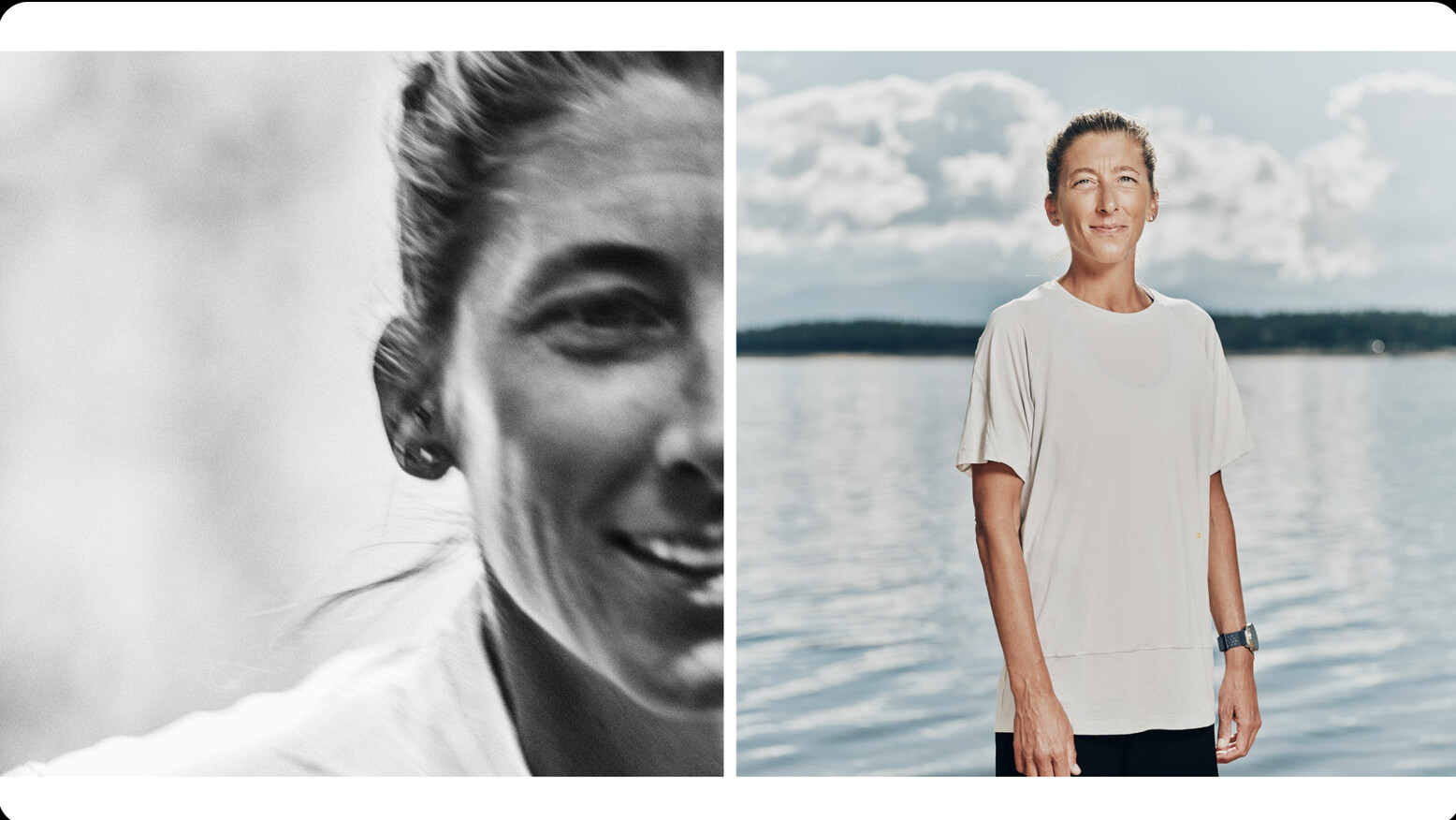

Dauwalter is probably (definitely) the best female trail runner in the world—a once-in-a-generation athlete. She’s hard to miss at the sport’s most famous races, and not just because of the nineties-style basketball shorts she prefers. (Her explanation: she just likes them.) It’s because she’s often running among the leading men in the sport, smiling beneath her mirrored sunglasses. The 39-year-old is five foot seven and lean, with smile lines and hair streaked with highlights from abundant time spent in high-altitude sun.
Dauwalter shared her historical daydream with me while sipping a pink sparkling water at her house in Leadville, Colorado, after a four-hour morning training run. Her cross-country wagon musings get at why she’s the best female ultrarunner ever to live: Dauwalter is curious. She’s curious about pain, about limits, about possibility. This quality is fundamental to what makes her so good.
Over the past eight years, Dauwalter has won almost everything she’s entered. In 2016, she set a course record at the Javelina Jundred—an exposed, looped route through the Sonoran Desert of Arizona. That same year she won the Run Rabbit Run 100-miler in Steamboat Springs, Colorado, by a margin of 75 minutes, despite experiencing temporary blindness for the last 12 miles (she could only see a foggy sliver of her own feet). Because of ultrarunning’s huge distances, it’s not unheard of to beat the competition by so much, but it doesn’t happen with the frequency that Dauwalter manages.
In 2018, she won the extremely competitive Western States 100 in California; it was her first time on the course. A year later, she set a new course record while winning the prestigious Ultra-Trail du Mont-Blanc (UTMB), besting the second-place finisher by just under an hour. In 2022, she set the fastest known time on the 166.9-mile Collegiate Loop Trail in her backyard in Colorado, and she won (and set a new course record at) the Hardrock 100, a grueling high-altitude loop through the state’s San Juan Mountains.
Dauwalter is also one of the few runners of her caliber to seriously dabble in the really long distance races. In 2017, she won the Moab 240—yes, that’s 240 miles—in two days, nine hours, and fifty-five minutes, ten hours ahead of the second-place finisher. She ran even farther at Big’s Backyard Ultra in 2020, a quirky test of wills where athletes complete a 4.167-mile course every hour on the hour until only one runner is left. Dauwalter set a women’s course record of just over 283 miles.
Given everything she’s accomplished, it’s hard to believe that the past two summers have been her most successful yet. In 2023, she returned to Western States, where she smashed the women’s course record by more than an hour and finished sixth overall. When she passed Jeff Colt, who finished ninth, he remembers how calm and collected she looked, running all alone. “My pacer looked back at me and said, ‘Jeff, I can’t even keep up with her right now,’ ” he says. Less than three weeks later, she won Hardrock again, taking fourth place overall and setting a new women’s course record. The race changes direction on the looped course each year, and she now holds both the clockwise and counterclockwise records.
In the interest of testing herself one more time, in late August she traveled to France to run UTMB again. She won that race too, becoming the first person in history to win all three races in a single summer. “She’s one of those humans who defy even the concept of an outlier,” says Clare Gallagher, a former Western States winner who has raced against Dauwalter. “I look at her summer and I have no words. It’s truly hard to conceptualize.”
Dauwalter led UTMB from the start, and she finished more than an hour ahead of the woman in second place. As she descended the final stretch of trail, she was followed by a barrage of cameras and a handful of people who looked like they just wanted a bit of her magic to rub off on them. As crowds roared on either side of the finish line in Chamonix, she looked back at the spectators and clapped in their direction, never raising her hands above her head or pumping her fists in the air. After hugging her parents and her husband, 39-year-old Kevin Schmidt, she jogged back in the direction she’d just come to high-five hundreds of fans.
Dauwalter grew up in the suburbs of Minneapolis, in a tight-knit family that was always active. The kids all played soccer, and when they weren’t at practice they were busy building tree forts or making up games at the local park. In seventh grade, she started running cross-country, and in eighth grade she joined the nordic ski team. She claims to have spent the first years just trying to stay upright, but in high school she went on to be a four-time state nordic ski champion and attended the University of Denver on a cross-country-skiing scholarship. She says that her parents, who now frequently crew and support her at races, led by example. “You work hard, you give everything you’ve got, you don’t forget to have fun,” she says.
Minnesota winters are notoriously cold, and she credits her ability to dig deep within herself to the unforgiving conditions. “Growing up there, you just learn to do stuff, regardless of the weather,” she says. She also points to a cross-country coach who taught her to think differently about pain. “He laid the groundwork for understanding that our bodies are capable of so much,” she says. “We can push past those initial signals saying that’s all I have and turn the knob, and there’s always one more gear.”
After college, Dauwalter taught middle and high school science in Denver, which is where she met Schmidt. “A woman I worked with and a guy he worked with were married, and they just kept putting us in the same places,” she says. “I didn’t know they were meddling!” Schmidt, who works as a software engineer, is also a competitive runner. He and Dauwalter train together—sometimes he’ll join in for her second run of the day—and they trade off supporting each other during races. When I met up with them in Leadville, Dauwalter had just finished crewing for Schmidt at a 100-miler in Switzerland. During her races, he maps her splits, takes care of her aid-station needs, and serves as crew captain. He’s the “spreadsheet brain” to her “tie-dye brain,” as he puts it, and he provides emotional support too.
“Its clear to me when she has taken up residence in the pain cave, so I try my best to fill it with snacks and encouragement,” says Schmidt. One time, while driving to an aid station during a race, Schmidt got a flat tire while carrying everything Dauwalter needed for the night. He wound up sprinting the final three miles to catch her in time.
When Dauwalter started racing more competitively and winning, she and Schmidt had a series of discussions about what they wanted their lives to look like. Ultimately, they decided that she should try to give professional running a shot. In 2017, without a sponsor and with a lot of unknowns still ahead, she left teaching to run full-time. “What we wanted was to look back when we were 90 years old and not wonder what if? about anything,” she says.
Mike Ambrose, the former team manager at Salomon, offered Dauwalter her first sponsorship as a trail runner that same year. She was still new on the scene, but Ambrose could see that she was driven, and the talent was there. “She’s super curious about pushing herself,” he says. “She had this huge engine coming from nordic skiing, and her 24-hour time was really crazy. I thought, well, if she just figures it out and gets more trail experience, she obviously has the mental and physical capacity.”
Despite her nearly superhuman athleticism and mental fortitude, Dauwalter is also very normal. She likes nachos, candy, and beer. She watches sports (the Vikings are her NFL team, even though she’s been in Broncos territory for years), and she wants to spend time with the people she loves, including her parents, and the friends who often crew for her.
Ultrarunning frequently sees short-lived stars, runners who dominate for a couple of years before burning out or slowing down, either from overtraining or simply from the passage of time and the wear on their bodies. Dauwalter, however, seems to have a rare capacity to push against her own limits without tipping over the edge. She’s been running long distances at an elite level for seven years now. Gallagher wonders how she’s managed to avoid injury, given Dauwalter’s volume of physically demanding races.
(01/18/2025) ⚡AMPEliud Kipchoge Returns to London Marathon: Eyes Fifth Victory in April
Distance running legend Eliud Kipchoge, one of the most celebrated marathoners in history, is set to make a highly anticipated return to the London Marathon this April. The 40-year-old Kenyan, a two-time Olympic marathon champion and a four-time winner of the London race, last competed on its iconic course in 2020.
Kipchoge’s presence in London marks another chapter in a storied career that has redefined marathon running. As the first man to break the 2-hour barrier in a marathon (in a controlled environment) and a former world record holder, Kipchoge has continually raised the bar in the sport.
A Drive to Overcome Challenges
Despite his unparalleled achievements, Kipchoge has recently faced new hurdles. His unexpected mid-race drop-out at the 2024 Paris Olympics, which he described as “demoralising,” cast a shadow on what was to be his final Olympic appearance. Yet, the setback has only fueled his determination to return stronger.
“Sport is full of challenges,” Kipchoge said. “I’m still working hard to get better, trying to inspire people and sell the power of sport.”
This relentless drive exemplifies the mindset that has propelled Kipchoge to the pinnacle of distance running and captivated fans worldwide.
London Marathon Legacy
Kipchoge’s history with the London Marathon is nothing short of remarkable. He claimed victories in 2015, 2016, 2018, and 2019, solidifying his status as the race’s most dominant figure. In 2020, he experienced a rare setback, finishing eighth in a race affected by adverse weather and an ear blockage. Now, in 2025, he returns to London with his sights set on a record-extending fifth title.
The Marathon GOAT’s Enduring Inspiration
Beyond his accomplishments, Kipchoge is admired for his ability to inspire through his philosophy of self-belief and perseverance. His return to London represents not only a quest for personal redemption but also a broader mission to motivate others through the power of sport.
As fans and fellow athletes eagerly await his next race, the 2025 London Marathon is shaping up to be one of the year’s most compelling sporting events. Whether Kipchoge claims his fifth title or not, his return is a testament to his enduring legacy as the greatest marathoner of all time.
(01/17/2025) ⚡AMP
Keira D’Amato Announces Her Return to the Boston Marathon with Passion and Purpose
Keira D’Amato is the American half marathon record holder with a time of 1:06:39 at the 2023 Gold Coast Half marathon on July 1, 2023. She held the American women's record in the marathon with her time of 2:19:12 at the 2022 Houston Marathon, until Emily Sisson set a new record time on October 9, 2022.
Krira, one of the most electrifying american athletes in distance running, has officially announced her return to the Boston Marathon in 2025. In a heartfelt post on Facebook, D’Amato reflected on her lifelong connection to the iconic race, sharing her journey from being a Boston Marathon spectator to an elite competitor, and now, a returning champion with “unfinished business.”
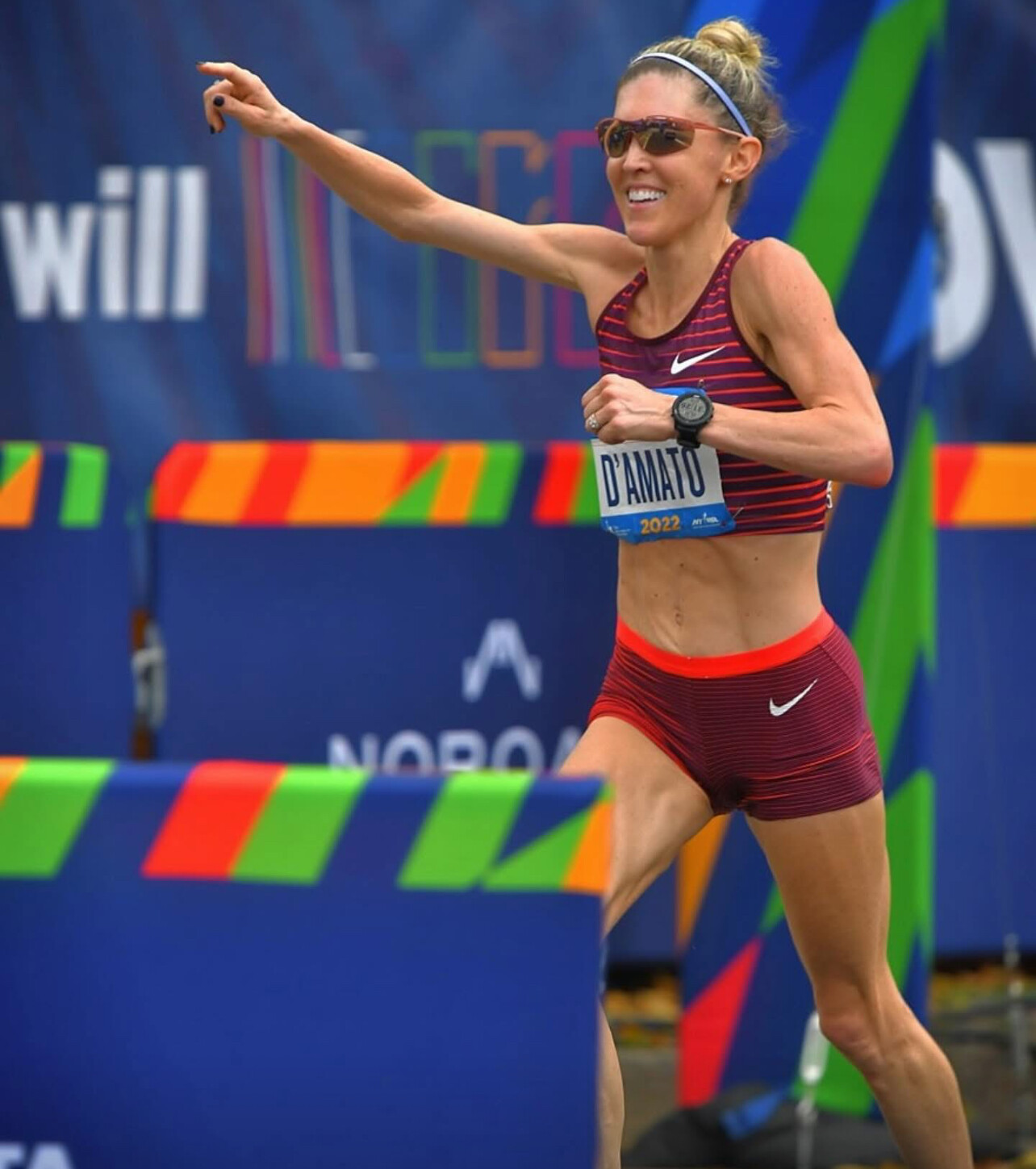
A Lifelong Fan Turned Competitor
D’Amato’s relationship with the Boston Marathon began long before she donned an elite bib. In her post, she reminisced about being a devoted fan of the race, watching the action unfold on TV countless times and cheering passionately along the famed streets of Wellesley. Her early admiration for the event sparked a personal goal—to qualify for Boston, a feat that became a challenging yet transformative chapter in her running career.
“I’ve chased the BQ [Boston Qualifier] dream and come up short,” D’Amato shared. “I built up the courage and strength, and I went after it again and finally dipped under the qualifying standard.”
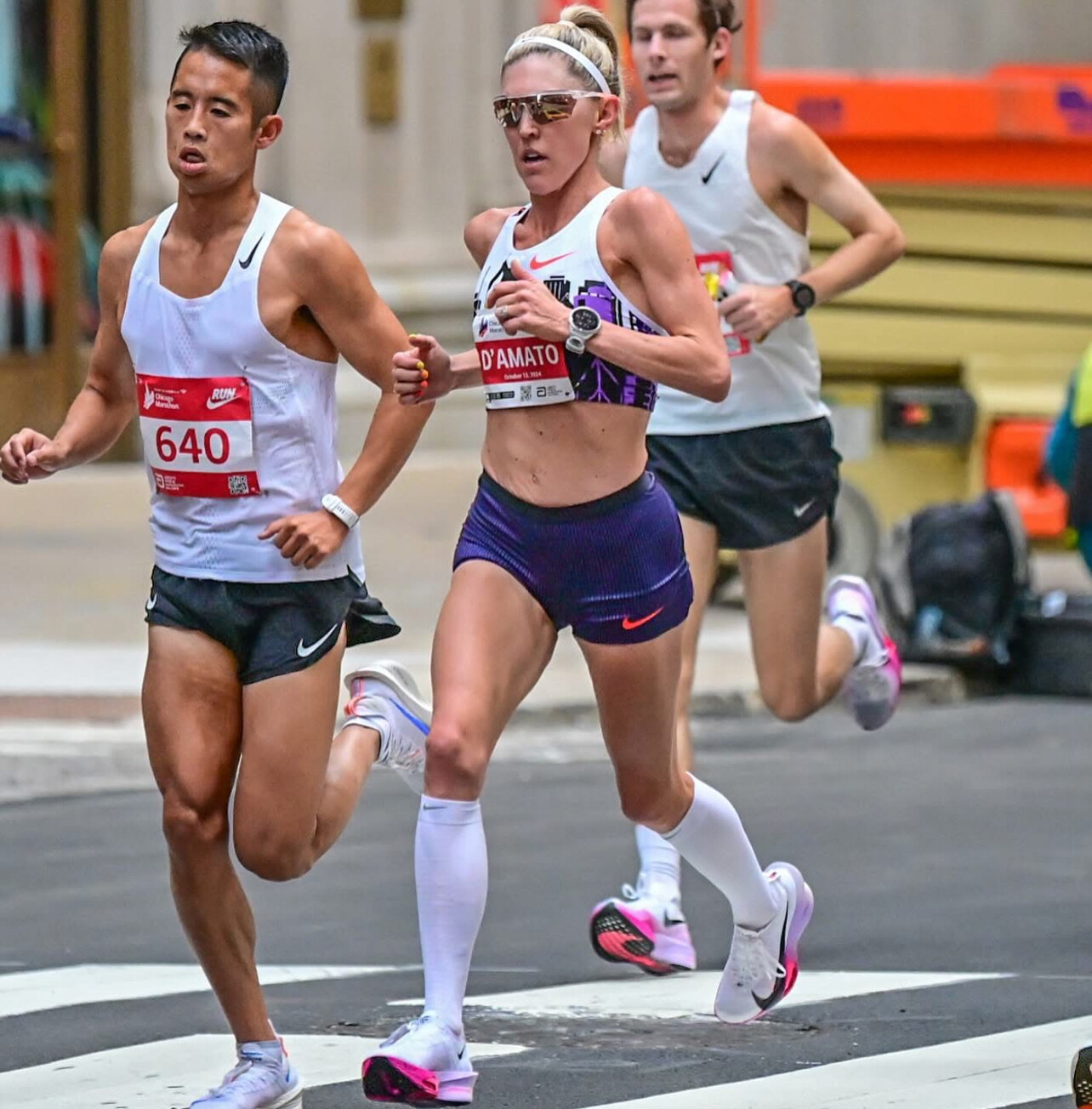
That perseverance paid off in 2018 when she not only achieved her goal but found herself racing in Boston as part of the prestigious elite women’s field.
A Return with “Unfinished Business”
Fast forward to 2025, and D’Amato’s Boston story is far from over. After breaking the American marathon record in 2022 and solidifying her place among the world’s best, D’Amato is now returning to the storied streets of Boston with new goals, fierce determination, and a deep appreciation for what the race means to her.
“Now, in 2025, I’m coming back to Boston with unfinished business,” she declared. “Boston, I’m back.”
The phrase “unfinished business” hints at D’Amato’s competitive fire and her aspiration to leave an even greater mark on the historic course. Whether it’s contending for a podium finish or chasing personal milestones, her return is sure to electrify this year’s race.
A Personal and Historic Connection
The Boston Marathon, steeped in tradition and known for its challenging course and unpredictable conditions, resonates deeply with D’Amato’s own story of resilience and reinvention. Her journey from a recreational runner and working mom to breaking records and competing at the highest levels is a testament to her grit and passion—a perfect reflection of Boston’s spirit.
As she counts down the days to Patriot’s Day, her excitement is palpable, and her story continues to inspire runners of all levels to dream big, face setbacks, and keep striving for their personal bests.
The Countdown to Patriot’s Day
D’Amato’s announcement has sparked anticipation among fans and the running community as the Boston Marathon, slated for Monday, April 21, 2025, promises to be another unforgettable chapter in marathon history. With D’Amato in the mix, the race is sure to deliver thrilling moments and inspire runners worldwide.
Whether she’s racing for victory or personal redemption, one thing is certain: Keira D’Amato’s return to Boston is one to watch.
(01/17/2025) ⚡AMP
by Boris Baron
Boston Marathon
Among the nation’s oldest athletic clubs, the B.A.A. was established in 1887, and, in 1896, more than half of the U.S. Olympic Team at the first modern games was composed of B.A.A. club members. The Olympic Games provided the inspiration for the first Boston Marathon, which culminated the B.A.A. Games on April 19, 1897. John J. McDermott emerged from a...
more...Elite Runners Set to Compete in the 2025 Chevron Houston Marathon and Aramco Houston Half Marathon
The 2025 Chevron Houston Marathon and Aramco Houston Half Marathon, scheduled for this weekend, January 18-19 will feature a strong lineup of elite athletes aiming for remarkable performances.
Women’s Half Marathon:
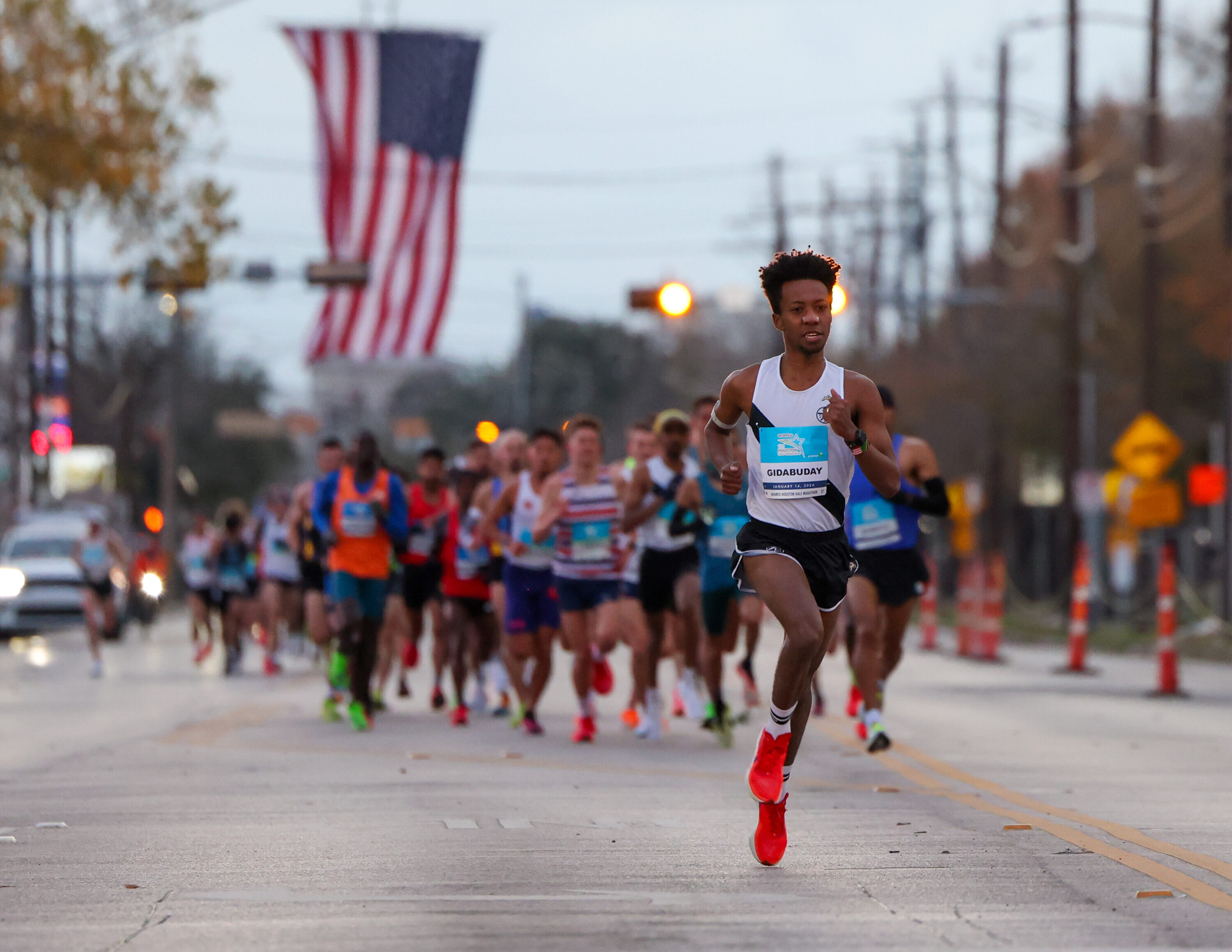
• Natasha Wodak (Canada): The Canadian marathon record holder, with a half-marathon personal best of 1:09:41, returns to Houston after securing ninth place in the previous year’s event.
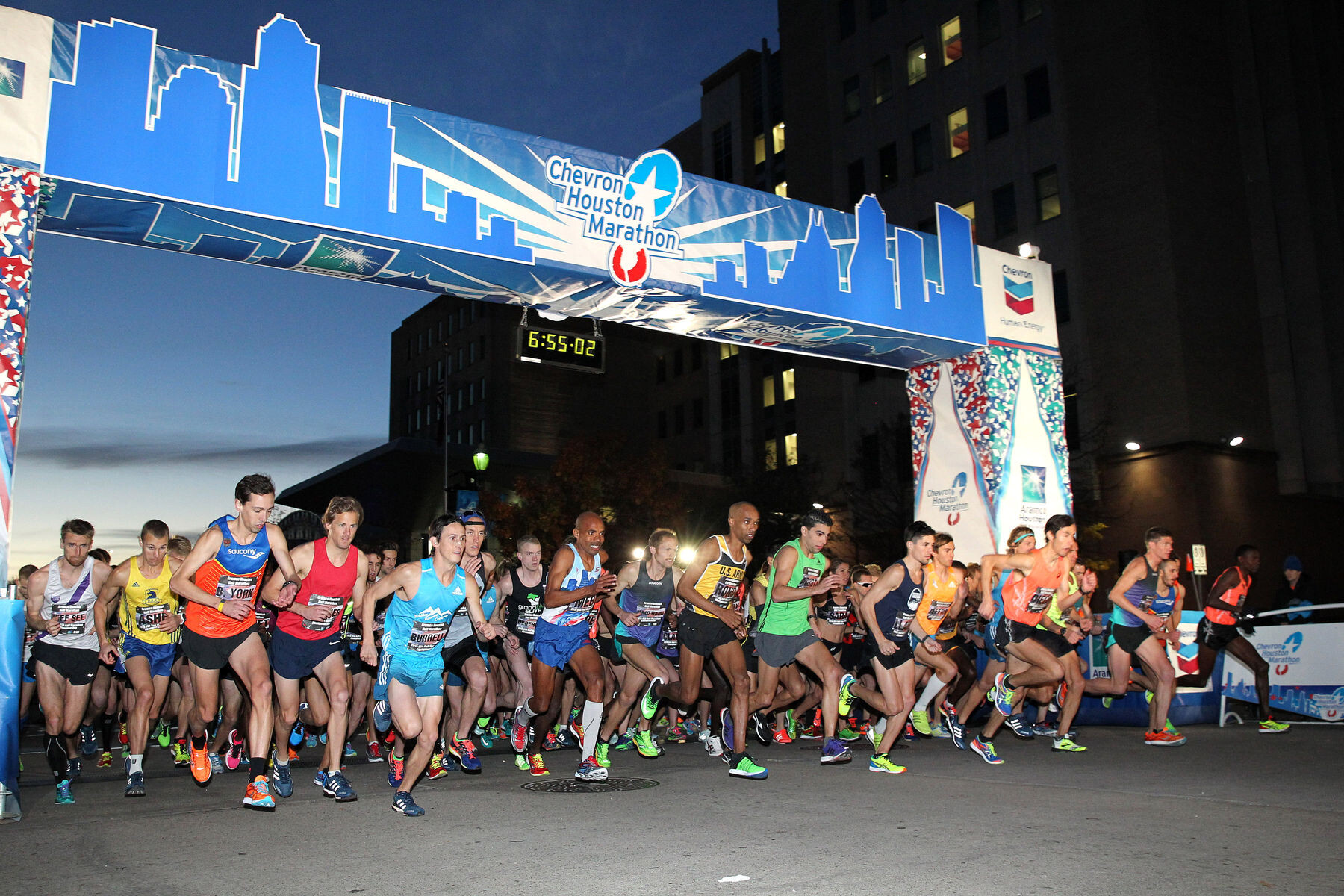
Men’s Half Marathon:
• Ben Flanagan (Canada): Holds a personal best of 1:01:00 from 2022 and seeks a strong start to his 2025 season.
• Thomas Fafard (Canada): Paris Olympic 5,000m finalist, returning after a 12th-place finish in 2024 with a personal best of 1:02:17.
• Ben Preisner (Canada): Canada’s third-fastest marathoner, with a half-marathon personal best of 1:02:42, making a return after an eight-month racing hiatus.
• John Gay (Canada): Olympic steeplechaser set to make his half-marathon debut.
Women’s Marathon:
• Dayna Pidhoresky (Canada): With a personal best of 2:29:03, she is running her first marathon in over a year.
• Rachel Hannah (Canada): 2024 Around the Bay Road Race champion and recent bronze medalist at the 2024 Canadian Cross Country Championships.
Men’s Marathon:
• Thomas Broatch (Canada): Returning after a top-10 finish in 2024, with a personal best of 2:11:51.
• Andrew Alexander (Canada): Debuted with a 2:14:13 marathon at the 2024 Canadian Marathon Championships.
• Phil Parrot-Migas (Canada): Achieved a personal best of 2:15:32 at the 2024 Chicago Marathon.
The full elite field for the 2025 Chevron Houston Marathon and Aramco Houston Half Marathon includes a diverse group of international athletes, all aiming for exceptional performances on Houston’s renowned flat and fast course.
(01/17/2025) ⚡AMP
by Boris Baron
Chevron Houston Marathon
The Chevron Houston Marathon offers participants a unique running experience in America's fourth largest city. The fast, flat, scenic single-loop course has been ranked as the "fastest winter marathon" and "second fastest marathon overall" by Ultimate Guide To Marathons. Additionally, with more than 200,000 spectators annually, the Chevron Houston Marathon enjoys tremendous crowd support. Established in 1972, the Houston Marathon...
more...Ruth Chepngetich Confirmed for 2025 London Marathon After Record-Breaking Chicago Performance
World marathon history-maker Ruth Chepngetich, who astonished the global running community in October 2024 with a jaw-dropping performance in Chicago, has officially been confirmed for the 2025 London Marathon. The race will take place on Sunday, April 27, marking another opportunity for the Kenyan superstar to cement her legacy as one of the greatest marathoners of all time.
Chepngetich stunned the world last October when she shattered records at the Chicago Marathon, becoming the fastest woman ever over the marathon distance. Her achievement not only showcased her unparalleled endurance and speed but also set a new benchmark for women in distance running.
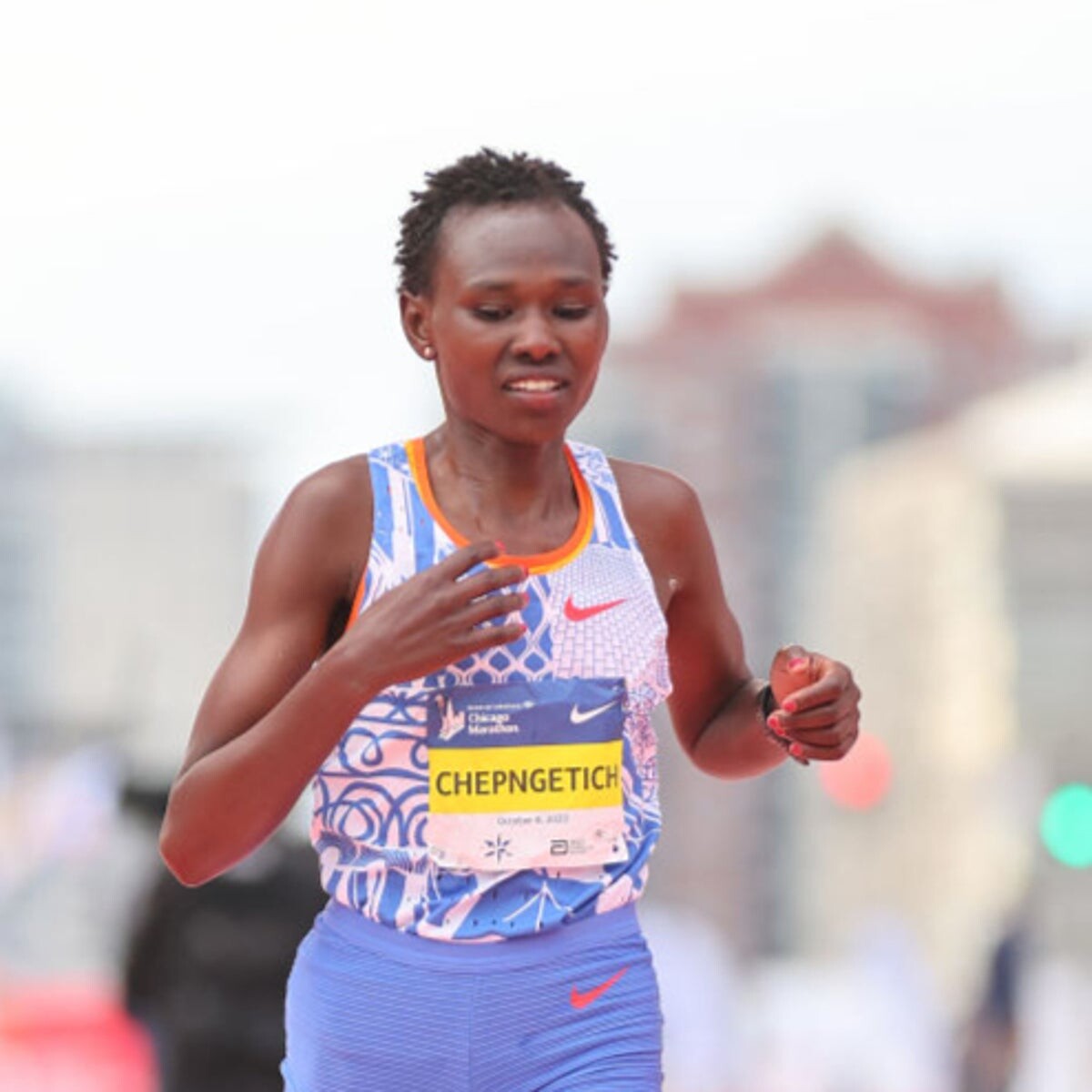
The London Marathon, known for its elite competition and iconic course through the heart of the city, has always attracted the best in the sport. With Chepngetich now confirmed, anticipation is soaring as fans and fellow athletes eagerly await what could be another historic performance.
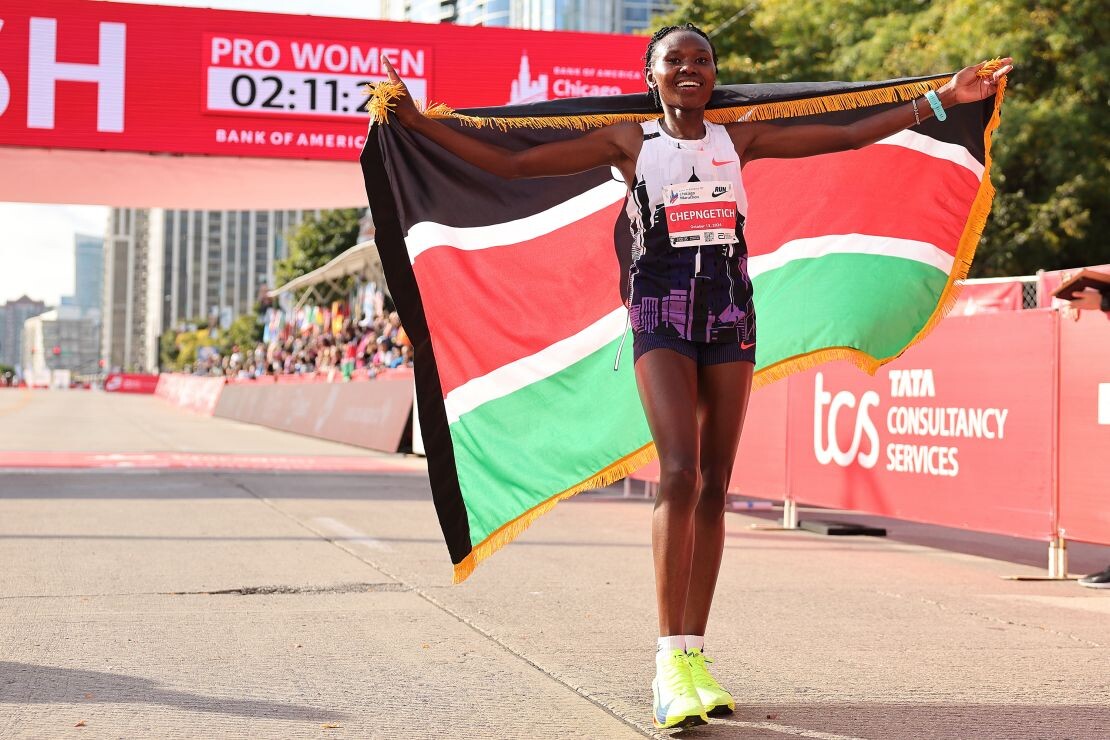
Chepngetich’s entry is expected to add extra excitement to an already competitive field. Her presence will undoubtedly challenge other top contenders, pushing them to new heights as they vie for the coveted London title.
Having already demonstrated her dominance in Chicago, the question now is: can Ruth Chepngetich take her record-breaking form to London and once again leave an indelible mark on marathon history? All eyes will be on her this April as she embarks on yet another extraordinary chapter in her storied career.
(01/17/2025) ⚡AMP
by Boris Baron
Remembering Tommy Leonard
The great Tommy Leonard passed quietly from our midst six years ago today (17 Jan. 2019) at JML Care Center in Falmouth, Massachusetts at age 85. The beloved founder of the Falmouth Road Race and long-time bartender at Boston’s legendary Eliot Lounge, Tommy was the patron saint of running to thousands of people around the globe.
Those who knew and loved him dearly did so not just for a shared love of running, but for his endless acts of selflessness and generosity of spirit. Even those who had never met him felt like they knew him from the stories they’d heard. Such was the effect Tommy had on people, a best friend you might not have ever met.
TL’s contributions were incalculable, and not just to the running community. He and fellow Back Bay barkeep at the Bull & Finch Pub (the Cheers bar on TV) Eddie Doyle raised funds for causes far and wide through the years from their posts behind the hardwood.
And though TL grew up in an orphanage and foster homes in western Massachusetts, he created a worldwide family with his Irish twinkle, zest for life, and an embracing you-centered concern. He was like a human endearment machine that functioned perfectly all the way to the very end of his days.
True, he was more of a dreamer than a hands-on producer. But TL was a wizard at bringing the right people together while creating an atmosphere where good times were to be had by all. Today, we recall his passing from a world where such character and traits seem increasingly anachronistic.
It was with full hearts we sent TL off on his next grand adventure in 2019. Off beyond “the powder-puff clouds and shimmering Vineyard Sound” to make the saints laugh, God give praise, and make more angels that can fit on the head of a pin happy.
Bless you, Tommy Leonard, your light and spirit will continue to shine through to show us the way.
(01/16/2025) ⚡AMPby Toni Reavis
Hayden Hawks Named 2024 UltraRunner of the Year
Hayden Hawks has been named the 2024 UltraRunner of the Year, cementing his status as one of the most accomplished athletes in ultrarunning. The recognition comes after a stellar season highlighted by victories in some of the world’s most prestigious ultra-distance races.
The Cedar City, Utah native delivered standout performances, including a victory at the Courmayeur-Champex-Chamonix (CCC) 101K on Mont Blanc. Known as one of the toughest races in the Ultra-Trail World Tour, the CCC is a proving ground for elite ultrarunners, and Hawks’ 10:20:11 finish solidified his dominance on the global stage.
He also claimed victory at the highly competitive Black Canyon 100K in Arizona, where he not only won but set a new course record with a time of 7:30:18. His season was rounded out with podium finishes at races like the Western States 100, where he placed third in 14:24:31, and the Julian Alps Ultra-Trail in Switzerland, where he finished second.
Hawks lives in Cedar City with his wife, Ashley, and their two children. Balancing a demanding training schedule with family life, he credits his support system for his success, calling his family his “greatest motivation.”
Hawks’ achievements in 2024 highlight his versatility across different terrains and conditions. Whether racing on the mountainous trails of Europe or the arid landscapes of the American West, Hawks has consistently demonstrated his ability to adapt and excel. His Black Canyon course record and CCC triumph underscore his speed, endurance, and tactical prowess.
As the 2024 UltraRunner of the Year, Hayden Hawks has not only etched his name into the sport’s history but also inspired countless runners worldwide to push their limits. With a career that continues to rise, the running community eagerly awaits what 2025 will bring for this ultrarunning star.
(01/15/2025) ⚡AMPIngebrigtsen to Make Indoor Mile Debut at Lievin Meeting
Norwegian middle-distance sensation Jakob Ingebrigtsen is set to make his indoor mile debut at the Meeting Hauts-de-France Pas-de-Calais Trophee EDF in Lievin on February 13. The 24-year-old will return to the venue where he set his world indoor 1500m record of 3:30.60 during the World Athletics Indoor Tour Gold meeting in 2022.
Since that record-breaking performance, Ingebrigtsen has continued to dominate, setting outdoor world records in the 2000m and 3000m, as well as achieving a world best for two miles. The reigning world and Olympic 5000m champion also holds a European record for the mile with a blistering time of 3:43.73, placing him third on the world all-time list.
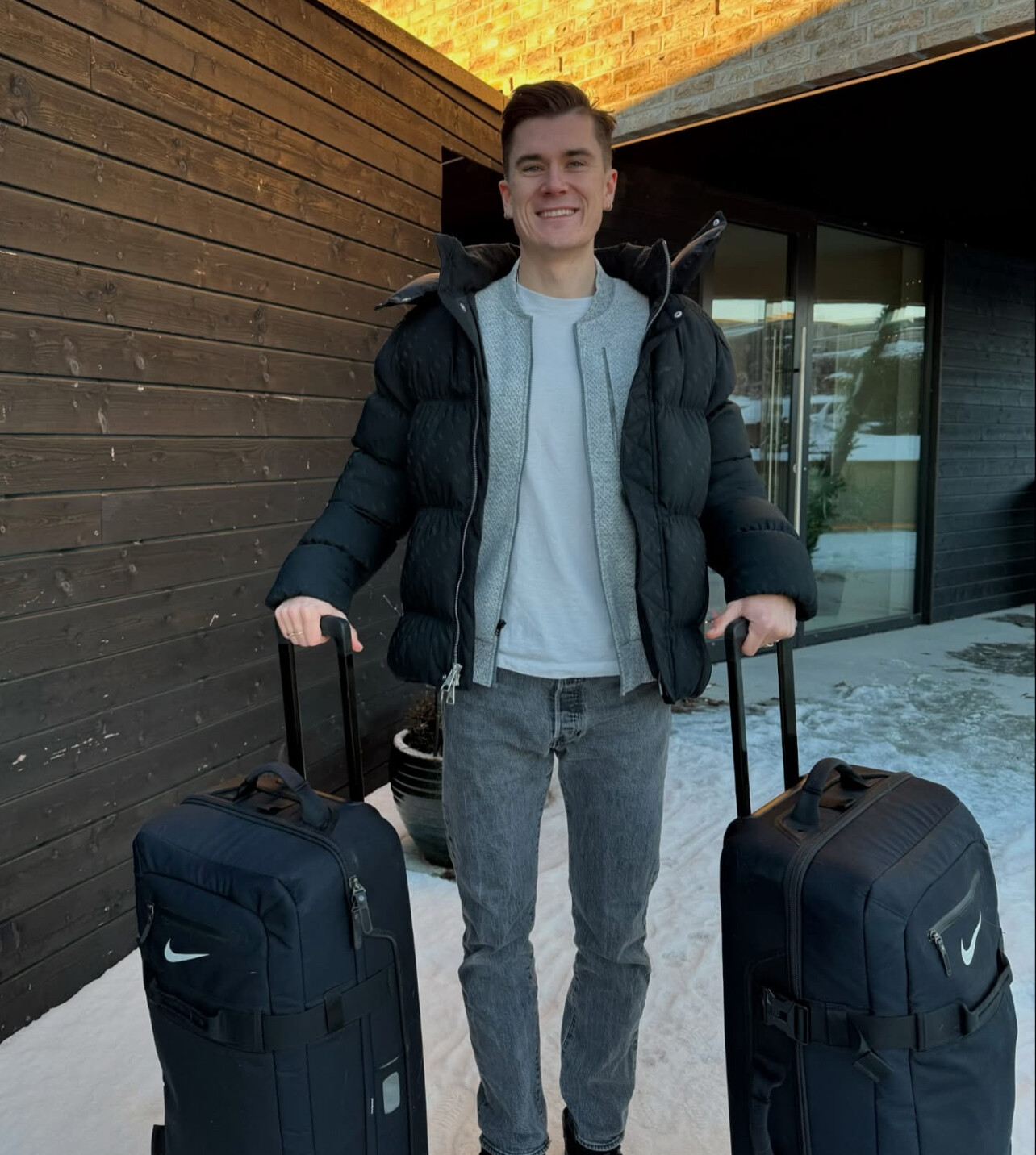
A three-time winner in Lievin, Ingebrigtsen claimed victories in the 1500m in 2021 and 2023, alongside his record-setting performance in 2022. His debut in the indoor mile is expected to be one of the season’s most anticipated events.
(01/15/2025) ⚡AMPKenya Athletics Training Academy (KATA) January Time Trial Results – January 15, 2025 Thika Kenya
In the men’s race, Zachary Kirika, one of KATA’s top athletes, dominated the event with a commanding solo performance, finishing in an impressive time of 29:28. Reflecting on his run, Zachary acknowledged the challenge of maintaining a strong pace without competition to push him.
Emerging talent Stephen Ngigi delivered a remarkable performance, finishing second with a personal best of 30:12, improving his previous time by 11 seconds. The highlight of the day belonged to John Chege, who placed fourth but achieved a massive personal best of 30:18, shaving over 30 seconds off his previous record.
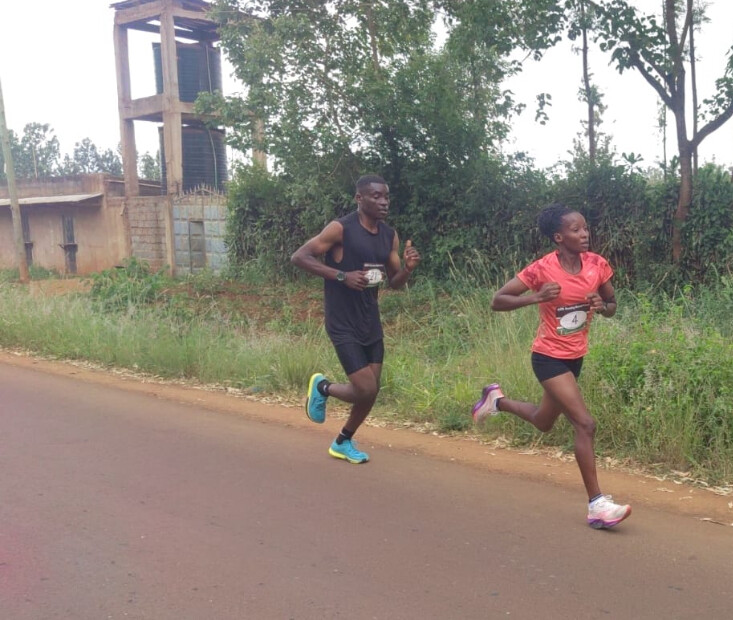
In the women’s race, Kellen Waithira secured victory with a time of 35:23, while Virginia Wanjiru finished second in 36:50, showcasing strong performances in the absence of more seasoned competitors.
The KATA Time Trial continues to be a critical platform for developing and showcasing talent, building a solid foundation for future successes.
MEN 10km
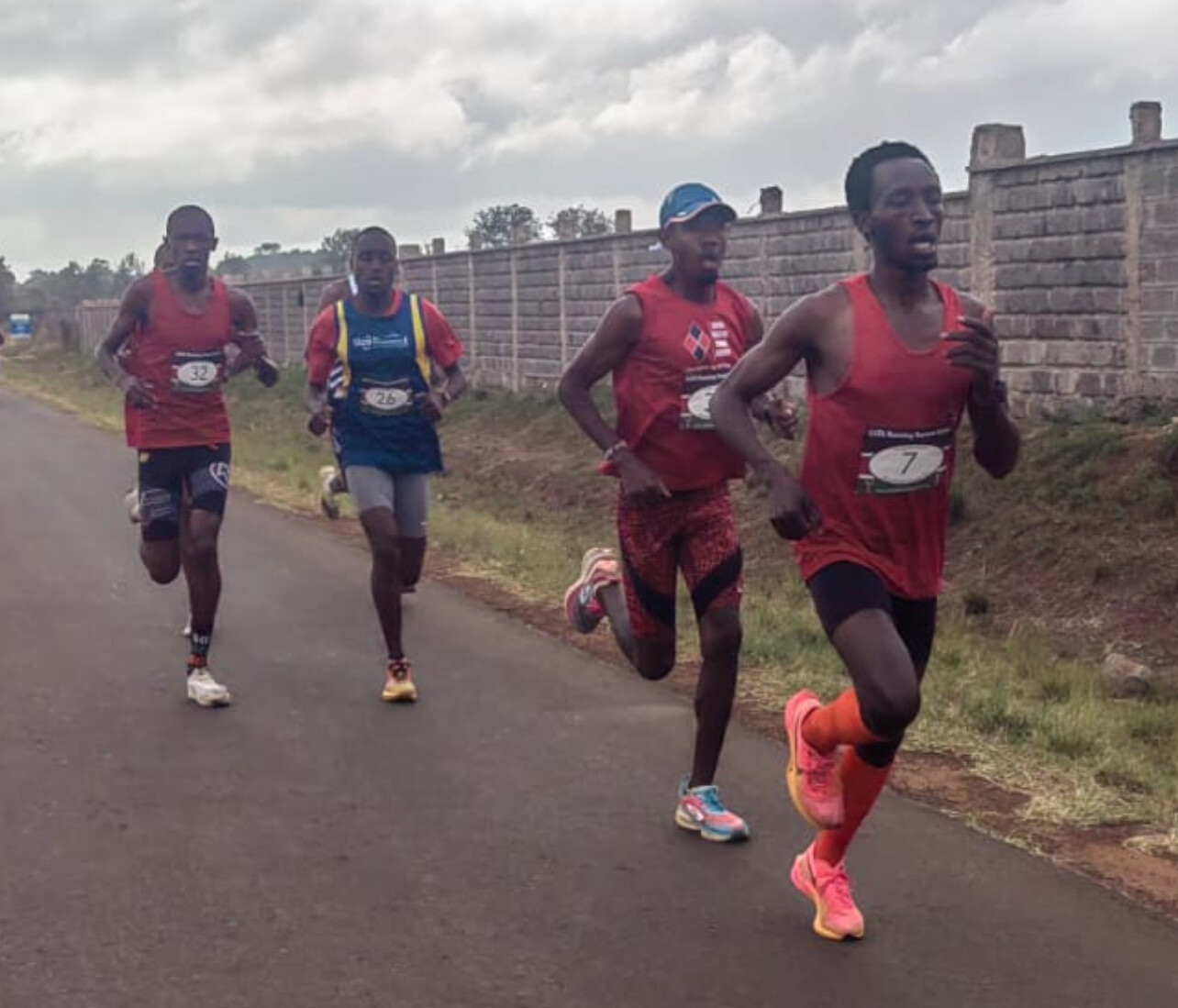
1 Zachary kirika 22 32 29:28
2 Stephen ngigi 20 29 30:12
3 peter mburu 22 26 30:17
4 John chege 19 30 30:18
5 Boniface mungai 29 7 31:14
6 Gabriel kahura 42 12 31:56
7 kariuki wangari 25 5 33:25
8 Joseph wanjiru 38 45 33:47
9 Ali Rashid 22 14 33:53
10 Jeremiah obura 20 21 35:15
11 Charles ndirangu 64 53 37:07
WOMEN 10km
1 Kellen waithira 36 4 35:23
2 Virginia wanjiru 22 41 36:50
3 Naomi wambui 40 34 27:08
4 Karen chepkemoi 23 38 38:29
5 Lucy muritu 39 19 44:59
MEN 5km
1 Charles ndirangu 24 10 15:46
2 Justus nyamai 17 206 16:57
3 Collins mutugi 16 50 20:37
WOMEN 5km
1 Lilian nyamai 24 2 18:20
(01/15/2025) ⚡AMP
by Boris Baron
KATA Time Trial Series
Welcome to the KATA Monthly Time Trial Held at the Kenyan Athletics Training Academy in Thika, Kenya, the KATA Monthly Time Trial is a unique and inclusive event designed to support runners of all levels in achieving their goals and showcasing their fitness. This event offers both 10K and 5K distances on an accurate, certified course, providing participants with...
more...Rosa Mota: Defying Age with a 38-Minute 10K World Record at 66
At 66 years old, Rosa Mota, Portugal’s marathon icon and former Olympic champion, continues to prove that greatness knows no age. Most recently, she stunned the world by setting a new age-group world record for the 10K, finishing in an astonishing time of 38:25.This achievement not only cements her status as a legendary athlete but also highlights her remarkable longevity in a sport dominated by younger competitors.
The record-breaking performance occurred during the San Silvestre Vallecana 10K race, where Mota finished with a time of 38:25, significantly improving her previous W65 world record of 38:45, set in Valencia almost a year prior.

Rosa Mota rose to international fame in the 1980s, dominating the marathon scene and becoming one of the greatest long-distance runners in history. Born in Porto in 1958, she grew up with a love for running and quickly emerged as a standout athlete.
Her career highlights include winning the marathon gold medal at the 1988 Seoul Olympics and bronze at the 1984 Los Angeles Olympics. She also won the inaugural women’s marathon at the European Championships in 1982, setting the tone for her incredible career. Rosa claimed victories in major marathons worldwide, including Boston, Chicago, and London, and her legacy includes a World Championship title in 1987.
Pushing the Limits at 66:
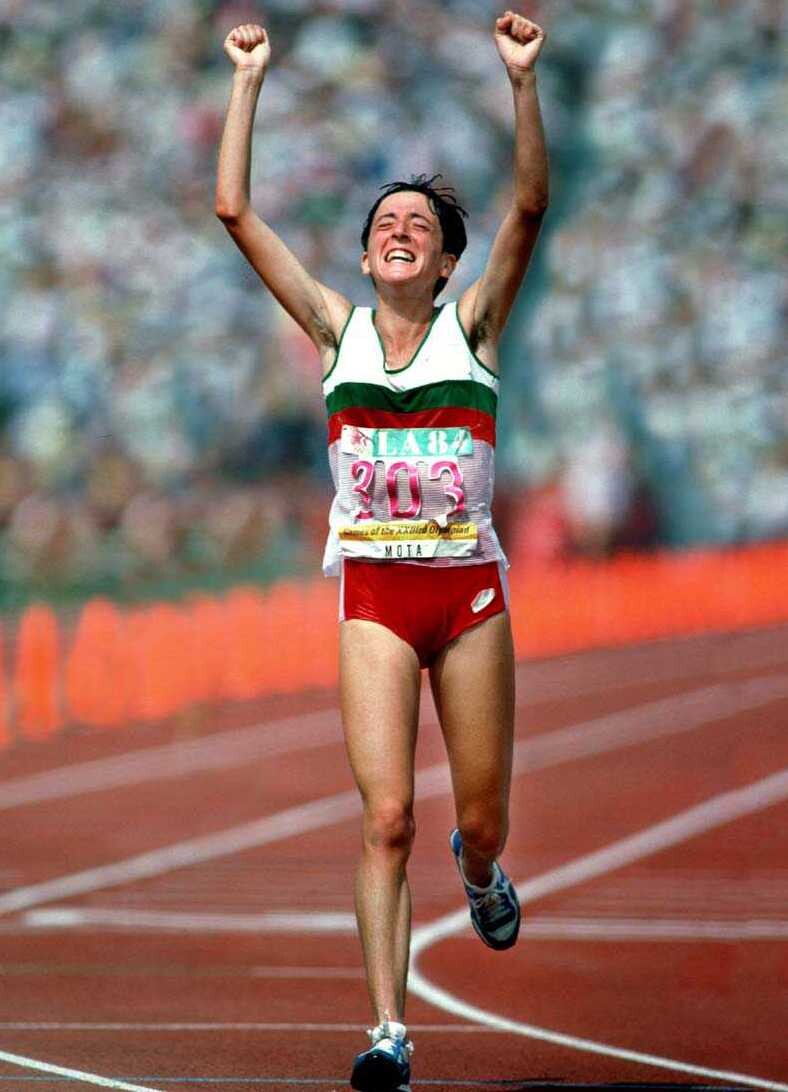
Rosa’s most recent feat is part of a series of record-breaking performances that have reignited her fame in the running world. Earlier this year, she set a W65 world record in the half marathon with a time of 1:25:52, followed by her stunning 10K record of 38:25. These times are exceptional not just for her age group but for athletes of any age, underscoring Rosa’s incredible dedication and talent.
Rosa attributes her success to a lifelong passion for running and disciplined training. “I never stopped loving this sport,” she said after her race. “I still wake up every day excited to run, to challenge myself, and to show others that age is not a limit—it’s an opportunity.”
The Secret Behind Rosa’s Success:
Rosa’s training has evolved over the years, focusing on smart, consistent workouts that prioritize recovery. She combines speedwork, long runs, and cross-training with strength exercises and yoga to maintain her agility and endurance. A balanced Mediterranean diet, rich in fruits, vegetables, and lean proteins, also contributes to her vitality.
“I listen to my body more now than I did in my younger days,” she explains. “Rest and recovery are just as important as the training itself.”
A Beacon of Inspiration:
Beyond her athletic achievements, Rosa Mota is a symbol of resilience and empowerment. She remains an active figure in the running community, advocating for health, fitness, and women’s participation in sports. Through her recent performances, she has inspired not only her peers but also younger generations of runners.
“I want people to know it’s never too late to dream big,” Rosa says. “Set goals, stay consistent, and believe in yourself. That’s how records are broken—on and off the track.”
Legacy of Greatness:
Rosa Mota’s 38-minute 10K record is more than just a number—it’s a testament to the power of determination, discipline, and a lifelong love for running. As she continues to push boundaries, she reminds us all that the human spirit can triumph over any obstacle, including the passage of time.
(01/14/2025) ⚡AMP
by Boris Baron
Here’s Why You Need a Training Plan Even if You’re Not Racing
This could be the key to making your running experience more enjoyable and productive.
Before you step outside or onto a treadmill to log your first steps as a new (or returning-from-a-long-break) runner, you might want to consider a training plan, even if you’re not training for a race. Yet.

One the one hand, er, foot, yes, all you need to do is take those first steps and you’re on your way to logging miles and feeling those famous-yet-elusive endorphins that fuel the runner’s high. On the other foot, a training plan provides guidance that can help make the experience more enjoyable and productive, says Hiruni Wijayaratne, a coach with My Olympic Coach, who holds 10 Sri Lankan national records across varying distances.
“Following a training plan is very similar to following a recipe,” Wijayaratne says. “When you follow a plan, you can look back at the steps and the outcome, and go back and look at what went well or what went wrong along the way.”
Guidance From the Experts
When you’re unsure where to begin—how long to run, whether you should do a combination of run/walk, what rest days should look like—a trusted plan will provide the first step. It’s important to find a training plan from a trusted source or coach.
“Going with a basic plan is better than not having a plan at all,” says certified run coach Alethia (Mekela) Mongerie, the founder of Sole Legacy Coaching.
But don’t choose just any plan posted on the internet or what your cousin’s best friend who ran a marathon once says you should do. A major red flag in a training plan, Wijayaratne says, is that there is no variation. For example, it will tell a runner to run a 5K every other day, with no specificity or variety.
She also warns against plans that have no dedicated rest days. “My number-one goal is to make sure my athlete is healthy,” she says. “If recovery is not in the plan, it’s immediately setting someone up to not succeed.”
Mongerie cautions new runners to be wary of plans that have long speed workouts (for example, lots of fast repeats around the track) or if they require certain paces. Eventually runners will work up to these harder, more specific workouts, but there’s no need to start with them.
Remove the Guesswork
A training plan written by running experts lets you focus on one thing: Getting out the door and on the move. (Okay, that’s two things.)
A plan, Mongerie, says, gives runners guidance for when they should run, how much, and for beginners especially, how they should feel.
When you don’t have to focus on anything other than the workout, you can run more relaxed, making the workout more productive.
Plus, Mongerie says, having a plan can hold athletes accountable, especially helpful for when the mornings are dark and cold and wet.
“The structure of a training schedule can give purpose to the athlete,” she says. “Something about knowing [the specifics of a workout] gives the athlete control over their fitness journey… which makes it more likely they’ll have a successful outcome.”
Prevent Injury
If you’re not working with a coach, a structured training plan can be an effective way to help avoid injury, especially for novice runners, Mongerie says, noting the plan should meet the runner where they are in terms of mileage and fitness. For example, if someone is lacing up for the first time, a plan should not have them running 40-mile weeks.
“The plan should prescribe mileage in a conservative manner, never increasing it by too much and allowing for recovery weeks,” Mongerie says.
Another important aspect of sidestepping injury is strength and mobility work. A comprehensive training plan might include these, but runners may need to supplement on their own or work with a coach.
“Athletes need a strong and flexible body to run efficiently, which is a key to injury prevention,” Mongerie says.
Set Yourself Up for Future Success
A training plan will help you lay the groundwork for a successful (and enjoyable!) running career. Even if you never decide to race, you can use the lessons learned for the miles ahead.
“An athlete will become familiar with the proper terminology, the purpose of each training session, expected adaptations, and the benefits of recovery and injury prevention,” Mongerie says.
As the plan progresses so will you, as a runner, and these early building blocks will help you run longer—and faster, if that’s your goal.
Wijayaratne says that runners shouldn’t use the same plan over and over again; variables are the key to improving fitness.
“Let’s zoom out,” she says. “If the training went well, that plan went well, we’re always looking at the next evolution and what that looks like.”
In other words, a good training plan will help you hit your goal, and then you make the next goal a little bit more challenging—and your plan should reflect that.
“If you do the same things or the principles of the same thing, you’re going to get the same outcome,” she says.
(01/13/2025) ⚡AMPOlympic and World Triathlon Champion Alex Yee Shines at Valencia 10K Ahead of Marathon Debut
Olympic and world triathlon champion Alex Yee continued to impress with his running prowess, finishing in the top 30 at the Valencia 10K on Sunday, January 12, 2025. Competing in his first official race over the 10K distance, Yee clocked a time of 28:07, showcasing his versatility and speed as he prepares for his marathon debut in April at the London Marathon.
The 25-year-old, who has earned two Olympic gold medals and numerous triathlon world titles, was the third-fastest British runner in the race. Rory Leonard set a new British 10K record with an incredible 27:38, followed closely by Charlie Wheeler, who achieved a personal best of 27:42. Yee, finishing over a minute behind Sweden’s Andreas Almgren—who shattered the European 10K record in 26:53—remains focused on transitioning his elite triathlon career to include long-distance running.
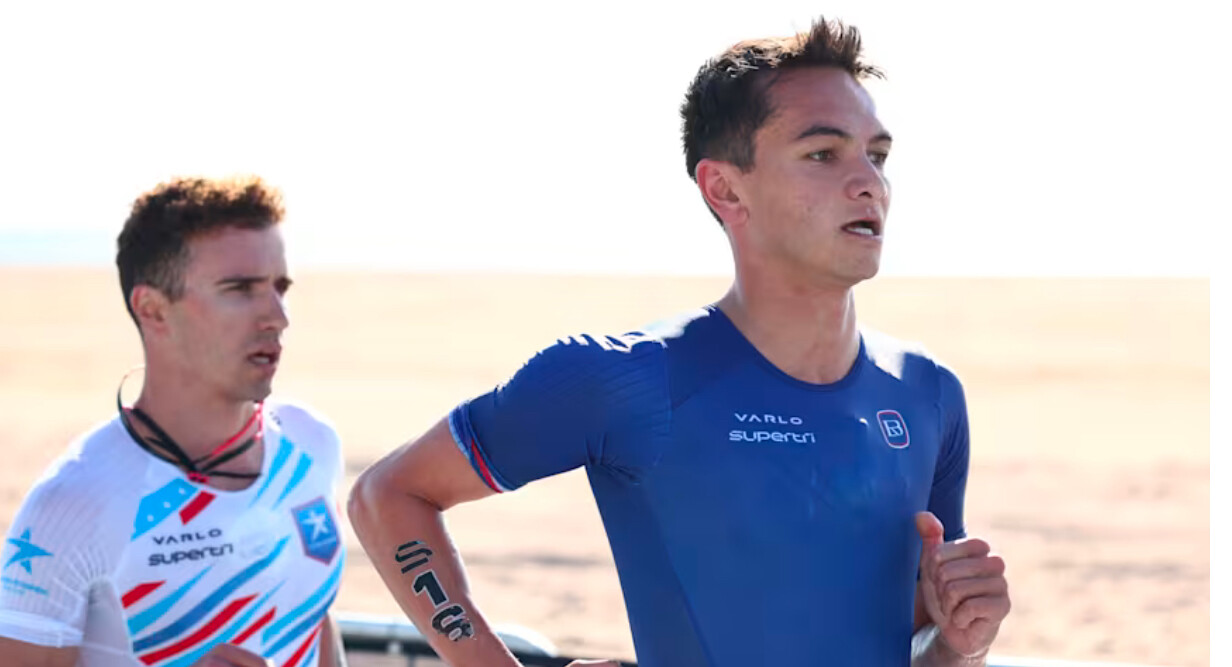
Known for his exceptional running ability, Yee has long been considered one of the fastest triathletes in history, often posting the fastest splits in international competitions. The Valencia 10K marked an important step in his progression as a pure runner, as he sets his sights on challenging for a strong marathon debut in London this April.
Yee’s dual success in triathlon and running highlights his incredible athleticism, endurance, and adaptability, making him a serious contender in the world of distance running.
The 26-year-old reflected on his performance in an Instagram story: “Not bad not good! Needed some strength on K 7/8... What an amazing race to be part of! 7 national records and a European record."
(01/12/2025) ⚡AMPTCS London Marathon
The London Marathon was first run on March 29, 1981 and has been held in the spring of every year since 2010. It is sponsored by Virgin Money and was founded by the former Olympic champion and journalist Chris Brasher and Welsh athlete John Disley. It is organized by Hugh Brasher (son of Chris) as Race Director and Nick Bitel...
more...Hirpa and Gemechu lead Ethiopian sweep at Dubai Marathon
Bedatu Hirpa came from behind to take the women’s title at the Dubai Marathon in a huge PB of 2:18:27, while marathon debutant Bute Gemechu made it an Ethiopian double by taking the men’s title at the World Athletics Label road race in 2:04:51 on Sunday (12).
After an intriguing five-way tussle up to 25km, Dera Dida and training partner Hirpa forged a lead which was to prove unassailable for the pursers. When Dida eased away with 5km to go, it looked as though she was set to repeat her 2023 victory.
But as soon as she came into the lengthy finishing straight, she started to struggle with stomach cramps. At that stage, with less than a kilometre to run, Hirpa was still 10 seconds behind, but the 2015 world U18 1500m champion soon made up the ground and eased into the lead.
Hirpa crossed the line in 2:18:27, a substantial improvement on the PB of 2:21:09 she set in Amsterdam three months ago. Dida finished five seconds behind but was rewarded with a PB of 2:18:32. Tigist Girma, contesting her first marathon since December 2022, was third in 2:20:47.
Bute Gemechu broke away from the leading men’s group at 35km. Compatriot Shifera Tamru cut the gap to about 20 metres with two kilometres to go, but his challenge was short-lived.
Gemechu went on to win in 2:04:51, becoming the fifth Ethiopian debutant in succession to win the Dubai men’s race. Berehanu Tsegu came through for second place in 2:05:14 ahead of Tamru (2:05:28).
Ethiopian athletes filled the top 16 places in the women’s race and the first 14 positions in the men’s race.
Women1 Bedatu Hirpa (ETH) 2:18:272 Dera Dida (ETH) 2:18:323 Tigist Girma (ETH) 2:20:474 Zeineba Yimer (ETH) 2:21:125 Bertukan Welde (ETH) 2:21:546 Kuftu Tahir (ETH) 2:22:537 Gadise Mulu (ETH) 2:23:198 Almaz Kebede (ETH) 2:23:309 Kebebush Yisma (ETH) 2:24:0410 Dibabe Beyene (ETH) 2:24:38
Men1 Bute Gemechu (ETH) 2:04:512 Berehanu Tsegu (ETH) 2:05:143 Shifera Tamru (ETH) 2:05:284 Desalegn Girma (ETH) 2:06:525 Dejene Hailu (ETH) 2:07:036 Getachew Masresha (ETH) 2:07:047 Tadele Demissie (ETH) 2:08:218 Boki Diriba (ETH) 2:09:069 Embay Goitom (ETH) 2:09:0810 Yismaw Atinafu (ETH) 2:09:32
(01/12/2025) ⚡AMPDubai Marathon
In its relatively brief history (the race was first held in 2000), the Dubai Marathon has become one of the fastest, most respected and the most lucrative marathon in the world in terms of prize money. Each year thousands of runners take to the roads in this beautiful city in the United Arab Emirates (UAE) for this extraordinary race starting...
more...Almgren breaks European 10km record in Valencia
Kenya's Hellen Ekalale Lobun and Sweden’s Andreas Almgren claimed victories at the 10K Valencia Ibercaja by Kiprun, a World Athletics Label road race, on Sunday (12).
Lobun, who took the women’s title in 29:30, moved to fourth on the world all-time list while Almgren took 11 seconds off the European record, winning the men’s race in 26:53.
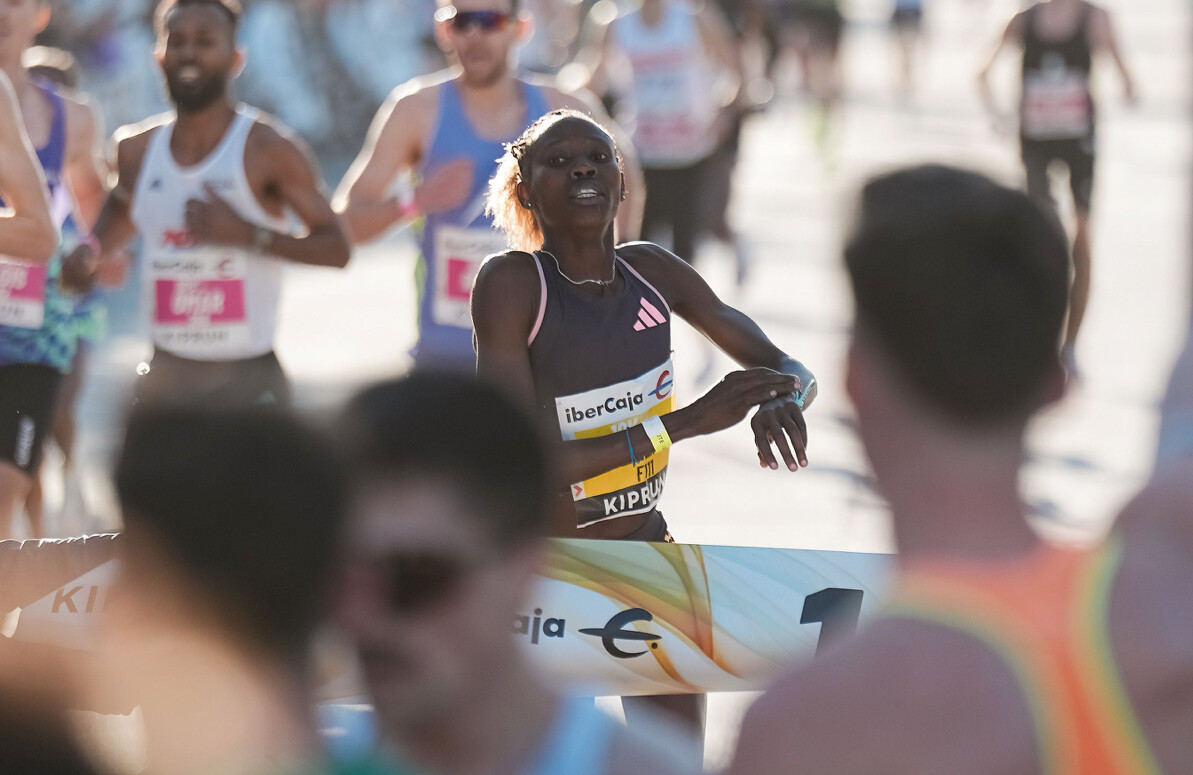
In a race of incredible depth, the first four women now feature in the top 10 on the world all-time list, while the men’s contest marked the first time 11 athletes had finished inside 27:30.
The women’s contest had been billed as an assault on the Ethiopian record (29:14) by pre-race favourite Fotyen Tesfay, who won the Valencia Half Marathon in 1:03:21 in October. Paced by Spain’s Abedarrahman El Khayami, the lead quartet of Tesfay, Lobun, Girmawit Gebrezihair and teenager Asayech Ayichew went through 3km in 8:46, putting them on course to break the world record of 28:46.
The cadence soon dropped, however, and Tesfay went through 5km in 14:31 with Lobun five seconds behind, Ayichew another two seconds in arrears and Gebrezihair clocking 14:42. Soon after, Tesfay had been reeled back in, and the lead trio – Tesfay, Lobun and Gebrezihair – reached 7km in 20:29.
Approaching the final kilometre, Tesfay dropped back, leaving Lobun and Gebrezihair to duel for the victory. Lobun broke away from her Ethiopian rival with 600 metres to go, crossing the line in 29:30 in what was her first standalone 10km race (though she has previously contested two half marathons).
Gebrezihair was second in 29:34, taking more than a minute off her previous best, while a tired Tesfay (29:42) managed to hold off Ayichew (29:43), both women setting PBs. It’s just the second time in history – after last year’s Valencia 10k – that four women have finished inside 30 minutes.
“I didn’t expect to win but I knew I was in good shape,” said Lobun who is based in Kirenget and is coached by Williams Langat. “It was my first 10km ever so my debut has been fantastic. I’ll next compete on 23 February at the Lobo Village cross country race in Eldoret and later I’ll focus on the track season as I try to make the Kenyan team for the World Championships in Tokyo.”
Despite the absence of the scheduled pacemaker Rodrigue Kwizera, who was forced to withdraw because of flu, the men’s contest ended up being one of the best ever in terms of depth.
Kenya’s Daniel Kinyanjui, Vincent Langat and Benard Langat, along with Ethiopia’s Tadese Worku and Telahun Haile Bekele took charge of the pacing duties with Almgren, Switzerland’s Dominic Lobalu and Belgium’s Isaac Kimeli also part of the leading pack. The opening 3km was covered in 8:13 and half way was passed in 13:43, suggesting a finishing time well outside 27 minutes.
The pace soon started to increase, though, as Bekele, Langat and Lobalu started to push harder, reaching 7km in 19:05 with seven athletes in the lead pack. The pace, now at 2:40/km, continued to increase as Lobalu, Langat and Almgren reached 9km well ahead of the rest.
European 10,000m champion Lobalu tried to surge in the closing stages, but Langat and Almgren stayed on his shoulder. With just seconds to go, track specialist Almgren put his kick finish to good use and edged in front to cross the line in 26:53, having covered the second half in 13:10.
Lobalu settled for second in 26:54 and Langat completed the podium in 26:55. Further down the field, Uruguay’s Santiago Catrofe set a South American record of 27:16 in eighth.
“Last year I ran 27:20 here and I knew I could run much faster today,” said Almgren, the 2014 world U20 800m bronze medallist who has moved up in distance in recent years and ran 26:53.57 for 10,000m on the track last year. “It’s my first European record so I’m over the moon; I’ll now spend four weeks in the altitude of Sierra Nevada to focus on my next target, the 3000m at the European Indoor Championships.”
In addition to the area records, national records were also set by Switzerland’s Lobalu, Eritrea’s Dawit Seare (27:21), Great Britain’s Rory Leonard (27:38), Spain’s Ilias Fifa (27:41) and Ireland’s Efrem Giday (27:43).
Leading results
Women1 Hellen Lobun (KEN) 29:302 Girmawit Gebrzihair (ETH) 29:343 Fotyen Tesfay (ETH) 29:424 Asayech Ayichew (ETH) 29:435 Fentaye Belayneh (ETH) 30:006 Christine Chesiro (KEN) 30:067 Maurine Toroitich (KEN) 30:288 Miriam Serem (KEN) 30:299 Alice Chemtai (KEN) 30:4710 Lomi Muleta (ETH) 31:01
Men1 Andreas Almgren (SWE) 26:532 Dominic Lokinyomo Lobalu (SUI) 26:543 Vincent Langat (KEN) 26:554 Daniel Kinyanjui (KEN) 27:065 Isaac Kimeli (BEL) 27:106 Benard Langat (KEN) 27:117 Telahun Haile Bekele (ETH) 27:138 Santiago Catrofe (URU) 27:169 Dawit Seare (ERI) 27:2110 Celestin Ndikumana (BDI) 27:23
(01/12/2025) ⚡AMP10k Valencia Trinidad Alfonso
Around the corner we have one more edition of the 10K Valencia Ibercaja, organized one more year by the C. 10K VALENCIA Athletics premiering the running season in Valencia. It is a massive urban race with more than 3,000 registered annually of 10 kilometers, where the maximum duration of the test will be 1 hour 40 minutes (100 minutes). The...
more...How Alcohol Tanks Your Heart Rate Variability and Sleep
It’s no secret that alcohol inhibits overall health, but for runners and other athletes, the risks are even more adverse. Drinking alcohol negatively affects your heart-rate variability (or HRV) and heart rate, hinders sleep, can lower testosterone, impair balance and coordination, decrease muscular strength, and impact bone health—which increases the risk of sports-related injuries. Simply put: you shouldn’t plan to just “sweat it out” post-drinking.
How long does it take an athlete to recover from drinking alcohol?

Varying amounts or types of alcohol tend to affect people differently. But generally speaking, the more that’s consumed, the greater the psychological and physiological consequences. It takes the liver at least one hour to remove each unit of alcohol from the body, and the liver may struggle to remove all the alcohol overnight.
Alcohol affects the body in many ways, including excessive thirst as a result of alcohol’s diuretic effect, and diarrhea and indigestion as the alcohol wreaks havoc on the digestive system and increases stomach acid production.
What about your heart?
What’s alcohol’s effect on heart rate and heart-rate variability?
Heart rate and heart-rate variability (HRV) are two useful metrics for athletes to monitor in order to get a baseline of nervous system activity and gauge how the body is capable of adapting to different situations. Consuming alcohol is shown to cause HRV to drop, and resting heart rate to rise. A normal resting heart rate for adults is between 60 and 100 beats per minute, and researchers in one study found that consuming just one standard drink elevated participants’ heart rates by five beats per minute. Another analysis by the fitness tracking company WHOOP reported that respondents’ HRV dropped by an average of seven milliseconds and their resting heart rate increased by an average of three beats per minute after one drink.
“Greater alcohol consumption is associated with more pronounced increases in heart rate,” said UK-based exercise physiologist Tom Cowan. “This may be amplified if the alcohol is accompanied by a mixer, which contains caffeine such as an energy drink or in a cocktail like an espresso martini, as caffeine also increases heart rate.”
Why is monitoring HRV and heart rate important?
Resting heart rate has long been a reliable tool for athletes to monitor, but HRV has now become increasingly popular as a recovery and training metric—both in general fitness trackers and for athletes. An HRV device measures the interval between each of your heart beats, in milliseconds (m/s), over a specific period of time. More variability between beats gives you a higher score—and, in general, means you’re fitter and more recovered and ready to go. HRV tends to drop when a person is tired, stressed, sick, not recovered from a previous day’s workout or after a night of drinking.
“A higher HRV generally equals better fitness,” said Harry Glorikian, healthcare expert and author of The Future You: How Artificial Intelligence Can Help You Get Healthier, Stress Less, and Live Longer. But it’s important for each person to establish an individual baseline before analyzing changes in their HRV, he noted, because it’s a highly individualized metric. What is normal for you might not be normal for someone else. “The first time I saw my HRV numbers, I started to look for ways to compare it to others. What I quickly found was that my HRV was specific to me and that changes that I made in my life affected my HRV and those changes do not apply universally to others.” His takeaway? Focus on implementing your own changes when it comes to diet and exercise, and watch as your HRV increases and your energy levels soar.
Start by establishing a baseline HRV and resting heart rate every morning for a least one to two weeks, using your fitness tracker or app. Then you can note differences.
It’s also important to note that while, in general, higher HRV correlates with better fitness and recovery and lower resting heart rate tends to mean an individual is more recovered and rested, this is not always the case. There can be individual circumstances that go against this general rule and extremely fit athletes can have inverse effects. For instance, the resting heart rate could become suppressed from extreme fatigue and overtraining.
“Once you start to utilize this measure, keep in mind that training is not the sole influencer of this metric. Work stress, poor sleep, stressful family life, poor nutrition, and more can negatively affect HRV,” he said.
How does alcohol impact sleep (and HRV)?
Poor sleep, as well as stress (physical or psychological), can reduce HRV. A restful night’s sleep helps the body to restore itself, repair cells and tissue, and prepare again for optimal performance. So what happens after a few evening glasses of wine?
“Alcohol disrupts sleep cycles, and since it is a diuretic, it may lead to you waking up to go to the toilet frequently during the night,” said Cowan. “This leads to a reduction in sleep quality, has negative impacts on recovery, and can result in lower heart rate variability. Alcohol is also often consumed at social gatherings and parties that extend into the night or the early hours of the morning, likely affecting sleep duration too, leading to inadequate recovery.”
(01/12/2025) ⚡AMPYou Should Stop Showering Between Runs—and My 7 Other Running Rules for 2025
If you’ve been on social media lately, you might have seen your friends making in-and-out lists. It’s been a thing for a few years—maybe less-so now—but the idea is to come up with some trends that you think will be popular and unpopular.
The best ones are fun and off the top of the head. Some of the thought-out ones about culture are kind of annoying. (Yeah, everyone agrees that “being mean” is out in 2025.)
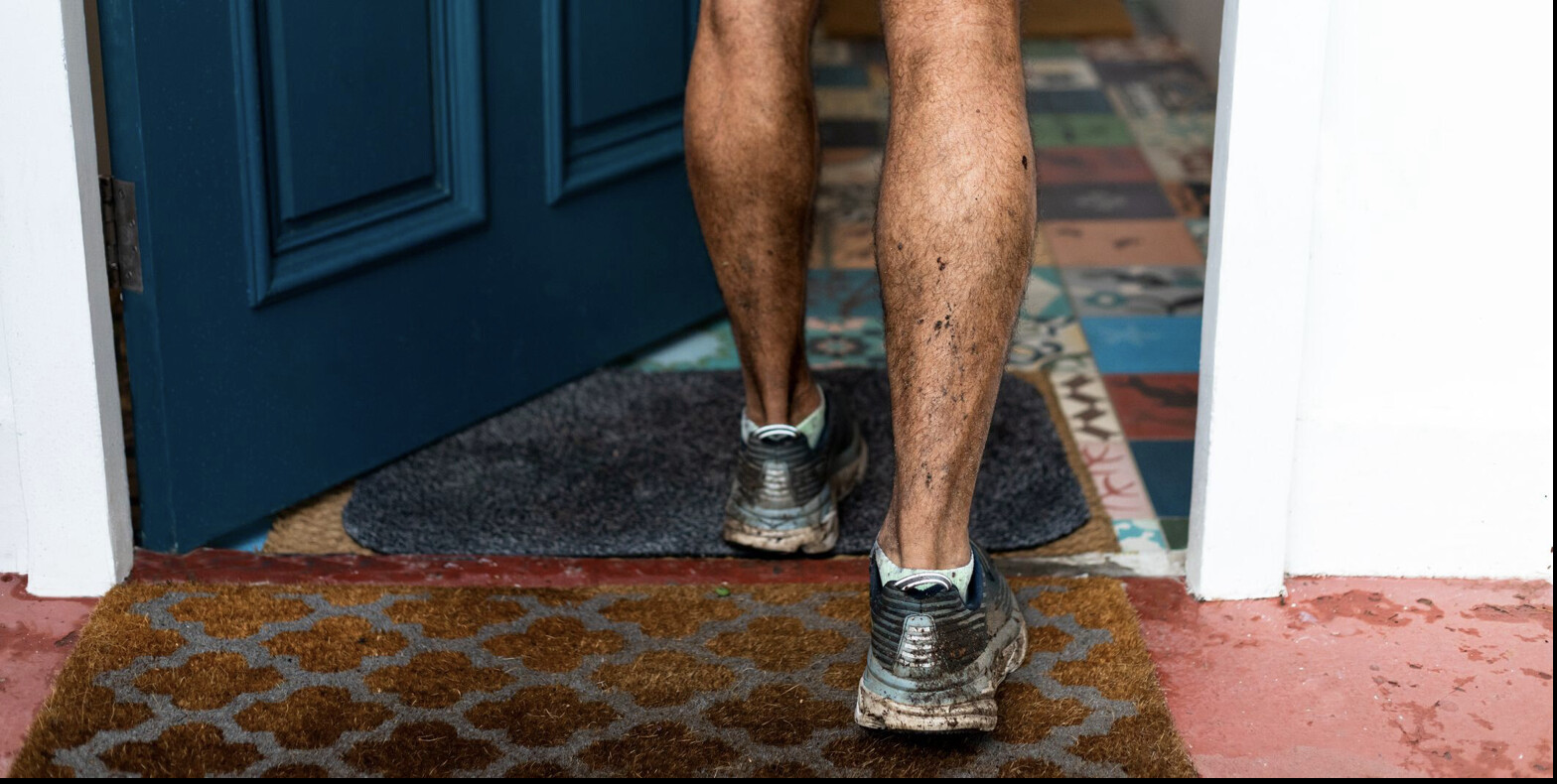
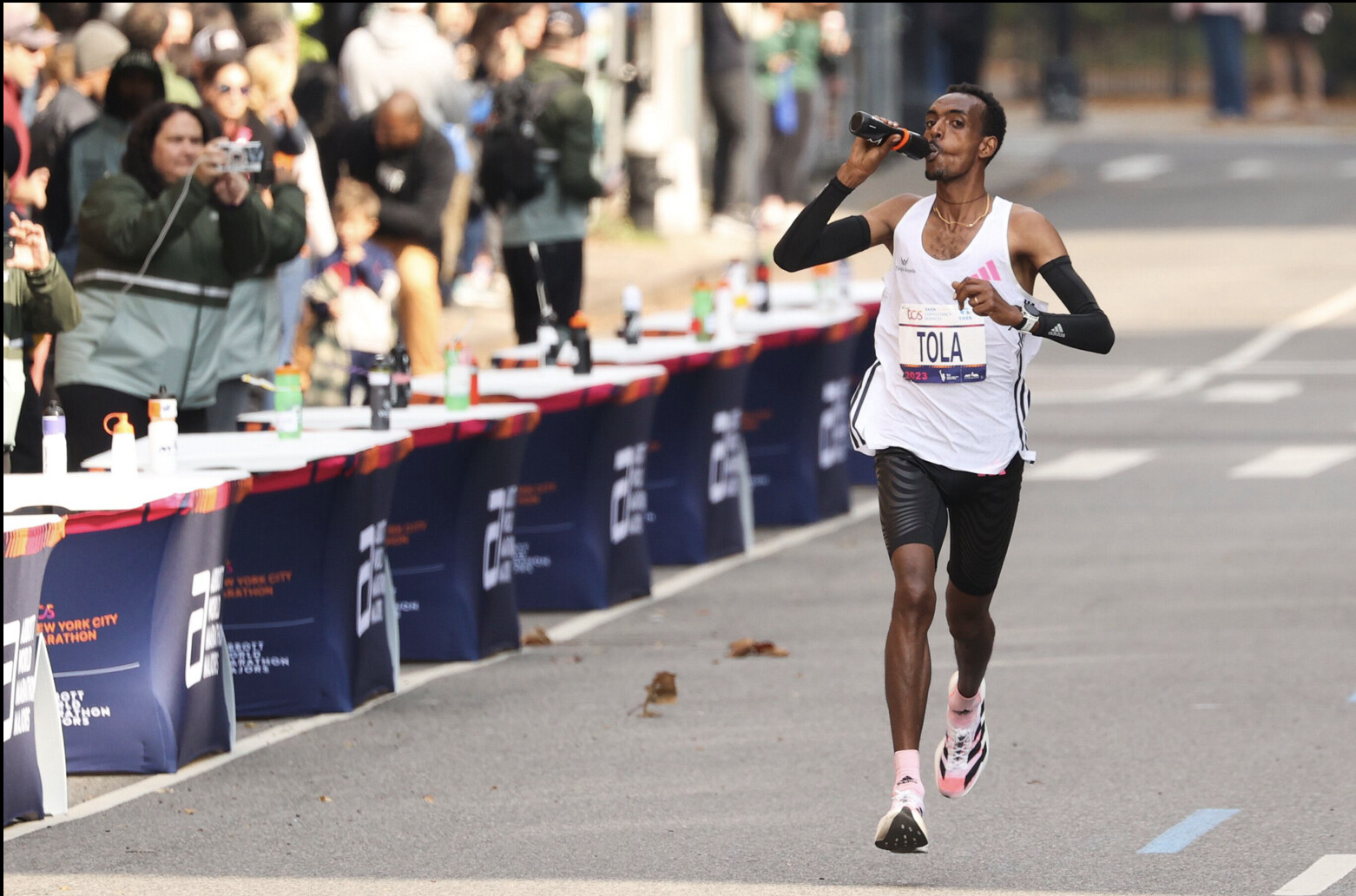
So I took the idea and applied it to my own running. Remember, these are specific to my experience. They’re not mandates or absolutes or even advice.
And at the end of the year, feel free to call me out if I was wrong. I probably was.
Out: Showering between runs
In a normal training week, I run twice a day on Wednesday and Thursday. Those are my recovery days, and I use them as a chance to get ahead on my weekly mileage. Usually, I run between 60 and 85 miles a week during marathon training, so to break it up, I’ll run once before work and then again during lunch or after work. Also known as “doubling.”
But that laundry piles up fast.
So on days when I work from home, sometimes I’ll put off my shower and stay in my workout clothes until my next run or weightlifting session. I live alone, so there’s no one to complain about my odor. (If you live with a roommate, partner, or family, use this strategy at your own risk.)
In: Wearing ugly race T-shirts
Remember the race T-shirts of the 2000s? The ones that looked like they were designed by a middle schooler and had no fewer than 1,000 ads on the back? I’ve gotten so many over the years, and most have gone straight to Goodwill or I’ve used them for yard work. But this year, I’d like to use my race T-shirts for their purpose—and run in them. There’s something fun about wearing an ill-fitting cotton tee with an ad for Jimbo’s Ford Dealership on the back.
Some races are pivoting away from shirts in favor of more environmentally friendly alternatives, but don’t expect them to completely disappear. According to Running USA, 58 percent of participants who took the 2024 Global Running Survey said that commemorative T-shirts are important to their race experience.
Out: Long runs
I’m planning on running Grandma’s Marathon in June, which means I’m building up my mileage now. But I’ve found that long runs are kind of overrated. Hear me out.
During my last marathon training block, I never ran more than 18 miles for my long run. Many programs call for 20 to 23-mile long runs, but my coach and I decided that 18-milers would get the job done. I’ve been running high mileage for close to a decade now, so I have a large aerobic base. The strategy worked, and I ran 2:27:07, hitting my goal of sub-2:28.
Right now, as I build, my coach and I are experimenting with the idea of downplaying the long run. Instead of using it as a key workout (for example, 10+ miles at marathon pace during the run), we’re focusing more on high-volume workouts twice a week, then using the long run just to get time on my feet. Similar to how Jakob Ingebrigtsen, who never runs more than 12.5 miles, trains.
A hard long run takes a large emotional and physical toll on my body, so I’ve found that I respond well when I keep the long run easy and focus on high-volume threshold sessions during the week. Of course, running on tired legs is key to running a good marathon. As I get closer to June, I’m sure there will be weeks where I use long runs as key workouts. But sometimes I need to remind myself that the other six days of the week are just as important.
In: Wearing a T-shirt over a long sleeve
For the past year, I’ve been mulling over buying a running vest. They look cool, but I keep telling myself that I don’t need to buy something that I’d probably only wear on a few runs each year. I live in eastern Pennsylvania, so I’m usually wearing something light in the fall or a full jacket in the winter. Enter, the working man’s vest: the T-shirt over the long sleeve shirt.
The sleeves keeps your arms warm while the T-shirt acts as a protectorate for your torso, insulating (not suffocating) you from the wind. Cooper Teare is a big fan.
Bonus points if you pair the look with an ugly race T-shirt. And double bonus points if you rock the look in a snowy race, like seemingly everyone did at the 2004 USATF Cross-Country Championships in Indianapolis.
In: Sunscreen
Man, I’m bad at this. If I’m preparing to sit out at the beach or pool, I lather up thoroughly. But if I’m heading out for a 90-minute run, I rarely put on sunscreen, justifying to myself that the route is shady or 90 minutes isn’t that long in the sun.
I’ve gotten better at sun protection—I almost always wear a hat and sunglasses year-round now—but I need to get better at lathering up on a regular basis. If you see me jogging this summer, ask me if I have sunscreen on and, if I don’t, shame me until I turn around and go home.
Out: Marathon bottle service
In my debut marathon at Indianapolis in November, I was lucky enough to qualify for the elite field, meaning I got perks like reserved restrooms, a separate warm-up area, and bottle service. For those unfamiliar, bottle service at a marathon is different from bottle service at a Las Vegas nightclub. Instead of access to marked-up Patrón, you get reserved spots on the course where you can stash your race fluid bottles.
Because there’s limited space, bottle stations are typically reserved for the fastest runners at a marathon. Instead of fumbling with the water or electrolyte-drink cups that the masses use, elites can consume whatever they trained with. In most cases, it’s some kind of carbohydrate mix.
At Indianapolis, there were three bottle stations: at miles 8, 14, and 20. I filled mine up with Maurten 160, but honestly, I didn’t feel like the perk was that necessary. I carried eight gels with me, taking them every 15 to 20 minutes, which was plenty. The bottles felt like more of a bonus or palate cleanser. They were cumbersome to hold and drink at race speed, and I found myself only taking a few sips then discarding them. Plus I had to pee the entire race, so I didn’t want to make the situation more dire.
Previously, I thought bottle service was non-negotiable to running a fast 26.2. But my mind has changed. If you envy the pros for their bottle access, don’t worry, you’re not missing out. Gels get the job done.
In: Off-distance races
I’m stealing this one from my 2024 in-and-out list. Off-distance races are events that diverge from traditional race distances (like the 5K, 10K, and marathon). Popular examples include the Bix 7 Road Race in Iowa (a 7-miler), the Boilermaker 15K in New York, and the Manchester Road Race in Connecticut (4.737 miles).
My favorite off-distance event is the Run for the Diamonds in Berwick, Pennsylvania. It’s a Thanksgiving day 9-miler that’s been going strong since 1908. The whole town comes out and cheers the runners up and down the massive hill that’s sandwiched in the middle of the route. Plus, the top seven men and women get real diamonds!
In: Short trail races
Speaking of race distances, let’s make short trail races a thing in 2025. Ultramarathons get most of the attention, but they’re not for everyone. At risk of contradicting myself against my previous “in,” there are plenty of trail options at the 5K, 10K, and half-marathon distance. Local state parks may host them, or sometimes there are running races tied in with mountain bike or cyclocross races. (Fifth Street ‘Cross in Pennsylvania does a great job of putting on both.)
I’d love to jump in a trail half marathon this summer between my two marathon training blocks. There won’t be any pressure to run a certain time, and let’s be real, running on the roads gets boring sometimes.
(01/11/2025) ⚡AMPSlovak runner shatters 7-day treadmill world record
Last Thursday, Serbian-Slovak ultra-runner Michal Šuľa began a week-long venture going nowhere. Seven days later, the 50-year-old successfully completed his attempt at the Guinness World Record for greatest distance covered on a treadmill in one week (pending verification), covering 912.22 km in 168 hours. Šuľa streamed his entire run live on YouTube.
With 17 hours to spare, Šuľa had already surpassed the Guinness World Record. “The Guinness record is behind us… 151 h, 846.52 km,” Šuľa announced on Facebook, where he posted regular updates of his progress. In his live stream, viewers could watch friends keep him company in the room and on the second treadmill. A white board was constantly refreshed hourly with the runner’s logged distance, and “sleep” was written when Šuľa stepped off the treadmill for periodic breaks.

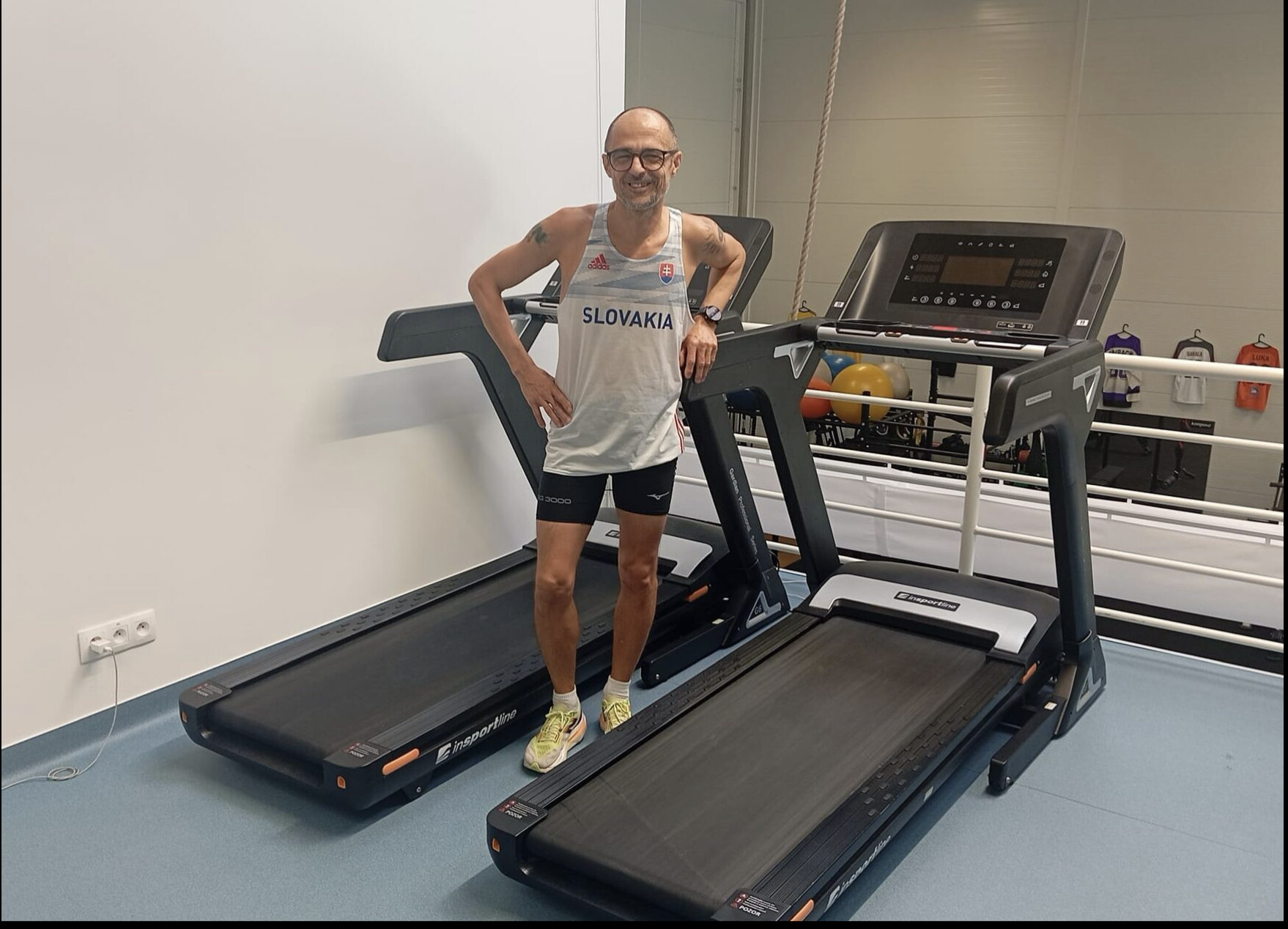
The previous record of 843.94 km had been held by the U.K.’s Jamie McDonald since 2019. Šuľa’s run also surpasses the female seven-day treadmill world record of 846.16, held by New Zealand’s Emma Timmis since June 2024.
Šuľa took on the challenge at a physical therapy clinic, the Movement Institute, in Bratislava, Slovakia. The organization shared the runner’s entire journey on Instagram, YouTube and Facebook. “Michal is aiming even further–his goal is an incredible 1,060 km!” the Movement Institute wrote on Facebook. According to Šuľa, the official, non-Guinness seven-day world record stands at 1,056 km. He fell short of taking down this record in addition to the other two.
In early 2024, Šuľa became a two-time Slovakian champion; he won the 24-hour national championship in March in Nitra, Slovakia, logging 224 km, and climbed to the top of the podium again at the 100-km race in June in Šamorín, Slovakia. Šuľa clocked 7:34:22, winning by nearly an hour and a half.
According to recordholders.org, Šuľa also managed to break the 6-hour treadmill world record on Dec. 14, less than four weeks ago; he ran 85.89 km over the half-dozen hours. His performance exceeded the previous record of 53.05 km, run by Italy’s Luca Ricci in April 2024.
(01/11/2025) ⚡AMPChipotle ends Los Angeles Strava challenge due to the wildfires
Chipotle’s January Strava challenge, offering runners a chance to win free Chipotle for a year, has come to a halt in Los Angeles as devastating wildfires forced the company to end the city competition early. With more than 180,000 residents evacuated due to fires in the city’s northwest, Chipotle decided it would be best to prioritize safety, and stopped the challenge at 11:59 p.m. PT on Thursday.The challenge was a hit in Los Angeles, which led to the global Strava x Chipotle City Challenge competition before the wildfires began on Jan. 7.
The challenge involves runners worldwide competing to become “Local Legends” by completing the most designated Strava segments during the month. The top individual in each participating city wins free Chipotle for a year, while cities collectively logging the highest mileage earn rewards like buy-one-get-one (BOGO) entrée deals for all residents.

Chipotle issued a statement explaining their decision: “Los Angeles, your health and safety is our greatest priority. Due to the devastating wildfires that are impacting the area, we are ending the Chipotle Los Angeles Segment Challenge at 11:59 p.m. PT on January 9, 2025. The Local Legend who has the greatest number of attempts at that time will be awarded with Lifestyle Bowls for a Year.”
Particles from wildfire smoke and other pollutants can be deadly and impact health. This is particularly concerning for runners, as intense outdoor exercise can aggravate the effects of airborne pollutants.
Brandon Fang of Del Rey, Calif., was named the winner after logging an incredible 284 efforts on the 330-metre segment (93.72 kilometres). On the final day of the challenge, Fang ran 12 kilometres on the segment in the morning, then returned later in the evening to run 50K after hearing about the early cutoff–all to secure a year’s worth of Chipotle.
While the Los Angeles competition came to an end due to the catastrophic fires, it continues in 24 other cities across North America and Europe (including Toronto). Runners in those cities still have a chance to win prizes and contribute to their city’s mileage totals.
(01/11/2025) ⚡AMPFast field set for Dubai marathon this Sunday
If there’s such a thing as a First Family in athletics, then it has be the Tola-Dida clan from Ethiopia; and one of their favourite watering holes is the Dubai marathon, whose quarter century is celebrated with Sunday morning’s event. Current Olympic men’s champion Tamirat Tola won Dubai in 2017 (2.04.11), while spouse Dera Dida won in 2023 (2.21.11), on the same day that her brother-in-law, Tamirat’s younger sibling Abdisa won the men’s title (2.05.42).
Tamirat went on to greater things, with a world championship silver medal in London later in 2017, then gold in the delayed world championship in Eugene 2022, a New York Marathon victory in 2023, and the Olympic crown last year. This time round, he has a far more important task, staying at home and minding their daughter.
Because bringing their daughter (even with a nanny) to last year’s Dubai race may have distracted Dera from a repeat victory, though she still finished third in 2.19.29, two minutes faster than the previous year; but she’s left hubby to do the domestic chores this time, and comes determined to win her second Dubai Marathon while Tamirat watches on TV back home on the outskirts of capital Addis Ababa.
As befits a First Family, only the best is good enough, and their training group has got to be one of if not the strongest in the world. Among her running partners are former marathon world record holder and Olympic silver medallist Tigst Assefa as well as the current marathon World Champion Amane Beriso. ‘I don’t train with the group every day,’ she said through an interpreter. ‘On a day to day basis, I train with Tamirat, but I join them occasionally. Since Tamirat won the Olympics, we’ve had a lot more media interest, but we try to concentrate on our running and not get too distracted’.
Well, her rivals (and compatriots) here in Dubai, Tigist Girma and Zeineber Yimer already have plenty to distact her, given that their respective best times, 2.18.52 and 2.19.07 are better than hers (2.19.24), but not so much as to deter her ‘I think I’m in shape to run the course record (2.16.07, set by another colleague Tigist Ketema last year); I hope that will be enough to win‘.
Another return winner has equally high aspirations, although injuries have ploughed a broad furrow between Lelisa Desisa’s glory days and Sunday’s race. Lelisa was one of many debutant winners in Dubai over the last decade or so, but his came in winning probably the most exciting race in Dubai Marathon history. On a rare foggy day in the Emirates, Lelisa emerged from the mists with a superb sprint finish to clock 2.04.45, and outpace four close pursuers who all finished within a handful of seconds, the first time five men had ever gone inside two hours, five minutes for a marathon.
Like Tamirat, Lelisa went on a have a superlative set of sequels, two victories and two second places in Boston and a win in New York, culminating with the world title on a torrid night in Doha 2019. A series of injuries and the pandemic halted his progress, but he maintains he’s back close to his best.
Following today’s press conference, he said, ‘I’ve been training with Milkesa (Mengesha), who won the Berlin Marathon last year, and with Deresa (Geleta), who finished second in Valencia; I think I’m as good, and they’re running 2.02/2.03. Things have changed a lot since I won here in 2013. At that time, we were thinking of 2.04 to 2.07 for a marathon, now we have to think of two hours! I think I can run a personal best on Sunday’.
Since his best remains the 2.04.45 from 2013, if he and his young rivals can get anywhere near that, they’ll be threatening the course record of 2.03.34that another colleague Getaneh Mollah ran here in 2019.
An intriguing entrant is former world record holder, Dennis Kimetto of Kenya. One of the shooting stars of recent marathon history, Kimetto had a short stellar career during which (in addition to other top victories) he won three of the most important marathons in the world, Chicago, Tokyo and Berlin, breaking the course record in each event, and setting a world record in the final one, in Berlin 2014. He was the first to run sub 2:03 (2.02.57) and his record stood for four years. Obviously, at ten days short of his 41st birthday, Dubai 2025 is going to be a very different challenge for Kimetto.
Elite runners with personal bests
MEN:
Dennis Kimetto KEN 2:02:57
Lelisa Desisa ETH 2:04:45
Dino Sefir ETH 2:04:50
Shifera Tamru ETH 2:05:18
Gebru Redahgne ETH 2:05:58
Ashenafi Moges ETH 2:06:12
Abay Alemu ETH 2:06:50
Mesfin Nigusu ETH 2:07:58
Tadele Demissie ETH 2:08:25
Desalegn Girma ETH 2:08:30
Berehanu Tsegu ETH Debut
Boki Diriba ETH Debut
WOMEN:
Tigist Girma ETH 2:18:52
Zeineba Yimer ETH 2:19:07
Dera Dida ETH 2:19:24
Etagegne Woldu ETH 2:20:03
Gadise Mula ETH 2:20:59
Bedatu Hirpa ETH 2:21:09
Beyenu Degefa ETH 2:23:04
Kuftu Tahir Dadiso ETH 2:23:14
Tigist Geshaw ETH 2:24:39
Kebebush Yisma ETH 2:27:46
Mulugojam Ambi ETH 2:28:59
Betukan Welde ETH Debut
Etenesh Diro ETH Debut
Bekelech Teku ETH Debut
Alem Tsadik ETH Debut
(01/10/2025) ⚡AMPDubai Marathon
In its relatively brief history (the race was first held in 2000), the Dubai Marathon has become one of the fastest, most respected and the most lucrative marathon in the world in terms of prize money. Each year thousands of runners take to the roads in this beautiful city in the United Arab Emirates (UAE) for this extraordinary race starting...
more...Hellen Obiri of Kenya will return to the Boston Marathon in April and attempt to win for the third time in a row.
In the race’s history, only four other women (Bobbi Gibb, Sara Mae Berman, Uta Pippig, and Fatuma Roba) have won three times a row, according to race organizers, who released the elite field today. The race is set for April 21.
Last year, Obiri broke the race open by covering the 24th mile in 4:41 and won in 2:22:37, 8 seconds ahead of her countrywoman Sharon Lokedi, who will also return to Boston.
Obiri, 35, trains in Boulder, Colorado, with the On Athletics Club, and she has been on the podium in five of the six marathons she has run. In addition to her two Boston titles, she won the New York City Marathon in 2023, finished second there in 2024, and won the Olympic bronze medal in Paris. (The only blemish on her marathon record was her sixth-place finish at her debut in New York in 2022.)
Obiri and Lokedi will be challenged by Amane Beriso and Yalemzerf Yehualaw of Ethiopia. Beriso has a personal best of 2:14:58 from the Valencia Marathon in 2022. She’s currently the fifth-fastest woman of all time.
Sisay Lemma of Ethiopia, the defending men’s champion, will also return to Boston. Lemma’s 2:01:48 from Valencia in 2023 makes him the fourth-fastest man in history.
Last year in Boston, Lemma got out to a large early lead, and the course record seemed almost certain to fall. But by the Newton hills, Lemma was feeling his hot early pace and slowed considerably. He held on to win in 2:06:17.
His challengers at the 2025 race will include Evans Chebet of Kenya, who has won the race twice (2022 and 2023) and was third in 2024. John Korir of Kenya, who won the 2024 Chicago Marathon in a fast 2:02:44, will also be back to race in Boston. He was fourth last year.
A Strong American Field
Many top Americans are entered into Boston. On the women’s side, they include Keira D’Amato, who briefly held the American record of 2:19:12 in 2022, and Sara Hall, who had a strong race at last fall’s Berlin Marathon, where she ran 2:23:45. She’ll turn 42 the week before the race.
D’Amato told Runner’s World in a text message that she is recovering from the injury in her left foot—stress reactions in her calcaneus and talus—that caused her to drop out of Chicago. “Hoping all the cross training has made me Boston Strong,” she wrote. “I’m building up conservatively to have a killer 2025.”
Olympians Dakotah Popehn and Des Lindenwill run (Linden for the 12th time), as will Emma Bates, the top American at Boston last year, Olympic Marathon Trials fourth-place finisher Jess McClain, and notables Sara Vaughn, Kellyn Taylor, and Lindsay Flanagan.
On the men’s side, Olympians and training partners Conner Mantz and Clayton Young, who finished eighth and ninth at the Games, respectively, will run Boston. They’ll be joined by CJ Albertson, who runs several fast marathons each year (five in 2024, including his PR of 2:08:17 in Chicago) and Zach Panning, who was fifth at the Olympic Marathon Trials.
(01/09/2025) ⚡AMPby Runner’s World
Boston Marathon
Among the nation’s oldest athletic clubs, the B.A.A. was established in 1887, and, in 1896, more than half of the U.S. Olympic Team at the first modern games was composed of B.A.A. club members. The Olympic Games provided the inspiration for the first Boston Marathon, which culminated the B.A.A. Games on April 19, 1897. John J. McDermott emerged from a...
more...Charlton, Jones and Johnson head New York hurdles clash
Devynne Charlton will return to the scene of her first world 60m hurdles record when she races at the Millrose Games – a World Athletics Indoor Tour Gold meeting – in New York on 8 February.
The Bahamian hurdles star clocked 7.67 to win at the Armory last year, taking 0.01 off Susanna Kallur’s 16-year-old record.
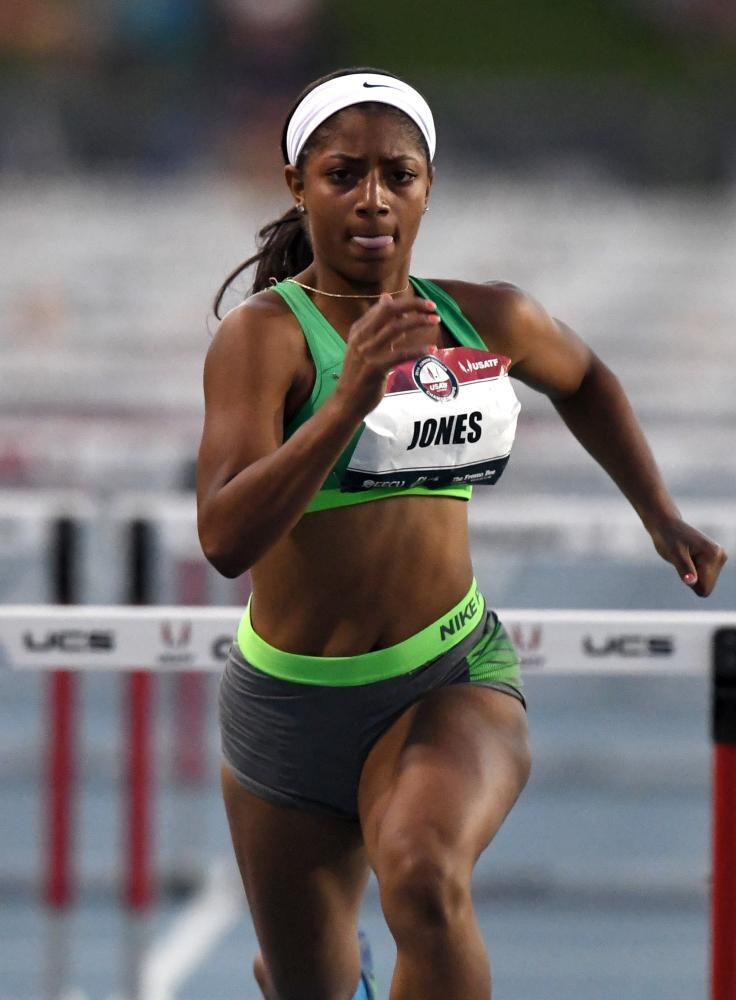
Tia Jones then equaled that mark just five days later to win the US indoor title in Albuquerque, before Charlton improved the world record by another 0.02 with her 7.65 performance to win the world indoor title in Glasgow.
In a season that gives Charlton the chance to defend her world indoor title in Nanjing in March, she will go head-to-head with Jones as well as the previously announced Olympic 100m hurdles champion Masai Russell at the Millrose Games.
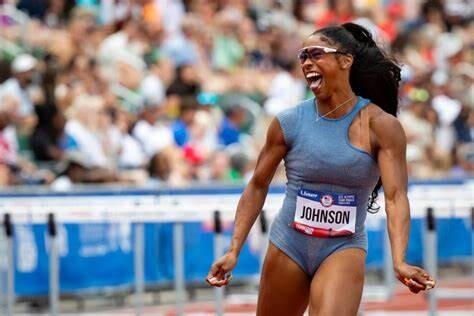
They will be joined by Jamaican 100m hurdles champion Ackera Nugent as well as US Olympic finalists Grace Stark and Alaysha Johnson.
“I can’t wait to be back at the Millrose Games this year,” said Charlton. “Almost a year ago, I broke the world record there for the first time and I’m looking forward to having another great showing and defending my title.”
Other athletes already announced for the meeting include Olympic silver medalists Katie Moon and Daniel Roberts, plus Olympic 1500m champion Cole Hocker and double Olympic bronze medalist Grant Fisher, who will go head-to-head in the 3000m.
(01/09/2025) ⚡AMPby World Athletics
NYRR Millrose Games
The Pinnacle of Indoor Track & Field The NYRR Millrose Games, first held in 1908, remains the premier indoor track and field competition in the United States. The 2025 edition will once again bring the world’s top professional, collegiate, and high school athletes to New York City for a day of thrilling competition. Hosted at the New Balance Track &...
more...Slovak runner shatters 7-day treadmill world record
Last Thursday, Serbian-Slovak ultra-runner Michal Šuľa began a week-long venture going nowhere. Six days later, the 50-year-old successfully completed his attempt at the Guinness world record for greatest distance covered on a treadmill in one week (pending verification), covering 846.52 km in 151 hours (six days and seven hours). Šuľa streamed his entire run live on YouTube–and as of Wednesday afternoon, he’s still running.
“The Guinness record is behind us… 151 h, 846.52 km,” Šuľa announced on Facebook, where he posted regular updates of his progress. In his live stream, viewers can watch friends keep him company in the room and on the second treadmill. A white board is constantly refreshed hourly with the runner’s logged distance, and “sleep” is written when Šuľa steps off the treadmill for periodic breaks.
The previous record of 843.94 km had been held by the U.K.’s Jamie McDonald since 2019. Šuľa’s run also surpasses the female seven-day treadmill world record of 846.16, held by New Zealand’s Emma Timmis since June 2024.
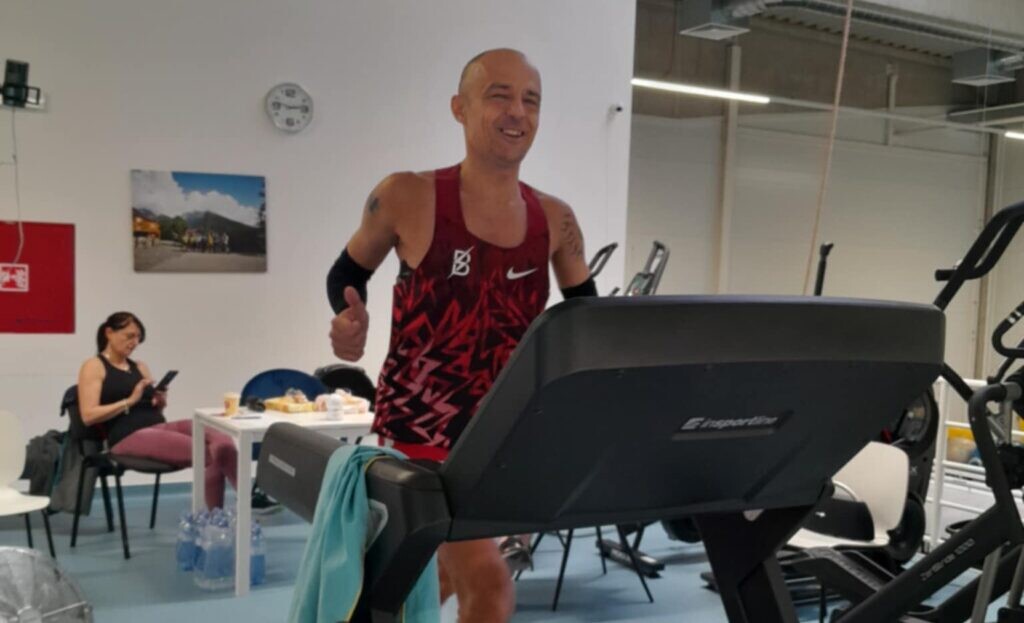
Šuľa took on the challenge at a physical therapy clinic, the Movement Institute, in Bratislava, Slovakia. The organization shared the runner’s entire journey on Instagram, YouTube and Facebook. “Michal is aiming even further–his goal is an incredible 1,060 km!” the Movement Institute wrote on Facebook. According to Šuľa, the official, non-Guinness seven-day world record stands at 1,056 km.
In early 2024, Šuľa became a two-time Slovakian champion; he won the 24-hour national championship in March in Nitra, Slovakia, logging 224 km, and climbed to the top of the podium again at the 100-km race in June in Šamorín, Slovakia. Šuľa clocked 7:34:22, winning by nearly an hour and a half.
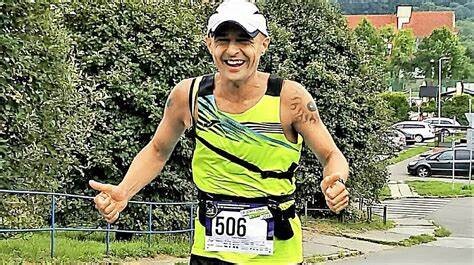
According to recordholders.org, Šuľa also managed to break the 6-hour treadmill world record on Dec. 14, less than four weeks ago; he ran 85.89 km over the half-dozen hours. His performance exceeded the previous record of 53.05 km, run by Italy’s Luca Ricci in April 2024.
(01/09/2025) ⚡AMP
by Cameron Ormond
Houston chases new American records elite fields include Yehaulaw and Kiptoo
The 2025 road racing year will open with an exciting chase for American records at the Aramco Houston Half Marathon and course records at the Chevron Houston Marathon on Sunday, January 19.
The Houston Marathon Committee announced the professional fields for both races today, featuring returning champions and all-time top performers.
The women’s half marathon field is led by the fifth fastest woman in history, Yalemzerf Yehaulaw of Ethiopia who will race in North America for the first time. Yehaulaw, 25, holds two of the top ten all-time half marathon performances including her personal best of 1:03:51 from Valencia in 2021. In 2024, Yehaulaw set a new personal best time in the marathon, winning the Amsterdam Marathon in 2:16:52, a course record.

“It has always been my ambition to race in the United States and now the opportunity has finally come,” said Yehaulaw, the 2022 TCS London Marathon winner. “Running an early race means I get a chance to focus fully on the half marathon to go for a fast time. I am eager to win.”
The Aramco Houston Half Marathon women’s race also features the follow-up half marathon for the American record holder Weini Kelati. Kelati set the record of 1:06:25 in her debut half marathon here last year. She has not raced the distance since, instead focusing on the 10,000m in which she represented the United States at the 2024 Paris Games.
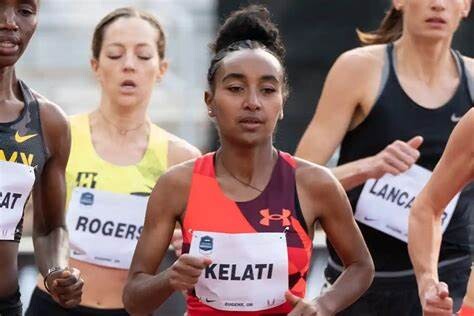
“I’m really excited to come back to Houston and run my second half marathon,” said Kelati, who finished fourth here in 2024. “Last year was great and I hope this year’s race will be even better. My training has been going well and I know the competition will be very good.”
The women’s professional field features 15 women who have run faster than 1:10 in the half marathon. Other top contenders include last year’s third place finisher Buze Diriba of Ethiopia; the third fastest British half marathoner in history, Jessica Warner-Judd, and fellow Brit and 2024 Olympic marathoner, Calli Hauger-Thackery. Hauger-Thackery won the California International Marathon last month.
The men’s competition will see a rematch of last year’s thrilling Aramco Houston Half Marathon. Wesley Kiptoo of Kenya who has been runner-up here for the past two years will again face off against Jemal Yimer of Ethiopia. Yimer outsprinted Kiptoo in 2024, beating him by just one second.
“I can’t wait to return to Houston to try to defend my 2024 title,” said Yimer, who also won here in 2020. “It’s a special place for me to kick off my 2025 road season.”
The pair will be joined by Tanzania Olympian and former Boston Marathon runner-up Gabriel Gaey who has a personal best of 59:42 from his seventh place finish here in 2020.
The men’s race will also see an attempt to finally topple the American half marathon record of 59:43 set here by Ryan Hall in 2007. Leading the chase on the 18-year-old record will be 2024 Olympic marathoners Conner Mantz and Clayton Young. Mantz and Young, who finished eighth and ninth in Paris, train together in Provo, Utah. In November, they were the top two American finishers in the TCS New York City Marathon with Mantz breaking the American course record. This will be Young’s Houston debut. Mantz last ran here in 2023, finishing in sixth place.
“I want to race the Aramco Houston Half Marathon because there are other fast Americans going for the American Record,” said Mantz, who also set the American record in the 10 mile last October. “The opportunities to race in a field like this, on a fast and record-eligible course are rare.”
Mantz and Young will face competition for a spot in the record books from Diego Estrada, the ninth fastest American in history and 2015 Houston champion who had a career-best performance here last year when he finished fifth in 1:00:49. Joe Klecker, an Olympian in the 10,000m, will look to play a factor in his half marathon debut along with his training partner Morgan Pearson, a two-time Olympic silver medalist in the triathlon with a personal best of 1:01:08. Klecker comes to Houston with family history. His mother Janis Klecker is the 1992 Houston Marathon champion.
The Chevron Houston Marathon features the return of two-time champion Dominic Ondoro of Kenya. Ondoro, who won here in 2017 and 2023, will be part of a field that includes two men who have run under Zouhair Talbi’s course record of 2:06:39 set in 2024: Haimro Alame (Israel, 2:06:04) and Ande Filmon (Eritrea, 2:06:38). The field also includes last year’s third place finisher, Hendrik Pfeiffer of Germany. Pfeiffer led nearly 22 miles of last year’s race and finished with a personal best of 2:07:14.
“Houston was the best marathon race in my career so far. I have great memories of the fast course and the impressive city,” said Pfeiffer, whose wife Esther is in the women’s half marathon elite field. “I have already experienced how it feels to lead the race for more than 35 kilometers and I‘m hungry for more. I will definitely try to chase a fast time again.“
A new winner will be crowned in the Chevron Houston Marathon women’s race. After making her half marathon debut here in 2023, Anna Dibaba will return to Houston to run just the second marathon of her career. The sister of Ethiopian legends Tirunesh, Ejegayehu and Genzebe, Dibaba ran 2:23:56 in her debut in Amsterdam last October.
“As I race in more marathons I am sure that I will understand better what I am capable of,” said Dibaba who placed fourth in the 2023 Aramco Houston Half Marathon. “You have to respect the distance of the marathon and it is not enough to be in shape. You must know how to interpret each race, the various courses and conditions. I am looking forward to seeing what I am now able to do in my next race in Houston."
There are two Ethiopian women who have run faster than Dibaba entered in the race. Tsigie Hailesale who has run 2:22:10 and has marathon victories in Stockholm and Cape Town is the fastest and Sifan Melaku, also a past winner in Stockholm with a 2:23:49 personal best.
American Erika Kemp will line up for only her second career marathon in Houston. Kemp, a two-time U.S. champion will look to build on her experience from the Boston Marathon last spring.
“In 2023 I learned what it was like to be out there competing for over two hours,” said Kemp, who runs for Brooks, the footwear and apparel sponsor of the Houston Marathon Weekend of Events. “I’m hoping to utilize the course karma I’ve built up in Houston to have a great marathon.”
“We are excited to see so many top runners kick off their 2025 racing season with us in Houston,” said Wade Morehead, Executive Director of the Houston Marathon Committee. “We are expecting a historic day that will add to this event’s reputation as one of the best races in the world.”
More than USD 190,000 in prize money and bonuses will be awarded to the top finishers of the Chevron Houston Marathon and USD 70,000 plus time bonuses for the top finishers in the Aramco Houston Half Marathon. The races will be broadcast live on ABC13 and feature commentary from Olympic Marathoner and Boston Marathon champion Des Linden.
(01/09/2025) ⚡AMPby AIMS
Chevron Houston Marathon
The Chevron Houston Marathon offers participants a unique running experience in America's fourth largest city. The fast, flat, scenic single-loop course has been ranked as the "fastest winter marathon" and "second fastest marathon overall" by Ultimate Guide To Marathons. Additionally, with more than 200,000 spectators annually, the Chevron Houston Marathon enjoys tremendous crowd support. Established in 1972, the Houston Marathon...
more...Ethiopian Sisay Lemma eyes successful Boston Marathon title defence against Kenyans John Korir, Cybrian Kotut & Co
Sisay Lemma is looking to replicate his 2024 success at this year's Boston Marathon but Kenyans John Korir and Cybrian Kotut are among those standing in his way.
Ethiopian marathon star Sisay Lemma is gearing up to defend his title at the 2025 Boston Marathon, set to take place on April 21.
Fresh off his thrilling victory in 2024, Lemma will look to replicate his success and conquer the demanding course once again.
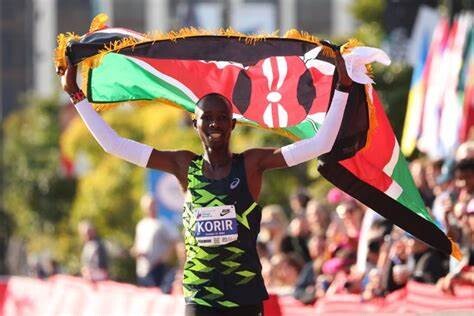
In the 2024 edition, Lemma surged ahead of a fierce field that included his fellow Ethiopian Mohamed Esa, as well as Kenyan marathon giants Evans Chebet and John Korir, who finished second, third, and fourth, respectively.
Lemma's winning time of 2:06:17 was a testament to his impressive form, but he remains aware of the heightened challenge awaiting him this year.
“I was very happy after winning the Boston Marathon last year, and in 2025 I know it will be an even bigger challenge to win again,” Lemma said via World Athletics, acknowledging the difficulty of repeating such a remarkable performance.
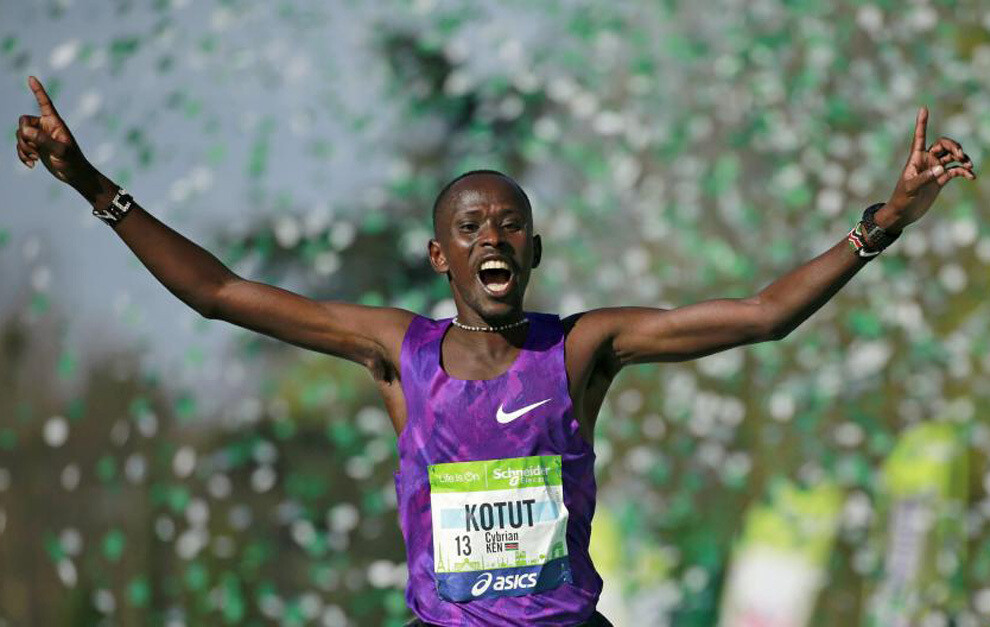
While the Boston Marathon holds a special place in his heart, Lemma’s 2024 season was marred by injury setbacks.
The Ethiopian was hoping to redeem his Olympic performance after a disappointing debut at the 2020 Tokyo Olympics, where he failed to finish the race.
Unfortunately, injury prevented him from competing in Paris in 2024, further hindering his plans for an Olympic comeback.
His struggles continued as he missed a podium finish at the Valencia Marathon that same December due to a lack of full fitness.
“I was unlucky, because of an injury, not to be able to participate at the 2024 Olympic Games in Paris and I was not completely ready at the Valencia Marathon last December,” Lemma confessed.
Now, with the Olympics behind him, Lemma has set his sights firmly on the Boston Marathon. Despite the challenges of the past year, he remains confident in his preparation.
“I will be 100% ready in April because the Boston Marathon is a special event,” Lemma asserted, emphasizing the importance of the race in his career.
However, Lemma will face stiff competition. Among the challengers is last year’s bronze medalist, Kenyan marathon star Evans Chebet, who clocked 2:07:22, just behind Lemma’s winning time.
Chebet, who has proven his endurance and speed on the Boston course, will be looking to outpace the Ethiopian this time around.
He will be joined by a strong Kenyan contingent, including John Korir, who finished fourth last year, as well as Cybrian Kotut, Daniel Mateiko, Abel Kipchumba, and Albert Korir.
With a fierce field and his sights set on history, Lemma’s journey toward a successful title defense will undoubtedly be one of the highlights of the 2025 marathon season.
(01/09/2025) ⚡AMPby Stephen Awino
Boston Marathon
Among the nation’s oldest athletic clubs, the B.A.A. was established in 1887, and, in 1896, more than half of the U.S. Olympic Team at the first modern games was composed of B.A.A. club members. The Olympic Games provided the inspiration for the first Boston Marathon, which culminated the B.A.A. Games on April 19, 1897. John J. McDermott emerged from a...
more...Three track workouts to propel you into indoor season
The season of running in tiny circles is back; soon, we’ll be watching world class athletes racing around a 200m loop at their indoor season opener. Track is a fun, exciting sport–even in the winter–and there’s no reason why you need to be left out. If you’re looking to tune up your turnover and spice up your speedwork on the indoor track this year, here are three workouts to kickstart your track sessions.
Calculate your 800, 1,500m and 3,000m paces using this pace chart.
Reverse ladder
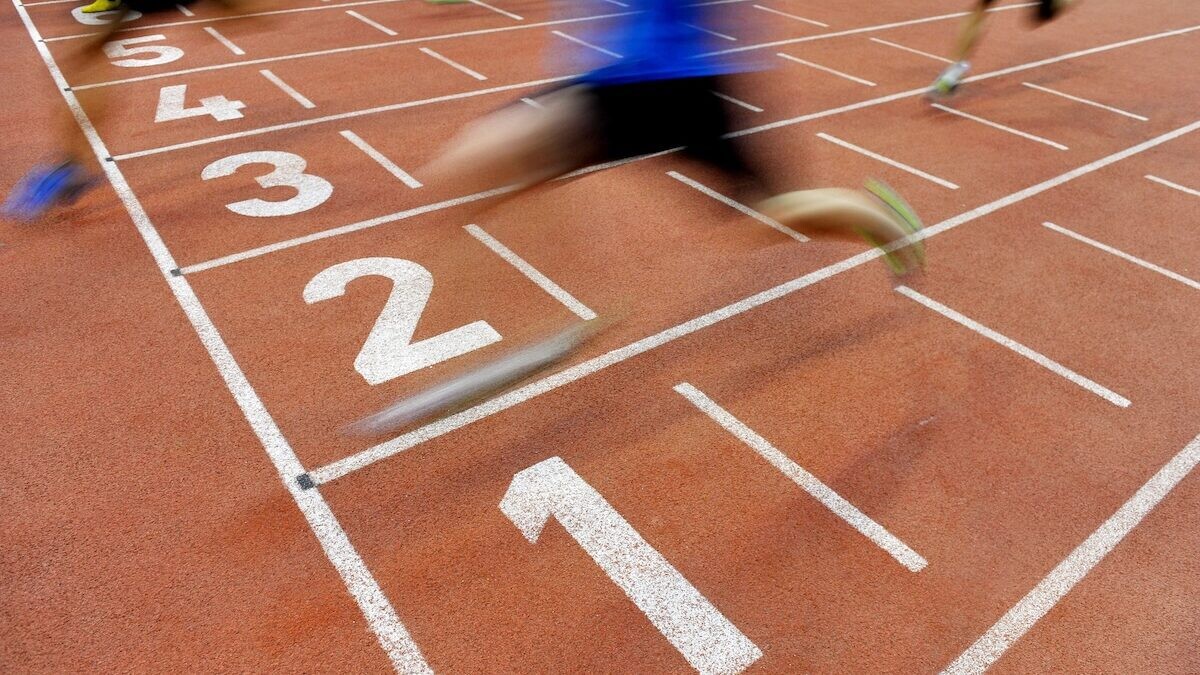
Set 1: 5 x 600m (at 3,000m pace) with 80 seconds rest. Set rest: 5 minutes
Set 2: 4 x 300m (at 1,500m pace) with 90 seconds rest. Set rest: 5 minutes
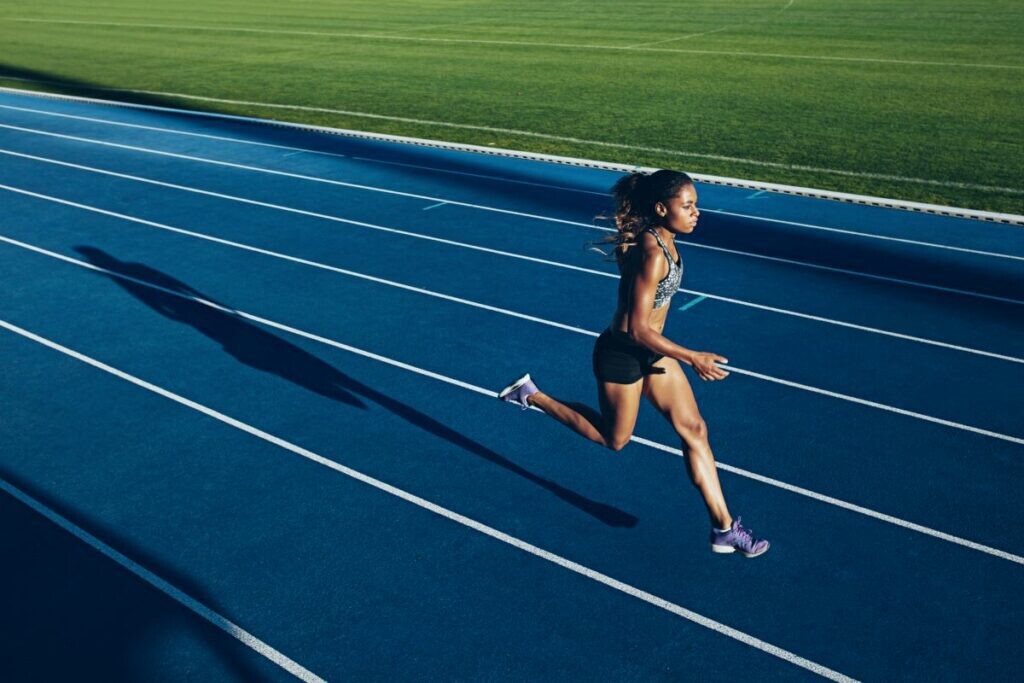
Set 3: 3 x 200m (at 800m pace) with 90 seconds rest.
Drop distance
Set 1: 3 x 800m (beginning at 3,000m pace) with 2 minutes rest. Set rest: 5 minutes.
Set 2: 400m, 300m, 200m with 90 seconds rest. Begin at a faster pace than the 800s, and speed up as the reps shorten. Set rest: 4 minutes.
Set 3: Same as set 2, slightly sped up, if possible.
400 repeats
Set 1: 10 x 400m with 60 seconds rest. Start at 3,000m pace and aim to speed up by a second every other rep. Set rest: 5 minutes.
Set 2: 2 x 200m with 60 seconds rest at 800m pace.
Warmup/cooldown
Follow your 10 to 15 minutes of warmup with some drills and strides on the track–to avoid injury, it’s important to make sure you warm up completely before hopping into your session, especially if you just returned from the winter weather. If your legs feel especially sore or lactic after your final set, conclude your workout with some light, form-focused strides to shake out them out. Cap off the session with a 10- to 15-minute cooldown.
Outdoor/treadmill alternatives
If you don’t have access to an indoor track or don’t feel like running in circles, you can use time and effort-based cues to modify the workout to suit outdoor or treadmill running. Use the pace chart to find out your goal running time for each interval, and aim for time during each rep, instead of distance. If running outside, make sure you find a clear path or road with lots of traction for the fast reps.
3,000m pace: steady, comfortable effort. You should feel relaxed enough to maintain brief conversations with your training partners.
1,500m pace: comfortably hard effort. Speaking is limited to one or two words at a time with training partners.
800m pace: hard, intense effort. Your breathing will be too labored to carry a conversation. (These reps are very short anyway–the chat with your running buddies can wait!)
(01/08/2025) ⚡AMPby Cameron Ormond
Natasha Wodak headlines Canadian elites at 2025 Houston Marathon weekend
The 2025 Chevron Houston Marathon and Half-Marathon on Sunday, Jan. 19, will be a major season opener for a handful of elite Canadians, including Canadian marathon record holder Natasha Wodak. Ten of the nation’s top athletes are set to take on the half-marathon or marathon events.
Women’s half-marathon
Wodak is the sole elite Canadian competitor in the women’s half-marathon event. While she competes primarily in the marathon, the 43-year-old is still familiar with shorter races–she holds a half-marathon personal best of 1:09:41. Wodak is fresh off her first national marathon title at the 2024 Canadian Marathon Championships in October, and took home ninth place in Houston last January.
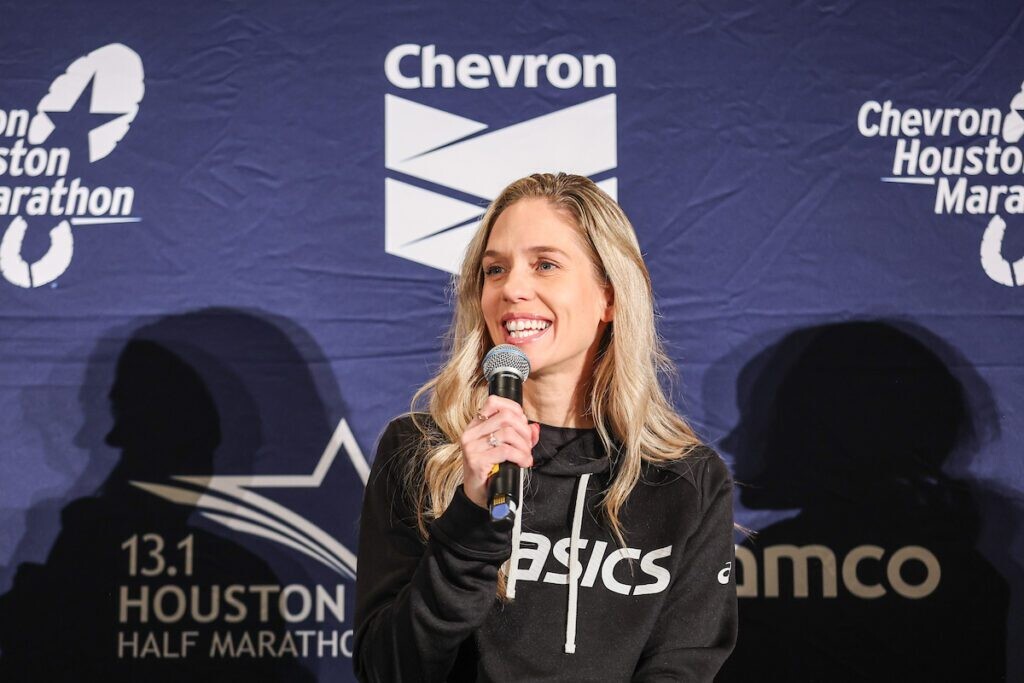
Men’s half-marathon
Four Canadian men will line up for the men’s half-marathon, led by 5K and 10K national record holder Ben Flanagan. The Kitchener, Ont., native holds a personal best of 1:01:00 from 2022, and will be looking to kick off his 2025 season with a strong performance. Paris Olympic 5,000m finalist Thomas Fafard of Quebec will return to Houston after a 12th-place finish in 2024, where he set his half marathon personal best of 1:02:17. Milton, Ont.’s Ben Preisner, Canada’s third-fastest marathoner, will also toe the line after an eight-month hiatus from racing. He holds a personal best of 1:02:42.
Olympic steeplechaser John Gay of Kelowna, B.C., will round out the Canadian elite crew to make his half-marathon debut.
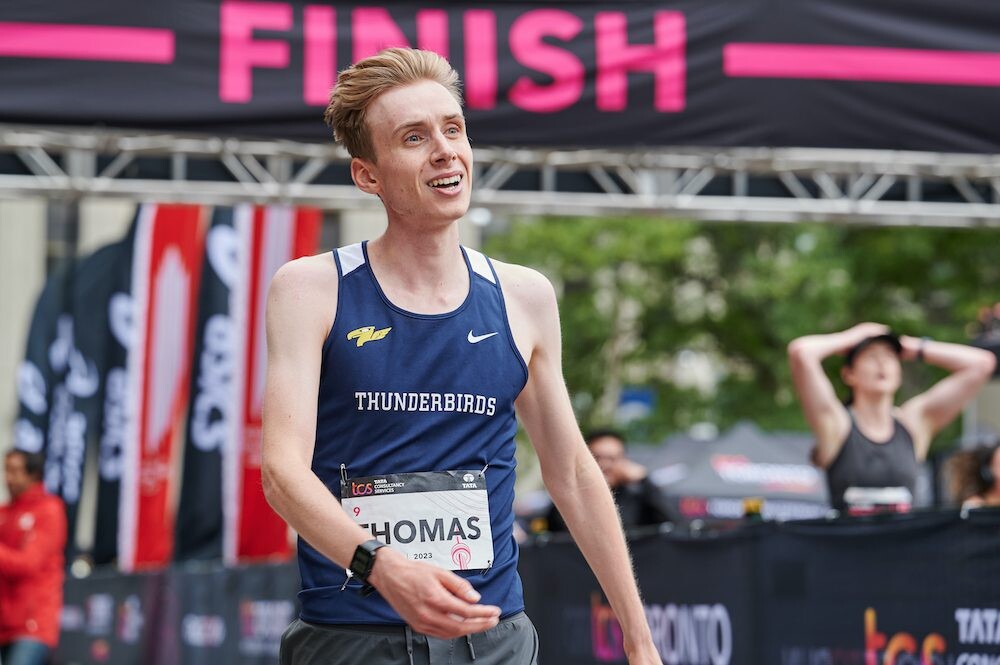
Women’s marathon
Windsor, Ont.’s Dayna Pidhoresky, who holds a best time of 2:29:03, heads to Houston to run her first race since June and first marathon in more than a year. The 38-year-old will be joined by Port Elgin, Ont.’s Rachel Hannah, the 2024 Around the Bay Road Race champion, who recently claimed bronze at the 2024 Canadian XC Championships in November.
Men’s marathon
Thomas Broatch returns to Houston, undoubtedly looking to improve on his top-10 finish from last year’s event, where he set his personal best of 2:11:51. The 26-year-old will be joined by compatriots Andrew Alexander of Toronto and Phil Parrot-Migas of London, Ont., both boasting fresh personal bests from October. Alexander ran 2:14:13 in his debut at the 2024 Canadian Marathon Championships in Toronto, while Parrot-Migas raced to a best of 2:15:32 at the 2024 Chicago Marathon.
(01/08/2025) ⚡AMPby Cameron Ormond
Chevron Houston Marathon
The Chevron Houston Marathon offers participants a unique running experience in America's fourth largest city. The fast, flat, scenic single-loop course has been ranked as the "fastest winter marathon" and "second fastest marathon overall" by Ultimate Guide To Marathons. Additionally, with more than 200,000 spectators annually, the Chevron Houston Marathon enjoys tremendous crowd support. Established in 1972, the Houston Marathon...
more...Jakob Ingebrigtsen shares tips on training indoors during winter
Olympic and world 5,000m champion Jakob Ingebrigtsen has been rewriting distance running records each year of his career. His unique and innovative training techniques, such as the double-threshold method and the strategic avoidance of long runs, have become pivotal components of his regimen. Surprisingly, another key element of his training is the treadmill. In a recent interview with Coros, Ingebrigtsen shared insights on how he maximizes indoor training during the winter.
For Ingebrigtsen, the treadmill isn’t just a winter fallback plan for when it’s too icy or snowy in his home of Sandnes, Norway—it’s a crucial training tool. The 24-year-old says he uses the treadmill extensively for his double threshold sessions, often completing the first workout of his day indoors.
“What I like about the treadmill is that it is far more controlled versus being outdoors,” Ingebrigtsen explains. “I can set a pace and forget it, without dealing with wind, corners, or other outdoor obstacles.”
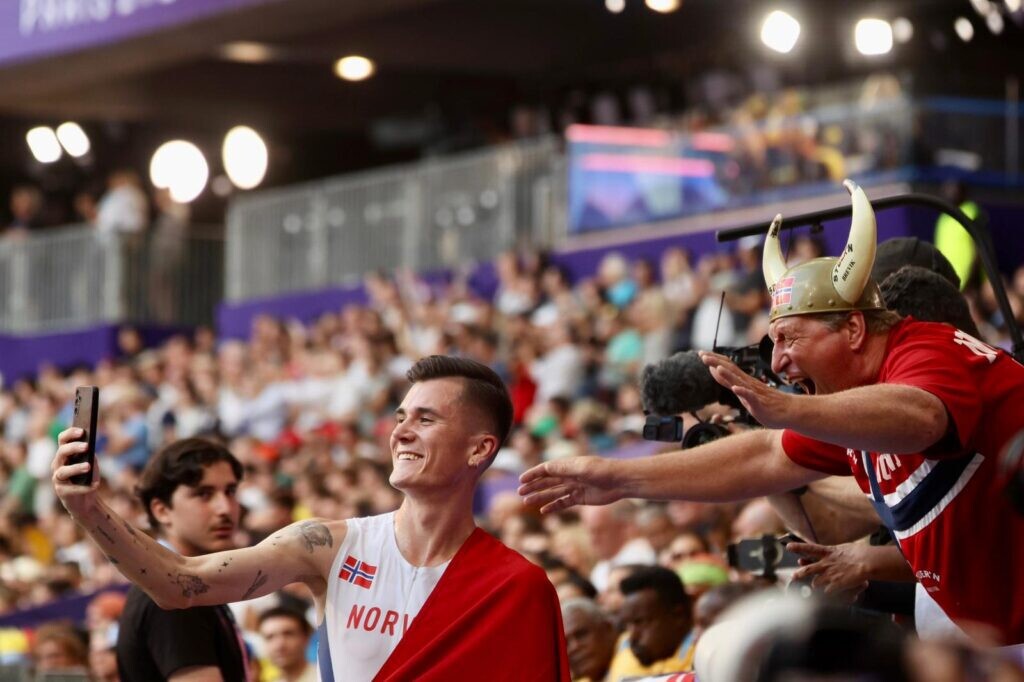
Precision is key for the two-time Olympic champion, who uses the treadmill to hit specific efforts or paces for each of his runs. “On the treadmill, I can closely monitor my heart rate, lactate levels and pace,” he says. “Those three factors, combined with how I feel, guide me to ensure a successful session.”
How he stays motivated
Many runners, including myself, dread the monotony of treadmill training, but Ingebrigtsen finds motivation by approaching each treadmill run with a competitive mindset. “I look at each run as a competition, challenging myself to hit the splits and complete the workout within the parameters,” Ingebrigtsen says.
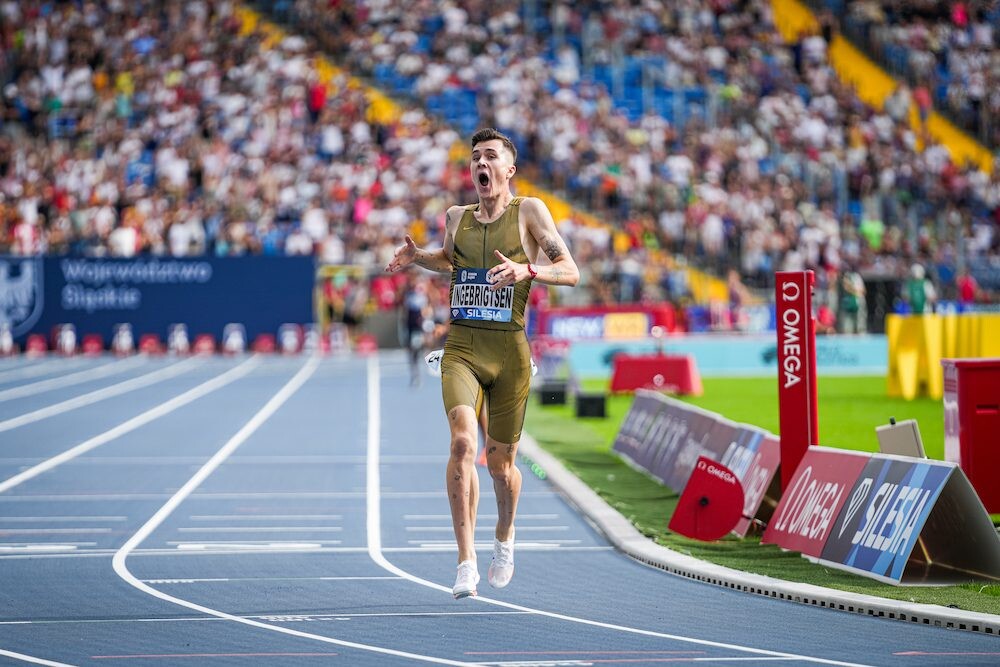
The Norwegian told Coros that his training schedule is planned “well in advance” to give him a clear idea of the work ahead: “I do everything the session requires, because I understand its importance in the long run,” he says. “Motivation isn’t an issue for me—I know it’s not supposed to be fun; it’s supposed to be productive.”
What treadmill training is perfect for
Winter in Norway can be unforgiving, much like in Canada, forcing many runners indoors. Ingebrigtsen says this time is perfect for building his base fitness with high-volume and threshold-focused training.
Ingebrigtsen’s meticulous indoor training allows him to measure his base-building progress precisely,” he says. “I monitor my heart rate, lactate, pace and overall feeling. These metrics let me know if my fitness is improving, and if I’m on track to meet my goals.”
After his 2023-2024 base season was disrupted by an Achilles scare, delaying his outdoor season, the Norwegian says he began his base-building (mileage) phase on the treadmill considerably later. As the weather warms up in Norway and his fitness improves, he’ll transition into his mid-season block, reducing his volume and increasing his speedwork to complement his base.
(01/08/2025) ⚡AMPby Marley Dickinson
‘Look out’ - Michael Johnson makes bold prediction about Sifan Hassan as she eyes marathon history
US sprint legend Michael Johnson is among those who cannot wait to see what Sifan Hassan will do next after the Dutch legend’s recent promise to break new marathon barriers.
American sprint legend Michale Johnson believes Sifan Hassan’s determination will carry her to another historic performance following her promise to run a sub 2:10 marathon.
Hassan is one of the greatest long-distance runners and had a highly successful 2024 season when she won bronze in both 5,000m and 10,000m before crowning it with gold in marathon.
Her gold medal win came just 37 hours after her 10,000m race, showing her remarkable levels of energy and perseverance, and heading into the 2025 season, she wants to become the second woman in history to dip under 2:10, following in the footsteps of Kenya’s Ruth Chepng’etich.

Chepg’entich became the first woman to achieve the feat, previously seen as impossible, when she ran 2:09:56 at last year’s Chicago Marathon, to set a new world record, after breaking Tigist Assefa’s mark of 2:11:53 set in Berlin in 2023.
“Maybe it takes me longer to work hard to achieve it [the sub 2:10 marathon],” Hassan said in a recent interview with Athletics Weekly. “But Ruth Chepng’etich [the reigning world record holder] has shown me it’s possible.”
It is that assurance that makes Johnson, a former world record holder, believe that Hassan could be the next to make marathon history given her determination and ability to take on and succeed in various challenges.
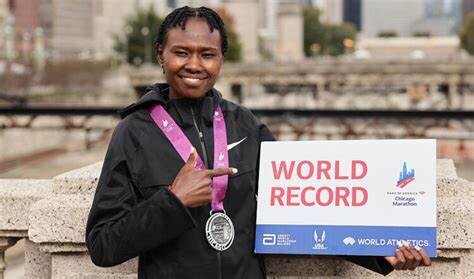
“When Sifan gets curious about something, look out,” Johnson posted on X.
Few can bet against Hassan doing it given what she has shown before, having claimed the London and Chicago marathons in 2023 before her rare hat-trick at the Olympics last year.
Hassan holds the third fastest time in marathon history of 2:13:44, clocked in Chicago two years ago, but that is nearly four minutes away from the world record, meaning she has her work cut out if she has to reach Cheng’etich’s levels.
“I want to see how far females can go. To see what is inside me and what I can do,” Hassan added during the interview.
After such a big year when she was crowned World Athlete of the Year, Hassan will be among the marathoners to beat in 2025 but whether that includes a world record is something fans will have to wait and see.
(01/08/2025) ⚡AMPby Joel Omotto
U.S. Olympic medalist charged with domestic violence
Since his arrest on Thursday evening, Olympic 100m silver medalist Fred Kerley has been charged with two additional felonies unrelated to his altercation with the Miami police, CBS News reports. On Saturday, his wife, Angelica Taylor, filed charges of domestic battery by strangulation and strong-arm robbery for an incident reportedly witnessed by their children in May.
Kerley’s defense team initially brought Taylor in to his bond hearing to speak on his behalf, assuming she would be angered by footage of what many on social media referred to as police brutality against him; but instead she leveled the new charges. “They asked me to be here and speak on his behalf, but I want to proceed with pressing charges on him,” Taylor stated during the court session.
“Seeing the video of this recent incident and how like he was aggressive, it kind of made me think, like, he didn’t feel any remorse for what he did to me,” she added. “I know that I have to think about my children, but he didn’t think about his children in that situation.”
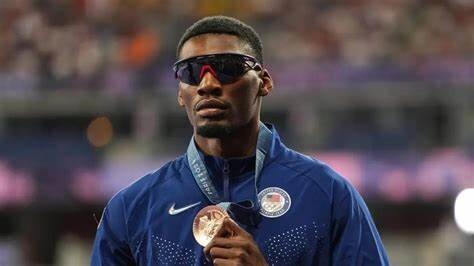
“I thought that he was going to kill me”
During an interview with CBS, Taylor described the alleged incident in detail, noting that in an attempt to grab Taylor’s phone, Kerley wrapped his arm around her neck and choked her. “I’m not going to lie, at some point, I thought that he was going to kill me,” she said. She added that attack took place in front of one of their three children.
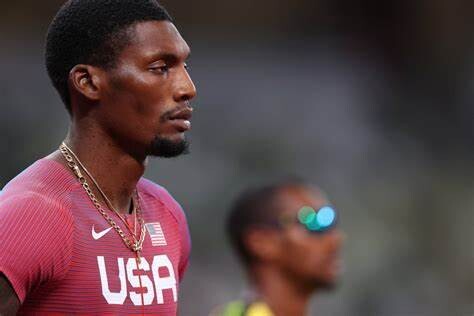
Taylor also claimed to have asked Kerley for a divorce on multiple occasions, and that Kerley refuses to grant her. However, a statement sent to CBS News Miami on Saturday by Kerley’s attorneys reads,”The allegations are made by a highly motivated and angry woman. The idea that Mr. Kerley won’t ‘grant’ her a divorce is just as ridiculous as the allegations against Fred.” Taylor appeared in court using her maiden name, but is also identified as Angelica Kerley.
Kerley’s girlfriend, Cleo Rahman, was also arrested on Thursday after reportedly resisting an officer without violence.
Kerley now faces four charges in total, three of which are felonies.
(01/07/2025) ⚡AMPby Cameron Ormond
Olympic rematch between medalists Jessica Hull and Georgia Bell headlines 2025 NYRR Wanamaker Mile
In January 2024, if Georgia Bell wanted to run in an indoor meet, she had to go to the World Athletics website, look up the meet director’s email address, and beg. Bell and her coaches, Trevor Painter and Jenny Meadows, would have to explain why a 30-year-old with a 4:06 personal best at 1500 meters and no accomplishments to speak of at the senior level deserved a spot on the start line.
In January 2025, meet directors are the ones begging Bell to run in their races. An Olympic bronze medal will do that.

On February 8, Olympic silver medalist Jessica Hull of Australia and Bell will headline the women’s NYRR Wanamaker Mile at the 2025 Millrose Games in New York alongside World Indoor medalists Nikki Hiltz and Emily Mackay of the United States. One year ago, the idea of Bell headlining any race — let alone one of the most glamorous events on the indoor circuit — would have seemed laughable, mainly because most of the running world did not know Bell existed.
“A lot has changed in this past year,” says Bell in an interview with LetsRun.com. “Being invited to be at such a prestigious event like Millrose, I’m just really appreciative and really excited to step on the start line and race there.”

A new year brings a new reality for Bell
Being in-demand by race organizers is just one of many aspects of Bell’s new reality as an Olympic medalist. A year ago, she was working an office job in cybersecurity, waking up at 6 a.m. to cycle before work and heading to the track for a session at 7 p.m. once she had finished. Now Bell is a full-time professional runner. Her shoe contract with Nike offers many benefits, not least of which is the freedom to sleep in until 9 a.m. if she so desires.
Bell’s goals have also evolved significantly over the past 12 months. This time last year, her biggest goal for the year was to make the British team for World Indoors.
“That was kind of my Olympics,” Bell says. “I was like, maybe if I really try, [I could make the team because] I thought a lot of people would be skipping indoors because they’re focusing on Paris in the summer.”
Bell did make the team and finished fourth in the 1500m final in Glasgow, one of many surprises in a breakout season that saw her drop her personal bests from 2:03 in the 800 and 4:06 in the 1500 to 1:56 and 3:52.
In 2025, Bell is thinking much bigger. Once again, she is targeting World Indoors, which will be held in Nanjing, China, from March 21-23, and this time, she wants a medal. Bell also plans on running at the European Indoor Championships in Apeldoorn, the Netherlands (March 6-9), as well as the outdoor World Championships in Tokyo (September 13-21).
”I want to come away with as much hardware as possible,” Bell says. “So that means competing at all of the major championships.”
But first is a trip to the United States, where Bell plans on racing at the New Balance Indoor Grand Prix on February 2 before heading down to Millrose six days later for a race that will look very similar to last year’s Olympics. While Olympic champion Faith Kipyegon will be absent — she has not run a single indoor race during her decorated career — four of the top seven from the women’s 1500m final in Paris will be at Millrose.
(01/07/2025) ⚡AMPby Jonathan Gault
NYRR Millrose Games
The Pinnacle of Indoor Track & Field The NYRR Millrose Games, first held in 1908, remains the premier indoor track and field competition in the United States. The 2025 edition will once again bring the world’s top professional, collegiate, and high school athletes to New York City for a day of thrilling competition. Hosted at the New Balance Track &...
more...Ethiopian runner shatters marathon course record in a speedsuit
It’s no secret that you want to be as light and comfortable as possible for your marathon, which is why most male marathoners opt for the singlet and split shorts (or half tights) combo on race day. However, Ethiopia’s Dawit Wolde took a different approach at Sunday’s 2025 Xiamen Marathon in Xiamen City, China, winning in a new course record of 2:06:06 while wearing a one-piece speedsuit. Running pundits are saying it’s possibly the fastest marathon ever recorded in a speed suit.
Speedsuits are unusual for road racing as they are typically designed for faster track races like the 100m or the long jump. The purpose of a speedsuit is to reduce air resistance, allowing athletes to move more efficiently through the air without their clothing holding them back. This can lead to slightly faster times by minimizing drag. However, in a marathon, a speedsuit could potentially cause more harm than good, especially if the runner experiences any bowel malfunctions or needs a quick bathroom stop.
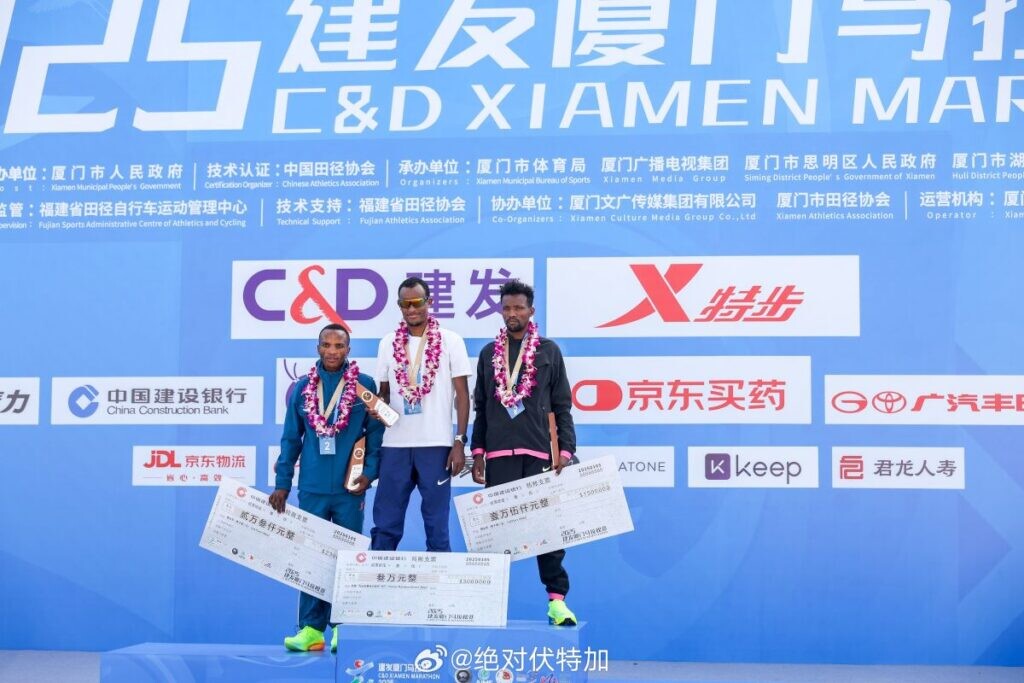
For Wolde, the speedsuit didn’t seem to be an issue, as he flew to a new Xiamen course record, winning the race by 12 seconds over Lesotho’s Tebello Ramakongoana, who ran a national record of 2:06:18. Ramakongoana trains in Flagstaff, Ariz., under American marathon coach James McKirdy, and he also finished seventh in the men’s marathon at the 2024 Paris Olympic Games.
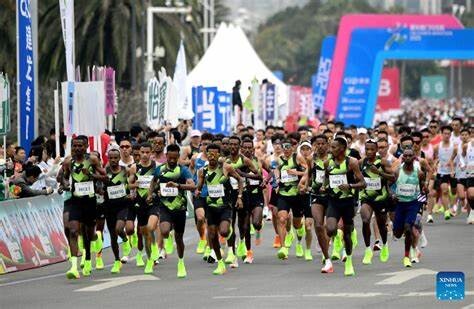
Last year’s champion, Asefa Boki Kebebe, rounded out the podium for third in 2:06:32.
It was an Ethiopian sweep as the women’s race saw Ruti Aga rise to the top once again in China. The 2019 Tokyo Marathon champion won the race in a course record of 2:18:46, just half a minute shy of her personal best set at the Dongying Marathon in 2023. The 30-year-old now owns the two fastest women’s marathon performances ever achieved in China.
(01/07/2025) ⚡AMPby Marley Dickinson
CD XIAMEN INTERNATIONAL MARATHON
The C&D Xiamen International Marathon is an annual marathon race held in January in the coastal city of Xiamen in Fujian province, People’s Republic of China. Every January, the first medal of marathon race around the world is awarded here. The race has become a golden name card of Xiamen, showing its splendor to the whole world.It is one of...
more...Former world record holder coming out of retirement to run Boston Marathon
It’s been over a decade since former women’s marathon world record holder Paula Radcliffe ran her last marathon, but the 51-year-old says she’s ready to make her awaited return. Radcliffe says she intends to run the 2025 Tokyo Marathon and the 2025 Boston Marathon seven weeks later.
On Monday, Radcliffe announced her comeback on her newest podcast, Paula’s Marathon Run Club, which she co-hosts with two-time British Olympic marathoner Chris Thompson.
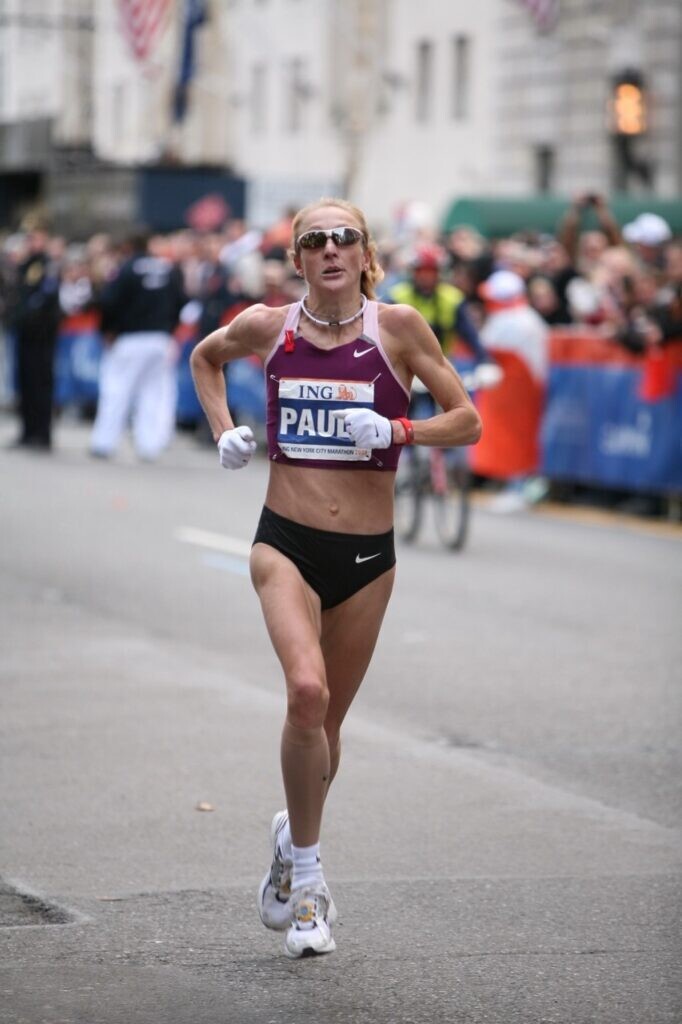
Radcliffe is the most decorated British female marathoner in history, having won both the London and New York marathons three times in her career. She is a seven-time Abbott World Marathon Major champion, and her 2:15:25 from the 2003 London Marathon still stands as the British marathon record. She held the world record for 16 years until Kenya’s Brigid Kosgei broke the mark in 2019.
The 51-year-old hasn’t announced her specific goals for either race yet, but it will be interesting to see if she still has the speed in her legs. Her last marathon came in 2015 in London, where she ran 2:36:55, winning her W40-44 age category and the masters division at the time. Despite it being 10 years ago, it will be intriguing to see if she can still run fast and challenge the British W50+ masters record of 2:47:44.
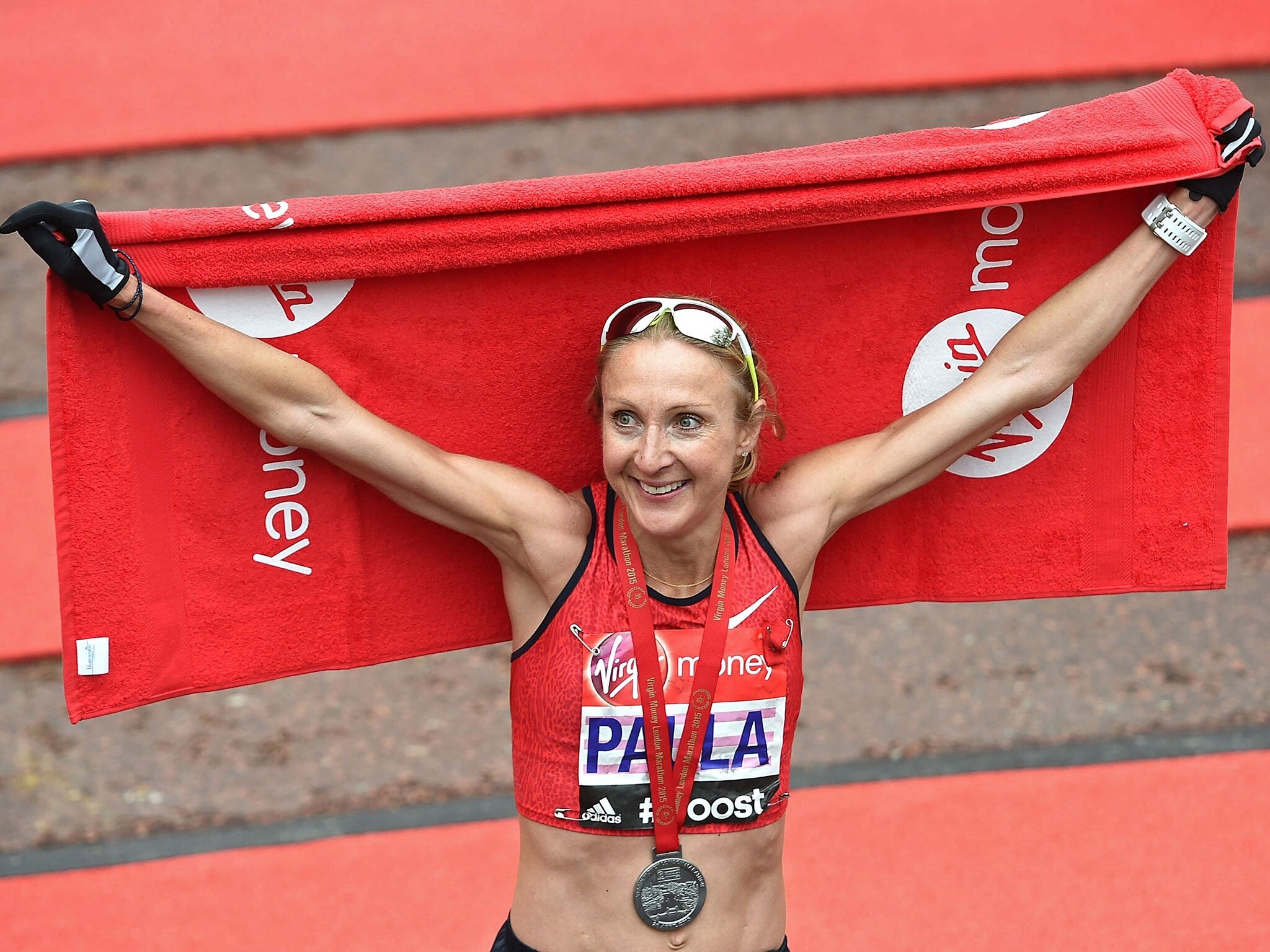
The 2025 Tokyo Marathon is scheduled for March 2, and the 2025 Boston Marathon is seven weeks later on Monday, April 21.
The weekend after Boston, Radcliffe revealed she will be heading to London to cheer on her daughter Isla as she makes her marathon debut. Isla will be running the race for charity, raising funds for Children with Cancer UK, which supported her family after she was diagnosed with cancer at age 13.
(01/07/2025) ⚡AMPby Marley Dickinson
Boston Marathon
Among the nation’s oldest athletic clubs, the B.A.A. was established in 1887, and, in 1896, more than half of the U.S. Olympic Team at the first modern games was composed of B.A.A. club members. The Olympic Games provided the inspiration for the first Boston Marathon, which culminated the B.A.A. Games on April 19, 1897. John J. McDermott emerged from a...
more...Vintage Olympic track and field gold medal being auctioned for $185,000
The rare gold medal is from the men's 110m hurdles at the 1904 Games in St. Louis.
If you would like to own an extremely rare piece of Olympic history, it will likely come at a cost. Boston’s RR Auction Co. is auctioning the gold medal from the 1904 Olympic Games in St. Louis in the men’s 110m hurdles. Originally priced at US$150,000, the bidding has already increased by almost US$35,000 since it was listed in mid-December.
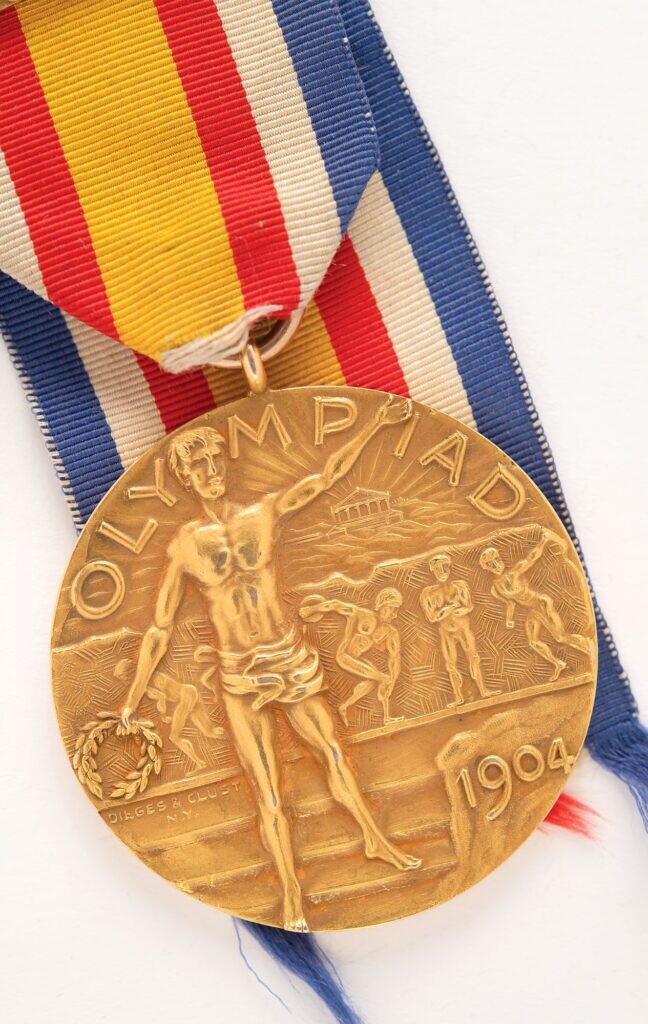
The St. Louis Games of 1904 were significant in Olympic history as the first Games where prize medals were presented in gold, silver, and bronze to first, second, and third place winners—a tradition that continues to this day. Any winner’s medal from the 1904 Olympics is exceedingly rare, ranking among the most elusive of all Olympic prizes.
The Games were one of the main attractions at the 1904 World’s Fair, which drew 19.7 million attendees on a 124-acre site. The Olympic events were dominated by the U.S., who won 76 of the 97 medals across 16 sports, including a sweep in the men’s 110m hurdles. U.S. national champion Fred Schule won the gold in 16 seconds flat.

Now, 121 years later, the world record for the 110m hurdles stands at 12.80 seconds, set by American Aries Merritt at the Brussels Diamond League in 2012.
According to the RR Auction website, the medal is in amazing condition for its age and includes most of the original ribbon and the case it came in. The medal also bears the event’s name, which varies with each edition of the Games. Each host city has the creative freedom to design its medals, which can result in a variety of styles and/or distinct features.
The 1904 Games marked the first time the U.S. hosted the Olympics, which they have since hosted seven more times (four Summer and four Winter Games). They will host their ninth and tenth Olympics in Los Angeles in 2028 and Salt Lake City in 2034.
The bidding for the medal will end on Jan. 16.
(01/06/2025) ⚡AMPby Marley Dickinson
Ethiopia’s Mengesha wins Hong Kong-Zhuhai-Macau Bridge race
The Bank of China Hong Kong-Zuhai-Macau Bridge Half Marathon made a considerable improvement on its flawed previous edition as it was praised by elite and amateur runners on Sunday.
After criticism following the inaugural race 14 months ago, the logistical aspects were as important as the identities of the winners at this second event.
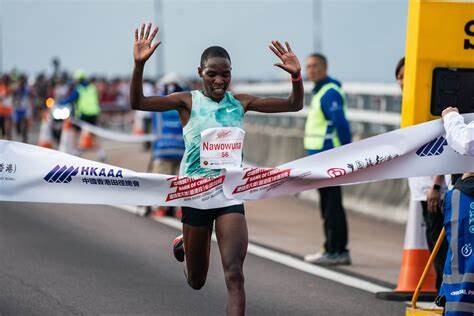
Handily for organizers, the first man and woman over the line, Milkesa Mengesha and Grace Nawowuna, were gushing in their assessments of the race, which is staged inside a border checkpoint at the Hong Kong end of the world’s longest sea-crossing bridge.
Ethiopian Mengesha, winner of last year’s Berlin Marathon, completed the 13.1 miles (21km) in one hour, one minute and 27 seconds, three seconds ahead of Patrick Mosin, from Kenya, who finished in 1:01.30.
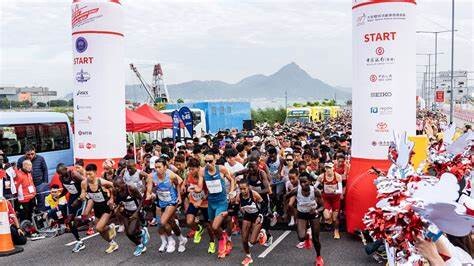
“I am so happy to win here, the level of everything has been perfect, even above my expectations,” Mengesha said.
The 21-year-old Kenyan Nawowuna clocked 1:07.56, ahead of compatriot Sheila Chelangat in 1:08.06. She said the mixed reviews of November 2023 had not been a factor when deciding whether to compete.
“The organisation was everything we could have asked for and Hong Kong is beautiful,” Nawowuna said.
Complaints following the debut race focused on a scarcity of toilets, delays transporting runners between their AsiaWorld-Expo assembly point and the course, an absence of food and shortage of drink, and a pre-race drop-off about a 1.5km walk from the start line.
Simon Yeung Sai-mo, chairman of the organising committee, said a backlash from “runners and the media” had prompted a host of changes.
“There were more than 70 toilets in the starting and finishing areas,” Yeung said. “The drop-off point was fewer than 500 metres from the start line and we provided food and drinks for runners.”
As they walked to the start, flanked by rows of portable toilets, some of the 8,000 runners were heard saying lessons had been learned. Out on the course, there were six water stations, with food available from those on the homeward straight.
The start was watched by government officials including Secretary for Culture, Sports and Tourism Rosanna Law Shuk-pui.
Fleets of buses were waiting to take runners back to AsiaWorld-Expo, where they were greeted with gift bags containing a banana, crackers, water and a towel, before collecting their bags.
Amateur runner Rick Yam said: “I heard a lot about last year, but there isn’t anything I can say that needs improving.
“We could see the start line when we got off the bus and the transport was good. It can’t be as easy as some other races, because we’re in an area where there is usually restricted access. Overall, it was pretty good.”
Fellow runner Alan Zagury said the toilets and shuttle bus service were faultless, but he would not be back for future editions “because it is a huge logistical headache”. “I left home at 4.30am, it’s now past 9.30am, which is far too much for a half-marathon,” he said.
Zagury also said the 45-minute wait in a confined area before starting was “too long and meant we could not warm-up”.
Given the race’s location, however, hanging around before starting was the nature of the beast.
Virginia Lo Ying-chiu, the first Hong Kong woman home in 1:16.45, said it had been a “privilege to be involved”. “I think the problems were solved,” she said. “We didn’t need to wait for toilets, or walk to the start line. The arrangement is much better.”
Japan’s 2018 Boston Marathon winner, Yuki Kawauchi, finished seventh in 1:07.52 before being mobbed for autographs and selfies. He said it had been a “good decision” to compete and rated the event above his own country’s Chiba Aqualine Marathon, where runners race on the bridge section of the Tokyo Bay Aqua-Line.
Yeung said the race would return next year, on condition of government support, but the plan was to make it “better rather than bigger”.
“If we increased numbers, it would not be a good experience for runners,” he said. “We can’t have any more, because we have to give the bridge back to the government as soon as possible.”
After assembling a strong international field, organisers were rewarded when World Athletics designated the event a Gold Label Road Race, one rung beneath its top-tier Platinum Label races.
(01/06/2025) ⚡AMPby Paul McNamara
Nearly 100 elite athletes of 25 nationalities will compete for victory at the 10K Valencia
On January 12, thousands of runners will fly through the fastest 10K course in the world. Dominic Lobalu, Isaac Kimeli and Andreas Almgren arrive in Valencia with the goal of breaking the European 10K record.
The 10K Valencia Ibercaja by Kiprun is finalizing the details to offer again a great show in what will be its 17th edition this coming January 12. The race, which closed its registration last December 22 after exhausting the available numbers, will feature a cast of elite athletes of up to 25 nationalities.
According to José Enrique Muñoz Acuña, Coordinator of Elite athletes and sports director of the race, the goal this year "is to continue the level of sporting demand that has the 10K Valencia as the best 10K in Spain and holder of world records for both men and women". "This January 12 we will once again experience an event of the highest level, in which -if the conditions respect us- athletes can meet their goals and we can once again see men under 27 minutes and women under 30 minutes," he added.

As usual in the 10K Valencia, in men "we find a list that stands out for the good level of European athletes, who come with the aim of breaking the European record", which is currently held by Etienne Daguinos (27:04, Lille 2024). For this "there are three clear favorites: Dominic Lobalu (Switzerland), Isaac Kimeli (Belgium) and Andreas Almgren (Sweden), who will have a hare to launch the race to go under 27 minutes."
As for the African armada, several athletes stand out, such as the Ethiopians Telahun Bekele, Getnet Wale and the debutant in the distance Samuel Tefera, double world indoor 1,500ml champion. In addition to many other athletes who can opt for victory, such as Kenyans Daniel Kinyanjui, Vincent Langat or Meshack Lelgut, "In total, we have 32 men with records under28 minutes".
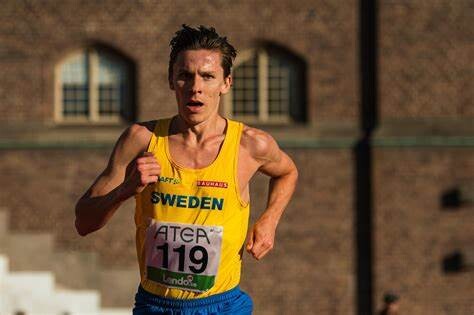
As for the Spanish representation, several names stand out: Abdessamad Oukhelfen, current national record holder of the distance with 27:44 made last January on this circuit, Daniel Arce, who comes from running very fast in León, Juan A. Pérez Moreno, Víctor Ruiz and Aarón Las Heras. It is worth mentioning the Uruguayan athlete living in Spain, Santiago Catrofe, who comes to Valencia with the intention of improving the South American AR, which is currently held by the Argentinean Antonio Silio (27:51, 1990).
Women, going all out
In the women's field, three clear favorites stand out: Fotyen Tesfay (Ethiopia), Christine Chesiro (Kenya) and the young and talented Ethiopian athlete Asayech Ayichew, who won the Great Ethiopian Run a few weeks ago. "In addition to them we have to add a great cast of African athletes. They all come to Valencia to improve their records".
In European terms, several athletes stand out, such as Slovenia's Klara Lukan, France's Mekdes Woldu and England's Abbie Donnelly, all of them looking to break their current records.
In the Spanish field, we have two athletes who arrive in a similar form as Alicia Berzosa and Laura Priego, the clear favorites to win in the Spanish category without forgetting the athlete of the Serrano Athletics Club, Maria Jose Perez.
It is worth remembering that the 10K Valencia, which achieved the World Record in men in 2020 (26:24), managed to break all forecasts in the last edition when the athlete Agnes Jebet beat the 10K world record with a 28:46. On a national level, Abdessamad Oukhelfen won the Spanish men's 10K record with a time of 27:44.
(01/06/2025) ⚡AMP10k Valencia Trinidad Alfonso
Around the corner we have one more edition of the 10K Valencia Ibercaja, organized one more year by the C. 10K VALENCIA Athletics premiering the running season in Valencia. It is a massive urban race with more than 3,000 registered annually of 10 kilometers, where the maximum duration of the test will be 1 hour 40 minutes (100 minutes). The...
more...'I want to see how far females can go'- Sifan Hassan eyes breaking marathon barriers inspired by Ruth Chepng'etich
Sifan Hassan aims to break the marathon barriers, inspired by Ruth Chepng’etich’s world record of 2:09:56.
Dutch woman Sifan Hassan knows no boundaries when it comes to being an athlete and she has recently opened up about running under 2:10 in a marathon.
The reigning Olympic marathon champion, in an interview with Athletics Weekly, revealed that Ruth Chepng’etich has proved that is possible to clock fast times and she believes that someday, she will be able to achieve greater milestones when it comes to time.
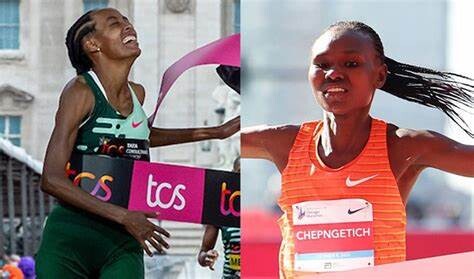
The former Chicago Marathon champion is currently the third fastest marathoner in the world with her time of 2:13:44 that she set at the 2023 edition of the event.
Chepng’etich is the fastest marathoner in the world, having the world record time of 2:09:56. Ethiopia’s Tigst Assefa is second with a time of 2:11:53 that she set at the 2023 Berlin Marathon. Sifan is training hard and she hopes that at some point, she will be able to achieve that milestone.
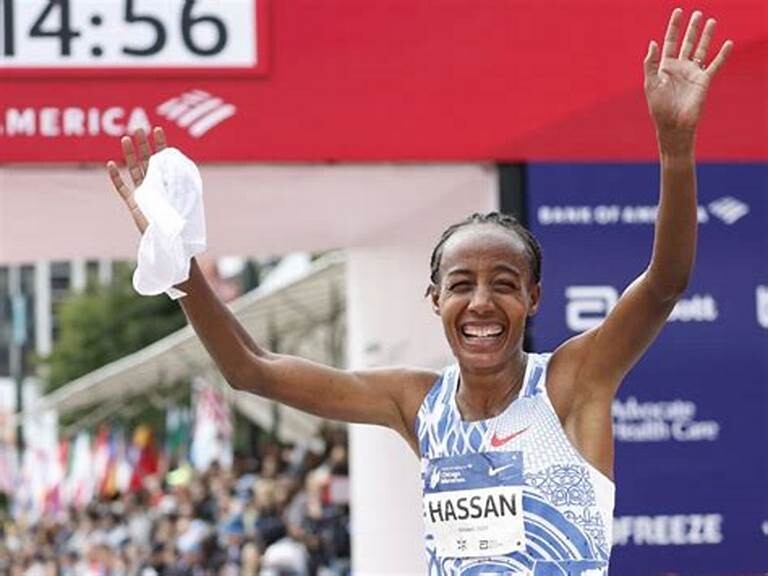
“Maybe, it takes me longer to work hard to achieve it (sub 2:10 marathon) but Ruth Chepng’etich has shown me it’s possible. We will now try and hit the thing,” Sifan said.
"I want to see how far females can go, to see what is inside me and what I can do."
Sifan made her full marathon debut at the 2023 Chicago Marathon where she stunned a strong field which had defending champion Ruth Chepng’etich to take the win.
She was fresh from competing at the 2022 World Championships where she took bronze in the 1500m and silver in the 5000m. in the 10,000m Sifan finished 11th.
In 2024, she experienced one of the most successful seasons, starting out with a fourth-place finish at the Tokyo Marathon before she began preparations for the Paris Olympic Games. At the Olympic Games, she finished third in both the 5000m and 10,000m.
Sifan Hassan rounded up her season with a win in the women’s Olympic marathon. She was honored by World Athletics following her successful season, winning the women’s out of stadium category before being named as women’s World Athlete of the Year.
(01/06/2025) ⚡AMPby Abigael Wafula
How Many Steps Should You Actually Take in a Day to Boost Your Health—or Your Fitness?
We explain how to set your daily step goal, based on what you’re looking to achieve.
Because smartphones, watches, and fitness trackers easily track step counts, most of us are aware of roughly how many steps we take every day. Even non-exercisers may try to hit a daily step goal. Via mostly good press, not science, 10,000 steps is a common goal many focus on as a marker of movement success.

While 10,000 is an easy-to-remember number, like any other fitness metric, your daily step goal should likely be personal and based on your specific goals, such as improving general health metrics or losing weight.
To turn your goal into a daily step count, though, you need to remember that exercise recommendations are given in minutes, not steps. Likewise, every person’s stride length and pace is not only specific to them, but highly variable, based on where they are walking and if they are walking alone or in a group.
“The American College of Sports Medicine (ACSM) recommends at least 150 minutes of moderate-intensity aerobic exercise per week, or 60 minutes of vigorous, which can be achieved by walking for many individuals,” Kaitlyn Baird, C.S.C.S, exercise physiologist at the Hospital for Special Surgery in New York City, tells Runner’s World.
As for point number two, according to Harvard, a brisk walker typically takes about 100 steps per minute. Therefore, a 20-minute brisk walk is likely equal to about 2,000 steps.
To help you find the right target, experts explain how to tailor your daily step count for specific health, fitness, and running habits.
Exactly How Many Steps You Need to Take Every Day, Based on Your Goals
If You’re Walking for Health... Aim for 8,000 Steps per Day
Being sedentary, or taking 4,000 steps a day or fewer, according to the NIH, is linked to poor health outcomes, so if you want to improve your overall health, taking anywhere from 7,500 to 10,000 steps daily is a great starting point. This range supports cardiovascular health, and can reduce the risks associated with prolonged sitting, like metabolic syndrome and cognitive or heart disease, Joshua Rieders, DPT, C.S.C.S., area director
Consider turning those breaks into a short workout routine, such as doing jumping jacks or going up and down stairs. Vigorous exercise lasting less than one minute and performed periodically throughout the day can improve cardiorespiratory fitness and other metrics of cardiometabolic health in previously inactive adults, according to a 2022 paper in Exercise and Sport Sciences Reviews.
If You’re Walking for Improve Fitness... Aim for 10,000 Steps a Day
When walking is your primary fitness activity, it’s not just about how many steps you take, but how you do it. ACSM’s fitness recommendation are achievable for most people, says Baird, and you can use walking to reach those goals.
One key of the ACSM guidelines is the variety of intensity levels. Moderate-intensity exercise means you can talk, but not sing, while vigorous means no talking or singing, but a little more huffing and puffing.
Increasing your walking intensity—by picking up the pace, adding inclines, or incorporating intervals—can make a big difference. “Higher-intensity walking (at a faster pace and/or uphill) can provide more significant benefits in less time due to the increased caloric demand, allowing you to meet your goals more efficiently,” says Rieders.
If
If You Run, Don’t Worry about Steps, but Walk for Recovery
Runners who log three to six miles a few times a week likely already exceed 10,000 steps on many days. “Walking should supplement your workout, particularly for individuals who are looking to maintain general health,” Rieders adds.
Still, runners should consider using walking as a form of active recovery both after their runs and on days when they don’t run. “Running would be your primary modality here, and walking could serve to reduce sedentary time and help with recovery,” says Baird. A leisurely walk can ease muscle soreness and prevent the stiffness that often follows higher-impact workouts.
Again, consider breaking up long periods of inactivity with short walks, for the best health results, Rieders says.
Training for a half or full marathon? As mentioned, a mile likely contains anywhere between 2,000 and 3,000 steps, so on your long run days, you are more than hitting the mark. Nevertheless, Rieders suggests taking some walking steps rather than being sedentary for recovery, but don’t worry about the exact number.
Your Best Step Goal—Count Step Breaks and Intensity
Instead of focusing on your daily step count, a more helpful goal
(01/05/2025) ⚡AMPPrison marathon documentary is changing lives behind bars
In 2024, 26.2 to Life, a powerful documentary by filmmaker Christine Yoo, brought the story of San Quentin’s 1,000 Mile Club to audiences worldwide. The film follows incarcerated men training for the San Quentin Marathon, held each year on a quarter-mile loop within the prison yard. Beyond earning critical praise, the documentary inspired change—spurring the creation of new prison running clubs and starting discussions about rehabilitation. Plans for 2025 are already underway, and the impact of 26.2 to Life continues to grow.
Reaching audiences across the world
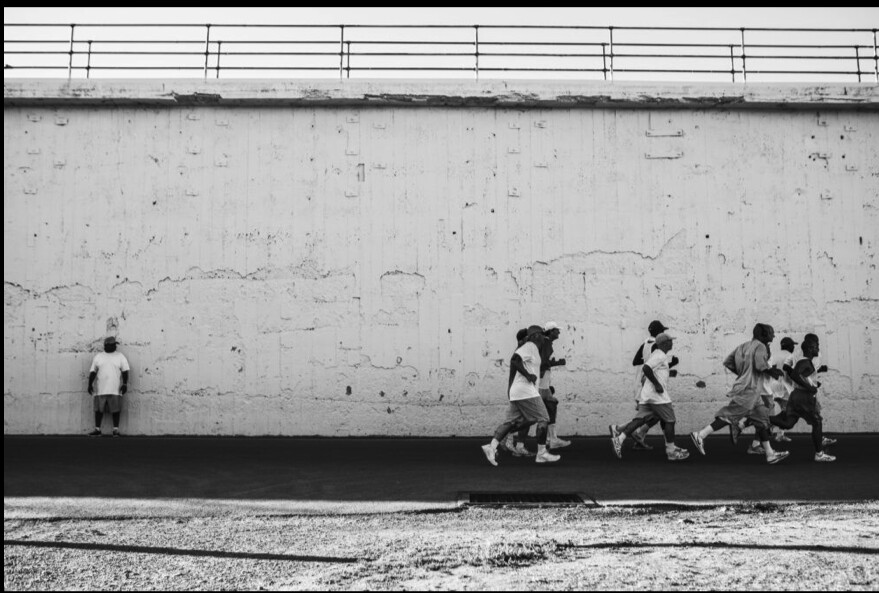
The 1,000 Mile Club evolved after a small group of volunteer coaches was permitted to start a running club in the prison almost 18 years ago, with the idea being that interested inmates could rack up 1,000 miles during their period of incarceration. 26.2 to Life had its broadcast debut on ESPN, bringing the story of the 1,000 Mile Club into living rooms across the U.S. The film is now streaming on ESPN+ and continues to air on ESPN2. Its global reach expanded with in-flight screenings on four different airlines, making the film accessible to more than 300 million passengers.
26.2 to Life has also received critical acclaim, with Best Directing and Best Producing nominations at the Women’s Image Awards. In February, the story will cross international borders with its BBC premiere in the U.K.
Inspiring transformation behind bars
Beyond its cinematic success, 26.2 to Life has created change. This fall, the film was screened at prisons in North Dakota, Oregon, California and Hawaii, offering hope to incarcerated individuals. As one volunteer at Columbia River Correctional Center noted, “Your film offers a powerful message of hope and a vision for possible changes in the penal system.”
The documentary has also inspired new prison running clubs. Seven clubs have been established across the U.S., with six more in the works. To support these efforts, the team developed a free handbook to guide the creation of new clubs, offering practical advice, sample workouts and stories of transformation. You can download a copy of their handbook here.
Looking ahead
The momentum isn’t slowing down. Starting in 2025, 26.2 to Life will become required viewing for all 43,000 employees of the California Department of Corrections and Rehabilitation as part of their annual training. In January, the film will also be showcased at the U.S. 9th Circuit Court of Appeals’ annual conference to foster discussions among judges about rehabilitation and change.
The mission to inspire continues with plans to bring the film to more prisons across the country and to expand the distribution of the 1000 Mile Club Handbook.
(01/05/2025) ⚡AMP

